- Skip to primary navigation
- Skip to main content
- Skip to primary sidebar
- Skip to footer
Green Global Travel
World's largest independently owned Ecotourism / Green Travel / Sustainable Travel / Animal & Wildlife Conservation site. We share transformative Responsible Travel, Sustainable Living & Going Green Tips that make a positive impact.

The Effects of Mass Tourism (How Overtourism is Destroying 30+ Destinations)
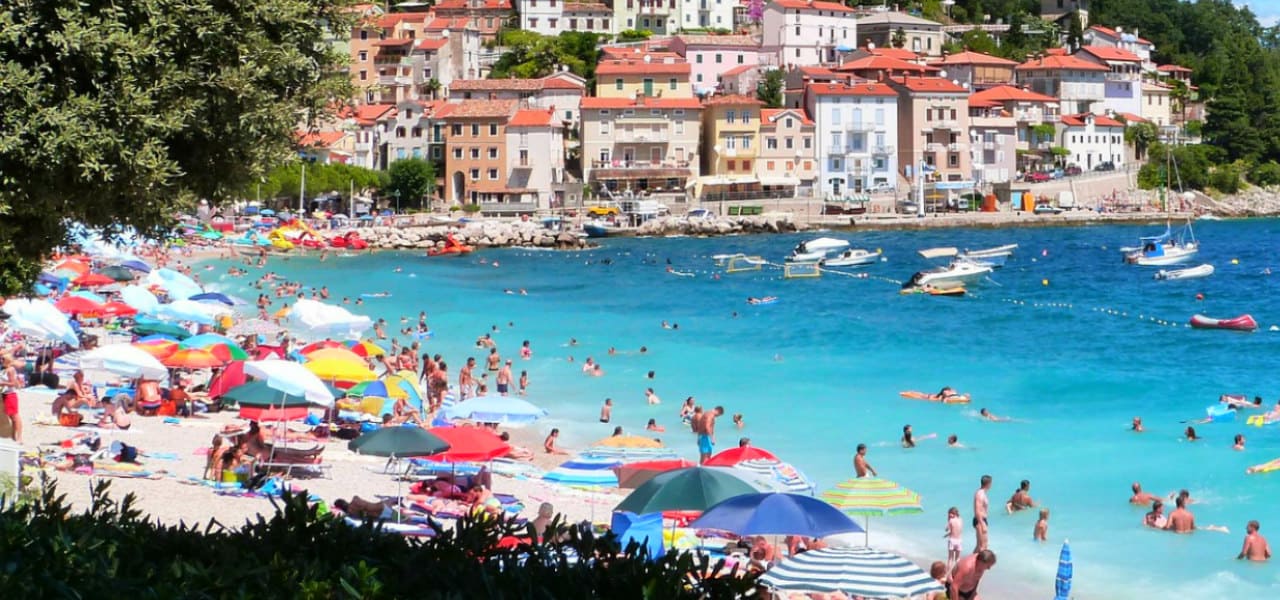
Disclaimer: This post may contain affiliate links. All hosted affiliate links follow our editorial policies .
Mass Tourism was arguably the most significant travel trend of 2017. Its downside, “overtourism”– the point at which the needs of tourism become unsustainable for a given destination– made headlines all across the world.
“Overtourism plagues great destinations,” claimed sustainable travel expert Jonathan Tourtellot in National Geographic . “Mass Tourism is at a tipping point- but we’re all part of the problem,” wrote Martin Kettle in The Guardian .
In an Associated Press piece on “The Curse of Overtourism,” Pan Pylas examined how European destinations such as Barcelona, Dubrovnik, and Venice are struggling to deal with the negative impacts of tourism.
Here, we’ll examine what mass tourism is, why it’s so popular, and how it is negatively impacting local communities in some of the world’s most beloved travel destinations.
THE DEFINITION OF MASS TOURISM
Mass tourism was originally developed in the late 1800s in the UK by Thomas Cook, who pioneered the concept of affordable group travel tours. By establishing relationships between tour operators, transportation companies, and hotels, Cook was able to get deep volume discounts on travel services and pass those savings along to its customers.
- In modern times, the phrase often refers to budget-friendly package tours, cheap flights, all-inclusive resorts, and cruises. In general, it allows vast numbers of travelers to descend on a given destination in a relatively short time, usually during peak season.
- On the positive side, this extreme influx of tourists can help to generate jobs, stimulate the economy, and develop much-needed infrastructure.
- On the downside, many of these jobs are not given to locals, much of the revenue is kept by outside investors, and the overwhelming tourist crowds often keep locals from being able to enjoy the infrastructure benefits.
- It is inarguably the most popular form of tourism. But most responsible travel experts consider it a shallow, exploitative, and unsustainable form of travel , consuming huge amounts of resources while giving little back to the local community.
To understand why, let’s take a look at how overtourism is affecting 30+ different destinations all around the world.
THE NEGATIVE IMPACTS OF OVERTOURISM
Tourism in Africa Tourism in Asia Tourism in Australia Tourism in Europe Tourism in Central/South America Tourism in North America
TOURISM IN AFRICA
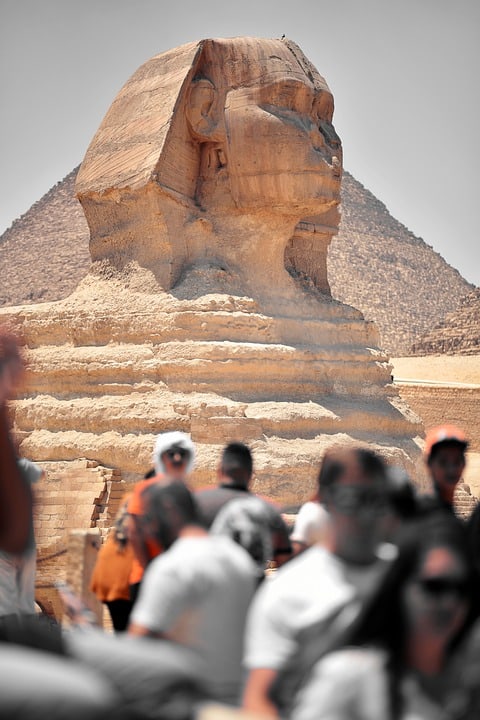
CAIRO/GIZA (Egypt)
The Cairo area is home to some of the oldest, most impressive tourist attractions in the world, from King Tut’s famous burial mask at the Egyptian Museum to the great Pyramids of Giza.
But instead of being a welcoming city that invites travelers to explore the culture and wonder of this ancient capital, mass tourism has largely taken over Cairo and Giza.
As a result, these relatively small sites have been inundated with hordes of camera-wielding tour groups stopping by on day trips from their resorts in Sharm El Sheik.
When I visited Cairo a few years ago, dozens of air-conditioned tour buses swarmed around the Giza plateau, the museum, and tourist hotspots like Khan El Khalili every single day.
They congested the roads around these attractions even more than usual, attracting exploitative cottage industries such as touts, papyrus factory tours, and unethical camel rides. The result has created a massive work and monetary imbalance in the city.
More recently, the tourism industry in and around Cairo has suffered a massive blow. Overblown safety warnings and fears have caused the local economy to crash. As Egyptian tourism starts to recover, Cairo and Giza should take a step back and learn from their past mistakes.
This is their chance to embrace responsible tourism, controlling visitor numbers and encouraging travelers to explore the ancient history and culture of the whole area, not just a few tourist hotspots. –Mike Huxley of Bemused Backpacker
MARRAKECH (Morocco)
Just 10 years ago Marrakech was a city of around 500,000 people. Today that number sits above 1.2 million. In 2008, less than 3 million tourists visited the entire country of Morocco. Last year that number was nearly 11 million, and a vast majority of them traveled to/through Marrakech.
This huge surge in the numbers of tourists and residents has done two things to my home city. First, it’s brought many jobs and much-needed income. Second, it’s put a strain on resources and infrastructure in a way that has proven difficult to manage.
Many longtime Marrakech residents felt an initial benefit from this influx of tourism when they were able to sell their properties and get work. But today the cost of basic goods, rents, and more rises while salaries remain relatively stagnant.
Tourists expect Marrakech to be a cheap destination, thanks to the subsidized low-cost carriers that fly into the city daily. This has a trickle-down effect on the economy. People need to earn more money now than they did a few years ago to maintain even a basic standard of life.
A walk through the medina today is met by hundreds, if not thousands of tourists. It’s very difficult now to experience what traditional life is like in Marrakech, primarily because residents are increasingly outnumbered by tourists.
Many visitors don’t see the negative social impacts of tourism, because Marrakech is still “much more exotic” than their home countries. But for Marrakech, tourism has proven both a blessing and a curse. – Amanda Ponzio-Mouttaki of MarocMama

Mauritius is a beautiful island in the Indian Ocean, 1,200 miles off the southeast coast of Africa . There, misty clouds linger around the top of forested mountains. Tropical temperatures allow lazy days at white sandy beaches , or snorkeling in turquoise lagoons amongst colorful fish and corals.
We stayed in Mauritius for more than a month and liked it. But the negative impacts of tourism on the island are readily apparent.
With around 1.3 million residents in 790 square miles, Mauritius is among the countries with the highest population density in the world. More than one million tourists visit Mauritius every year.
Driving across the island, it feels like one massive, congested town, with the exception of a few sugarcane fields and coastal areas dominated by luxury resorts.
Outside of southern Mauritius, where the last pocket of extended forest remains in the Black Forest National Park, very little natural habitat is left for local wildlife. Unfortunately, this is one of the island’s most heavily promoted regions for day trips, with busloads of tourists visiting every day.
It will take smarter decisions by the government, tour operators, and responsible tourism NGOs to reduce the destructive environmental impacts of tourism in Mauritius’ future. –Marcelle Heller of The Wild Life

CAPE TOWN (South Africa)
Cape Town has emerged as one on southern Africa’s favorite holiday hotspots. Despite its current problems with drought and crime, the city is still magnificent if you love the beach, ecotourism (including penguins! ) , food, and wine.
One of the major downfalls of overtourism in Cape Town is the pricing increase for property, which is creating a greater divide between rich and poor. Tourists arrive, instantly fall in love with the city, and realize property is relatively cheap.
So they decide to purchase a house or apartment, which drives up prices and makes it almost impossible for locals to afford homes. Even worse are the overseas investors who buy a property just to rent it out on Airbnb.
Other negative effects of tourism include horrendous traffic, an increase in petty theft, and the rise of begging street kids. Word to the wise: Do not come in December or January! You’ll feel suffocated, as holiday-makers descend on the city from Johannesburg and all around the world. – Callan Wienburg of Singapore n Beyond
TOURISM IN ASIA
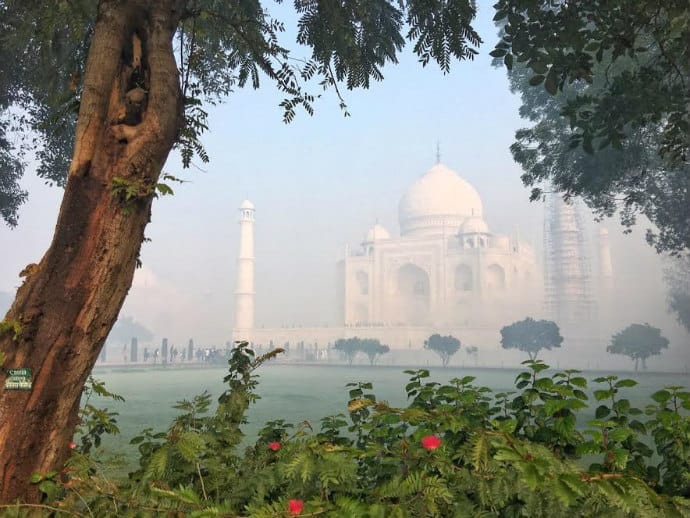
AGRA/TAJ MAHAL (India)
Close your eyes and think of India . If anything resembling a white marble onion dome comes to mind, you’re not alone. The Taj Mahal , a UNESCO World Heritage Site, is the veritable symbol of India, and on many people’s bucket lists.
When visitors make the journey to Agra (home of the Taj Mahal) three things stand out. One, the sublime beauty of the world’s most perfect building. It is truly spectacular, and rarely disappoints. Two, the overwhelming crowds.
The Taj Mahal attracts 7 to 8 million people per year. Unless you arrive by 6 am, just before it opens, you’ll be met with hordes of people. Three, the degradation and disorder of Agra.
You’d think the city that houses one of the world’s top tourist attractions would benefit from the influx of tourism revenue. But nothing could be further from the truth.
Aside from the stringent management and upkeep of the Taj Mahal itself— which includes a pollution-free perimeter zone and a regular mudpack to clean the surface — there are almost no other signs of civic improvement in Agra. The Taj Mahal is worth seeing, no question. But there’s no denying that it is falling victim to pollution.
It’s unfortunate that the lack of marketing innovation by the Indian tourism industry results in most tourists heading straight for the “Golden Triangle” of Delhi, Agra, and Jaipur. There’s so much more to see and experience in India, far away from the crowds, touts, and other aggravations of this over-touristed route. –Mariellen Ward of Breathedreamgo

BAGAN (Myanmar)
Although mainstream tourism is relatively new in Myanmar, Bagan’s famous Valley of Temples is already suffering growing pains. Over 4,000 pagodas once stood here, but that number has been reduced by half over time by earthquakes, natural erosion, and disrespectful travelers.
One of the most common activities in Bagan is to climb the pagodas at sunrise to watch the hot air balloons glide across the sky, and again in the evening to see the sunset. The experience is extraordinary… if you can find a secluded, secure temple. However, the majority of tourists flock to the five most popular pagodas, where climbing is allowed.
The problem is that some disrespectful tourists aren’t satisfied with the views from the platform area. So they climb up the ancient brick formations to the tip of the pagodas, which often crumble. It’s an insult to the historic importance of the site. Several travelers have lost their lives after plummeting from the top.
As travelers, it is our duty to preserve these sacred cultural heritage sites. Yet repeatedly visitors destroy the places they’re so eager to cross off their bucket list, without giving any thought to future generations. – Lola Méndez of Miss Filatelista

BALI (Indonesia)
Bali used to be a peaceful place where travelers would go to escape the stress of their everyday life. They could enjoy lush nature, bask in the sun on beautifully pristine beaches, and surf some killer waves. Most visitors would spend their time immersing themselves in the ancient traditions and rituals of the local people.
This aspect of Bali is so distant now, it takes a great deal of effort to discover it. Nowadays Bali is mayhem. Due to uncontrolled development, the land that nature ruled has been filled with large chain hotels and shopping malls. Depansar, Bali’s capital, is completely congested with traffic and pollution. What used to be a tropical paradise is being ruined by overtourism.
Most of the beaches are incredibly crowded. The lack of proper garbage disposal and recycling initiatives means that places such as Kuta Beach are enormous dumps where rats party day and night . In order to accommodate the needs of mass tourism , development is slowly but steadily pushing its way through the rest of the island, too.
Visitors who wish to avoid the crowds need to travel to the north of the island and visit the most remote beaches. Renting a motorbike or a car may also be a good idea in order to travel more independently. –Claudia Tavani of My Adventures Across the World
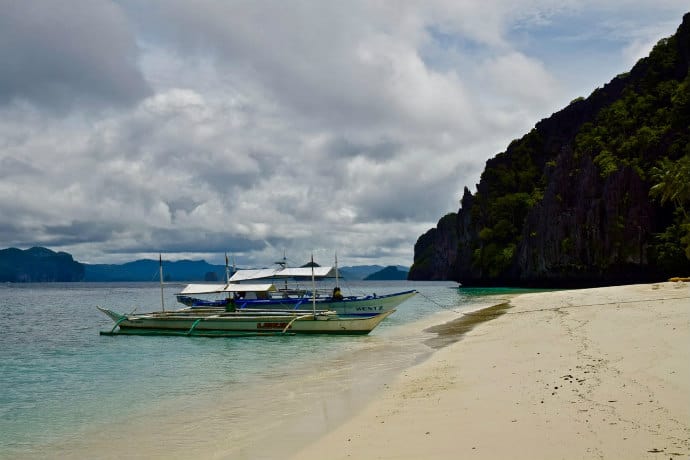
EL NIDO, PALAWAN (Philippines)
In 2016 Palawan was named the world’s most beautiful island by Condé Nast Traveler. Known as a haven for adventurers looking to experience untouched nature, quiet turquoise waters, and respite from hordes of sun seekers, this promising ecotourism destination has exploded in popularity. Unfortunately El Nido (once a sleepy fishing village) has been bearing the brunt of it, attracting over 200,000 visitors to an area with a population of 36,000.
The problems caused by overtourism here are many. There’s rampant tourism development all over town. There’s not enough local food to feed all the visiting mouths, a problem exacerbated by the mass conversion of farmland into resort construction sites. There’s no waste water management system, meaning sewage from these newly constructed hotels goes straight into that turquoise ocean.
Island-hopping is the main attraction in El Nido’s archipelago, and every travel agency in town basically sells the same day tour. So idyllic lagoons became swamped with beer-swilling sunbathers.
Thankfully, 2017 saw the introduction of daily visitor caps to three of the main hotspots. But as long as overall visitor numbers remain unmanaged, tour operators will simply shift crowds to other islands.
So how can we visit Palawan responsibly? Steer completely clear of El Nido, at least until the powers-that-be have invested in proper infrastructure and resources to cope with tourism volume. There are plenty of beautiful spots all over the large island of Palawan, including some commendable eco-resorts in Coron. -Ellie Cleary of Soul Travel Blog
READ MORE: The Best Things To Do In Coron, Palawan Philippines

HALONG BAY (Vietnam)
As a UNESCO World Heritage Site, Halong Bay is easily the most famous site in Vietnam. It’s also the most visited, with nearly three million tourists cruising its waters every year. Hundreds of junk boats ply its water each day, against the natural backdrop of dark green rock formations shrouded in mist.
Sadly, overtourism in Halong Bay has resulted in both environmental issues and fatal accidents. The influx of visitors coupled with a lack of safety regulations has created a market saturated with irresponsible tour operators who are more concerned with profits than environmental and safety issues. In 2011, a boat sank there, killing 12 tourists. According to several comments from travelers on Lonely Planet, this isn’t an isolated incident .
We cruised Halong Bay on a mid-range overnight boat trip and it opened my eyes to what poorly managed tourism can do to a place. The beauty of the poetic landscapes is undeniable, but the sheer amount of environmental destruction is enough to put off any traveler with a conscience.
For now, I wouldn’t recommend anyone to visit Halong Bay, at least until the bay is cleaned up and the situation controlled with new safety measures. –Nellie Huang of Wild Junket

MAYA BAY, KOH PHI PHI (Thailand)
If you love to travel, you’ve most likely seen The Beach , the 2000 movie starring Leonardo DiCaprio. Millions of people saw it, and it seems like most of them ended up traveling to Maya Bay Beach on Koh Phi Phi, where most of the film was shot.
Sadly, the place is a paradise no more, thanks to seemingly endless hordes of tourists. If you visit during the middle of the day, you’ll mostly see it packed with long-tail boats and people. Many are rowdy and obnoxiously drunk, leaving a trail of litter in their wake. The only way to see the real beauty of Maya Bay is to find a boat that will bring you there early in the morning, or around sunset.
The bay is located on Koh Phi Phi Leh. You can’t stay there overnight, but you can stay on the nearby (and bigger) island of Koh Phi Phi Don. Another option is taking a Maya Bay Sleep Aboard tour, where you sleep on the boat near this spot and get to spend almost a full day here. –Sonal & Sandro of Drifter Planet
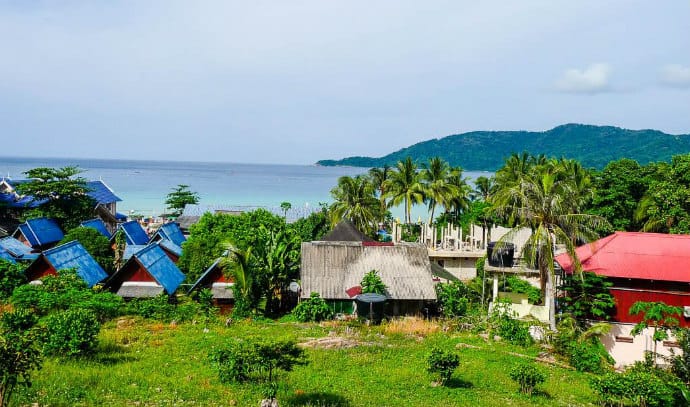
PERHENTIAN ISLANDS (Malaysia)
When we got to Malaysia, my partner Karen couldn’t wait to show me the Perhentian Islands. Having been there previously on a diving trip, she raved about these tropical paradise islands, with their white sand beaches and crystal clear waters.
Unfortunately, what we found once we arrived was more like Paradise Lost. Every day we would notice these weird brown patches floating in the ocean. To this day I’m scared to think what they were. All I know is that everyone avoided them.
What was once an occasional speedboat taxi had now turned into a sea full of them. To make matters worse, they were driven by teens racing each other, making what should have been a leisurely swim into a worrisome nightmare. One day we even had a helicopter land right on the beach, unannounced!
The Perhentian Islands are becoming a victim of their own success. Instead of trying to keep the natural balance of things , there seems to be more and more tourism-related development going on. Unfortunately, if this keeps going, the pristine beauty of these islands will be lost forever. It’s in everyone’s interest to help preserve the Perhentians before it’s too late. –Paul Farrugia of Globalhelpswap
TOURISM IN AUSTRALIA
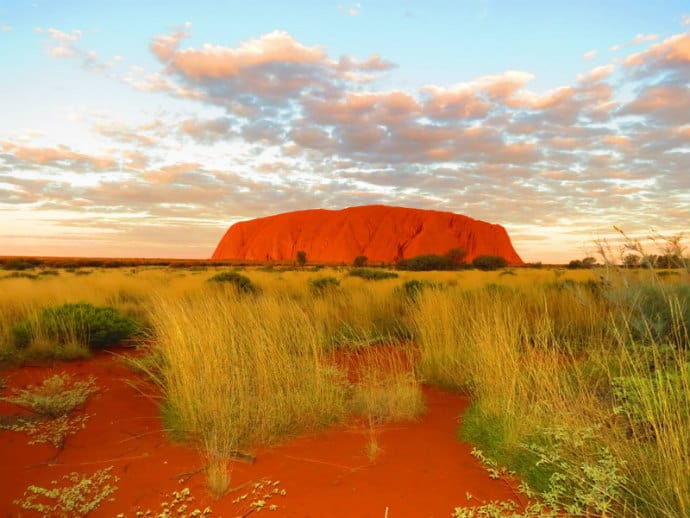
ULURU (Australia)
Australia’s most iconic natural attraction, Uluru (or Ayers Rock) is a symbol of the Outback that attracts more than 300,000 visitors every year.Believed to be millions of years old, this beautiful red rock juts imposingly out of the sand in the middle of the Australian desert.
Looming large at 1,142 feet, Uluru is considered a sacred site by the Indigenous Anangu people, the traditional owners of the land, and holds UNSECO World Heritage status for its ancient rock paintings. But mass tourism has caused numerous issues, provoking long-standing debates over whether or not tourists should be allowed to climb it.
Much of the controversy centers around respecting the Aboriginal community’s repeated requests that visitors not climb their sacred site. Tourists have been defecating, urinating, leaving trash, and vandalizing the rock face at the top of Uluru for years. Visitors have also been chipping off stones and defacing culturally significant engravings with name carvings of their own. As a result, a recent decision by local authorities will make Uluru off limits to climbers starting in October 2019.
To avoid the problems associated with overtourism, consider visiting during the wet season (January-March). The days are much hotter, but you’ll find very few tourists in the National Park. Early birds can head out for the base walk (6.5 miles, which takes around 3 hours) while everyone else is sleeping, getting close to the rock in complete silence. -Megan Jerrard of Mapping Megan
READ MORE: 10 Australian National Parks for your World Bucket List
TOURISM IN CENTRAL/SOUTH AMERICA
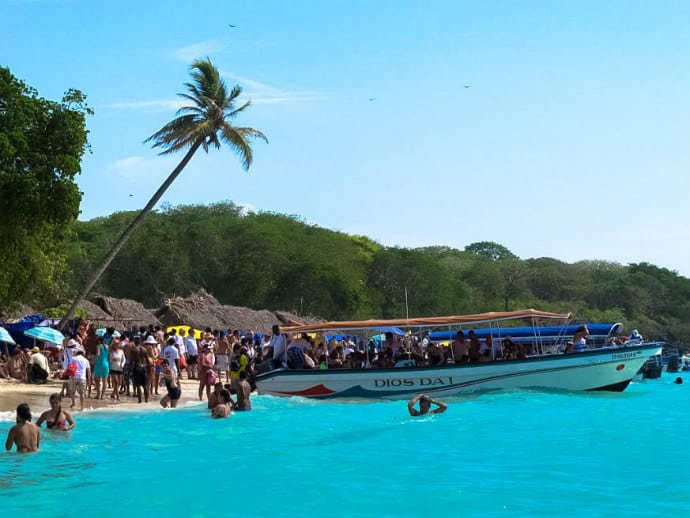
CARTAGENA (Colombia)
Colombia is a country whose reputation has been unfairly plagued by its past. In recent years, as the political and criminal situation calmed down considerably, new airline routes have opened up. As a result, Colombia is now bringing in quite a bit of tourism, attracting over 2.5 million visitors in 2016.
Cartagena, Colombia’s Caribbean tourism capital, attracts around 14% of those travelers. And while the city doesn’t seem overrun by visitors, the desire to cater to them has led to the gentrification of Getsemaní. Development of this ultra-hip neighborhood is largely being funded by international companies, who seem hell-bent on tourism profits regardless of the impact on the locals who live there.
Some of the more popular local beaches are so swamped with tourists, they’re too expensive for locals to get out to them. The tourism boom in Cartagena has also led to a staggering problem wherein young local girls are forced into prostitution to cater to foreigners.
If you’re visiting Cartagena, I recommend talking to the friendly locals. Ask them about their favorite places to go and things to do in the area. Support local businesses, and do your best to put money into the local economy rather than spending it to support international corporate interests. – Megan Starr
READ MORE: Best Attractions in Cartagena, Columbia
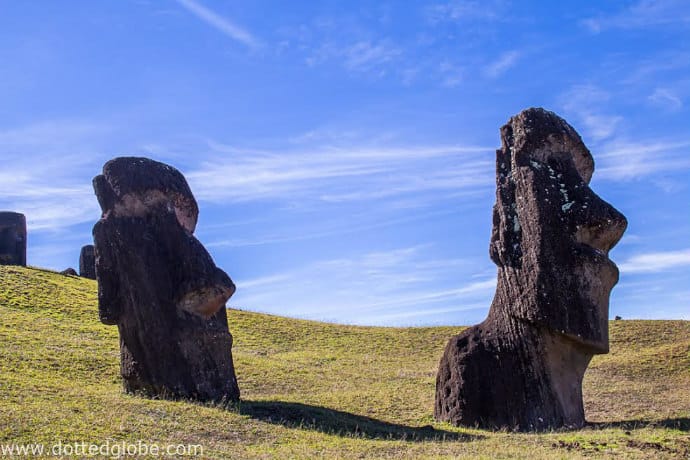
EASTER ISLAND (Chile)
Easter Island is best known for the mysterious Moai, gigantic stone statues created by the ancient Rapa Nui civilization. The Rapa Nui people carved the statues (some nearly 30 feet tall and weighing 80 tons), transported them to different sites, and erected them on ceremonial platforms. No one knows their purpose, but the 887 Moai are the tiny island’s main attraction.
Unfortunately, the sheer number of tourists (around 100,000 annually) are changing the nature of tourism on Easter Island. The Moai are very fragile, and tourists who touch the statues cause irreversible damage. Two important archaeological sites were closed to tourists in recent years due to deterioration.
Easter Island once collapsed under a population of 10,000. Now the island’s infrastructure and resources are being stressed by the growing surge of visitors. Available landfill area for non-recyclable waste is extremely limited.
Being a responsible tourist on Easter Island is easy. Just don’t touch the Moai, stick to marked trails, watch where you walk (archaeological sites are everywhere), respect local culture, and leave no waste. To avoid the crowds, travel off-season in winter (June to September) and skip the Tapati Festival in January. – Ketki Sharangpani of Dotted Globe

MACHU PICCHU/INCA TRAIL (Peru)
One special destination that’s sadly suffering from overtourism is Machu Picchu, and the increasingly popular Inca Trail that leads to it. Strict caps on visitors were put in place by the Peruvian government a few years back– 500 permits per day for the Inca Trail and 2500 per day for Machu Picchu. Yet still the famed site often sees double that number of visitors.
This is obvious in terms of countless irresponsible travelers ruining the natural beauty and mystical appeal with their ubiquitous selfie sticks. But what’s even worse is the area’s sanitation issues.
There’s toilet paper lining the hiking trails, squat toilets overflowing, and now the preservation of this precious site seems to be in danger.
There is good news: In the summer of 2017, the Peruvian government passed a new restriction for Machu Picchu visitors, requiring they enter with an official tour guide in groups of 16 or less.
Additionally, entry grants only a morning visit or an afternoon visit. So if if you want to spend the entire day, you’ll need to pay twice. While inside, visitors will need to stay on marked paths.
Hopefully new laws like these will help to ease the strain on this important UNESCO World Heritage site . –Jessie Festa of Jessie on a Journey

SALAR DE UYUNI (Bolivia)
It’s difficult to imagine how an area sprawling 4,085 square miles could ever feel crowded. But that’s just what’s happening at Salar de Uyuni, Bolivia’s famous salt pan.
Tourism has been a major contributor to the local economy, and even protected the Bolivia against Lithium mining. But the impacts haven’t been all good.
The number of visitors from the Uyuni departure point have far surpassed local infrastructure in recent years, and the city suffers from unmanaged waste.
While few studies have been conducted on the environe impacts of mass tourism, it’s impossible to imagine that hundreds of 4x4s have no impact on the ecosystem.
With more tourists feeding wildlife and treading on the plants and soil surrounding popular attractions, a change is inevitable.
From a human standpoint, increased competition has invited in big name travel companies. The prices of tours are WAY down, and margins for local operators have fallen with it.
The experience can still be incredible if you’re mindful about how you visit. Consider departing from Tupiza rather than Uyuni to support a different community.
Support the local businesses, tip your guides well, tread lightly, and leave the place like you found it so that it can be enjoyed by generations to come. – Taylor of Travel Outlandish
TOURISM IN EUROPE
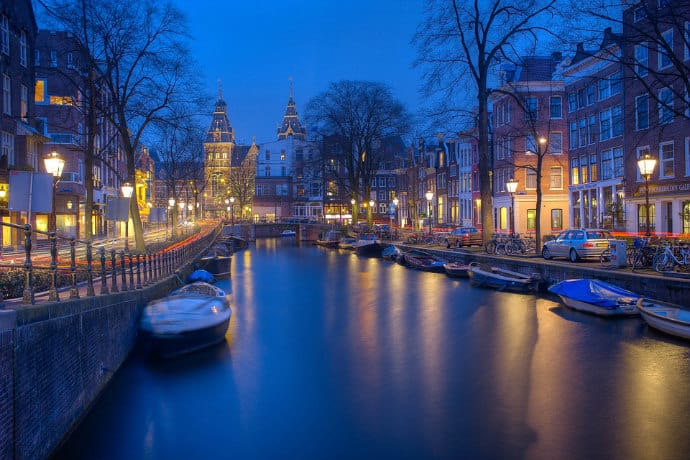
AMSTERDAM (Netherlands)
Amsterdam is known all around the world as one of Europe’s most lovely cities. However in recent years the combination of drug-focused tourism and cheap budget flights have turned the city’s Centre district into a crowded mass tourism playground.
It finally reached a point in 2017 where overtourism was so bad, the government banned new tourist-oriented shops from opening in the Centre. They also started regulating Airbnb much more strictly, as the housing crisis in Amsterdam reached full bloom.
The rise in tourism has also made it very difficult for local residents in the Centre to find shops to do their errands in.
If you’re looking to contribute to a more sustainable future for Amsterdam, please consider staying outside of the Centre and NOT using an Airbnb.
Similarly, be sure to visit some of the residential neighborhoods, such as De Pijp, which are full of cute independent shops run by young Dutch entrepreneurs who are committed to making Amsterdam the best city in the Netherlands. –Karen Turner of Wanderlustingk

BARCELONA (Spain)
Barcelona has a lot to offer, including stunning Gaudi architecture, a rich tapas and wine culture, and (thanks to the 1992 Olympics) a two-mile stretch of beautiful beach.
The same Olympics that improved local quality of life by installing a municipal sailing center and public housing also put Barcelona on the map for international tourism, which grew to an unsustainable 32 million visitors in 2016.
A large number of these visitors are day-trippers, coming into the city on cruise ships carrying up to 5,000 passengers, all of whom descend on the nearby old town en masse. Barceloneta, once a quaint fisherman’s quarter, has become overcrowded.
AirBnB is forcing out locals, as renting out apartments to tourists is much more lucrative for owners than having long-term tenants. According to real estate portal Idealista, renewal contracts on apartments in 2016 saw an average price hike of over 20%.
Local shops around the Ramblas– some of them over 100 years old– are similarly being replaced by souvenir shops that can afford the rising rental prices for businesses. This gentrification is killing the area’s authenticity.
To avoid these tourism issues, seek out licensed hotels or apartments outside the most crowded areas of Barcelona. You can also visit popular tourist sites during the week, when the visitor numbers tend to be lower. – Edwina Dandler of Traveling German
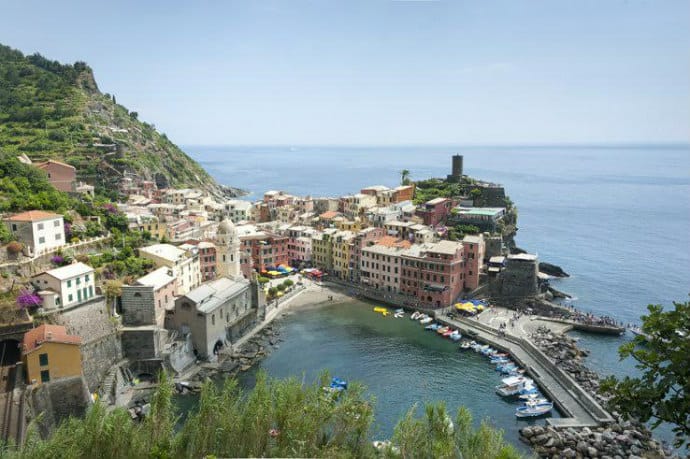
CINQUE TERRE (Italy)
Up until I was 16 years old, I spent my summer holidays in a small seaside village in Liguria. Some of my grandma’s relatives lived near Cinque Terre, and we visited the area several times.
The five candy-colored villages were a popular day-trip destination, even in the 1980s. It was always hard to park, and the small beaches were packed, but no more so than elsewhere in the region.
In 2014 I returned to Cinque Terre after 15 years away, and I was shocked by what I saw. The quaint villages of my childhood were literally overrun with tourists.
The narrow, historic centre streets were a shuffling mass of bodies, litter was everywhere, and people treated local homes as if they were museums, walking in and posing for pictures.
A friend of mine from Vernazza (one of the five villages) told me that all these tourists are putting a terrible strain on the area.
First of all, these “bucket list” tourists spend little or no money– maybe a couple of euros for water and a focaccia. Tons of rubbish need to be removed daily, and locals are unable to enjoy their villages due to the multitudes of rude, rowdy people crowding them all summer.
My tip? Pretty much every town in Liguria has the same candy-colored houses that make Cinque Terre famous. I always recommend Levanto, a place with amazing nature and outdoor adventure! –Margherita Ragg of The Crowded Planet
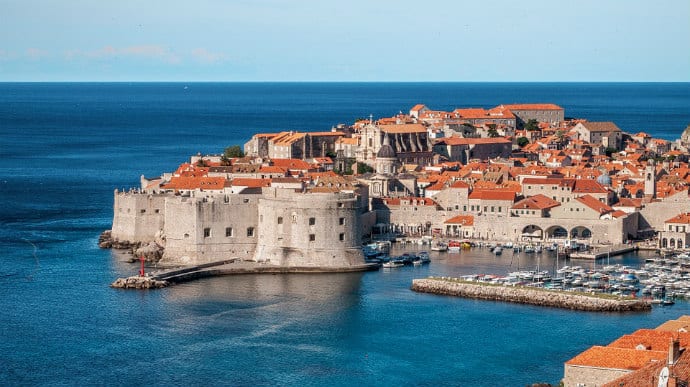
DUBROVNIK (Croatia)
The Pearl of the Adriatic has been a popular tourist destination since the days when it was part of Yugoslavia. As if the appeal of the citrus-colored Old Town nestled atop the turquoise sea wasn’t enough, Dubrovnik also has a fascinating, tumultuous history that is very much still rooted in its local culture.
I’ve been lucky to call Dubrovnik home over the past three years. During this time, I’ve watched Game of Thrones and the cruise ship industry turn this small town into one of the trendiest destinations in Europe.
There’s no doubt this tourism boom has significantly boosted the local economy. But unfortunately the sea of mass tourism is pushing Dubrovnik far beyond its carrying capacity.
Just 40,000 people live in Dubrovnik, yet over 2 million people visit during the high season each summer. The Old Town is flooded with hot bodies and selfie sticks.
Cars honk at each other in bumper-to-bumper traffic. The buses are packed with tourists and a few locals (if they’re lucky enough to get on first).
Residents reclaim Dubrovnik in the winter months. The town celebrates local pride with holidays like St. Blaise Day and Badnjak, which are filled with dancing, eating, and singing traditional Croatian songs. This is when the city’s culture truly shines.
Efforts are currently underway to extend the tourist season beyond the summer and limit cruise ships. But living expenses are still increasing due to tourism, and many locals are struggling.
Many people, especially those from the Old Town, feel that Dubrovnik’s original spirit cannot be recovered. –Alexandra Schmidt of The Mindful Mermaid

When I spent time volunteering in the environmental field back in 2012, little did I know that one of the most striking destinations I had ever visited would soon become a victim of mass tourism.
Who knows if its popularity was caused by Game of Thrones , Star Wars , or the endless Instagram postings featuring Iceland ? Or maybe it’s because budget travel companies such as Wow Air sell low-cost flights from many European destinations.
Regardless, the harsh reality is that tourists arrive to find hotels and car rentals are expensive and in increasingly short supply during the high season (from June to August).
In June 2016, the situation was so chaotic that the government planned to restrict Airbnb rentals. Other measures to reduce the number of visitors are planned to be implemented soon.
So if you have Iceland on your bucket list, try to visit during the shoulder seasons (Spring or Fall) instead of Summer. Travelers and locals alike will benefit.
Most people believe everyone should be able to access the places we, as privileged people from first world countries, travel to regularly. But at what cost? Perhaps it’s time to rethink tourism as we know it, or else we’ll all have to live with the unfortunate consequences. -Inma Gregorio of A World To Travel
READ MORE: 10 Incredible Iceland Waterfalls

ISLE OF SKYE (Scotland)
The Isle of Skye in northwest Scotland boasts numerous natural landmarks. There’s the Old Man of Storr and the Quiraing range, the bizarre basalt formation Kilt Rock, Neist Point lighthouse, the Cuillin mountains, and of course the magical Fairy Pools.
Skye is Scotland’s largest island, and the only one that is accessible from the mainland via a bridge. And this is were the trouble starts…
The problem is that word on Skye’s stellar beauty has spread, making it one of Scotland’s most over-popular holiday destinations. While this brings invaluable income to local businesses, it’s proven problematic in terms of infrastructure and environmental impact.
Stories of cars spilling out of the limited parking lots onto the road and blocking locals’ daily commutes are overshadowed by even worse stories about inappropriate behavior by some tourists due to a lack of public toilet facilities.
Accommodations are seriously limited, which has caused the police to limit island visits to those with reservations only.
Responsible tourism to Skye is still possible. Allow yourself to go off the beaten path and support local businesses who give back to the community and act for the environment. Treat the island as if it was your home.
And finally, take a look around: Scotland’s Inner Hebrides offer many incredible islands that are waiting for you to discover them! –Kathi Kamleitner from Watch Me See
READ MORE: Top 10 Things To Do On The Isle of Skye
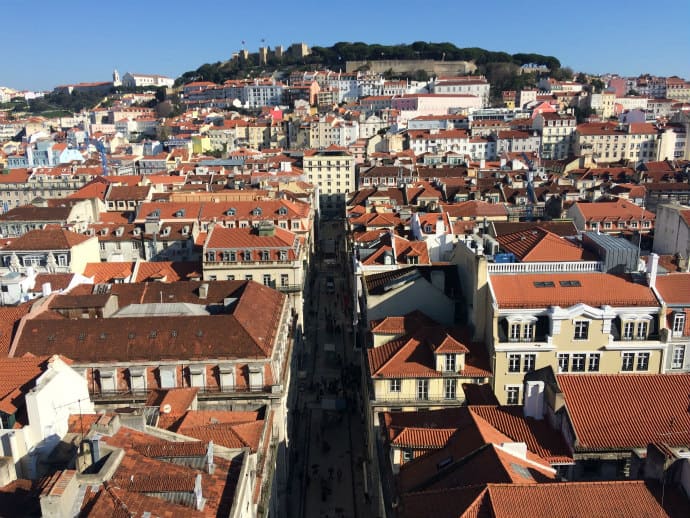
LISBON (Portugal)
If we compare Lisbon to other European cities, I believe there’s still a chance to save the Portuguese capital from overtourism.
Tourism in Lisbon is a great product: We have great weather and food, killer sunsets, a diverse culture and heritage, and a young population who speaks at least one foreign language fluently.
Tourism was the only industry bringing in a decent income when everything else seemed to be crashing under the economic recession. In fact, we now have tourists visiting all year round– there’s hardly a low season or shoulder season.
The housing crisis has been the biggest issue facing Lisbon. Locals can’t find affordable houses in the center of the city because landlords can make more money by listing their apartments on short-term rental websites (and paying less taxes). Not to mention the historic buildings being refurbished by foreign investment companies into luxury condos and more short-term rental units.
It’s a vicious cycle: Old-age tenants die or get evicted, the owner sells to the highest bidder, and the house becomes a short-term rental. There’s little that’s typical about Alfama or Mouraria these days. The old quarters are being stripped of their cultural identity.
The best way a traveler can stop this is by booking a hotel instead of a short-term rental. – Sandra Henriques Gajjar of Tripper
READ MORE: Things To Do In Portugal For Nature Lovers
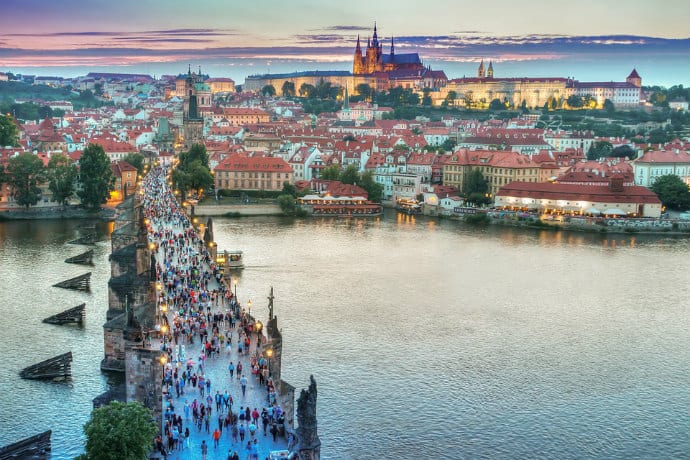
PRAGUE (Czech Republic)
Travel is a good thing, for the most part. Most destinations rely on the economic gains from this $7 trillion a year industry, and there are countless benefits to travelers themselves. But when tourism grows at an unsustainable, it can be damaging both to locals and their environment. Prague is a perfect example of mass tourism.
For me, Prague was once a fairytale bucket list destination. But now that over tourism has clouded the experience, it no longer seems like such a magical place.
The city is crowded no matter what time year you visit, with people and vendors elbow to elbow on the Charles Bridge. New developments are often under construction, which detracts from the city’s beauty. Prague has also become more expensive, both for tourists and locals alike.
To avoid huge crowds, become a morning person to beat the crowds. Connect with locals via Facebook groups or Couchsurfing, and explore with expats or locals who know the best places to visit.
Prague is still a stunning city, but for now I avoid it and explore less touristy places instead. –Olga Maria of DreamsInHeels

SANTORINI (Greece)
Not all that long ago, Santorini was a small, rocky, relatively unknown Greek Island. But it has risen in recent years to become one of the most iconic places to visit in Greece due largely to its whitewashed villages, blue-domed churches, and incredible sunsets.
But many of the locals who once lived in this Mediterranean paradise have been driven out due to rising property costs. The price for Greeks to ferry to work from neighboring islands is prohibitively high.
The locals who are left are invaded by disrespectful visitors who often destroy their property while trying to get the perfect selfie. And when it comes to the environment, the island’s main roads are littered with trash left by indifferent tourists.
Avoiding the Santorini crowds completely is almost impossible, especially if you hope to view the sunset in iconic spots like Oia. However, the island’s east-facing side affords equally beautiful views, and the gorgeous resorts there are more affordable and just as luxurious.
Take some time on the south side of the island for wine tasting and wandering through villages. Also consider going to Santorini in the off-season, when it’s cheaper and less crowded.
Three times as many hotels will be staying open throughout the winter in order to help encourage better distribution of the influx of tourists. – Eileen Cotter Wright of Pure Wander
READ MORE: The Best Places To Visit in Greece in 40 Fantastic Photos
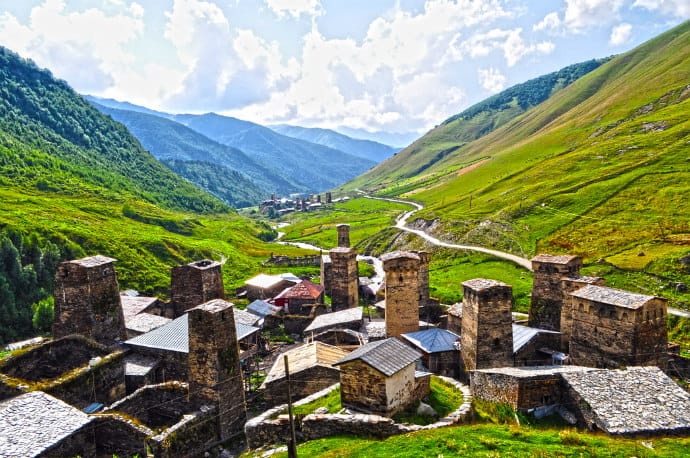
SVANETI (Georgia)
Situated on the southern slopes of the Greater Caucasus mountains and surrounded by 16,000-foot peaks, stunning Svaneti is one of the fastest growing tourism destinations in Georgia.
The mountains, remoteness, and unique indigenous traditions make it an ideal destination for hiking, trekking, wildlife, and cultural tourism. However, negative impacts of tourism can already be seen.
When I first visited Svaneti in 2001, I didn’t see any other tourists for a week. In 2014 there were 14,160 visitors, and by 2016 there were 18,347. Because most tourists go to Mestia (2,700 inhabitants) and hike/drive east towards Ushguli (200 inhabitants) between June-September, it’s getting harder to accommodate them.
New concrete guesthouses are being built randomly, without any permission. But they’re incompatible with the local cultural and architectural heritage and ultimately spoil the picturesque landscape.
Farmland has been reduced to build new accommodations and ski facilities, causing problems with local food supplies. There’s a growing issue with solid waste disposal in villages and along the hiking trails. And the famous Svan hospitality is vanishing: Getting invited to dine with the local family is now very rare.
Svaneti is at risk of losing its traditional Georgian charm. To avoid the crowds , head west of Mestia, where tourism has hardly been developed at all. – Marta Mills of One Planet Blog
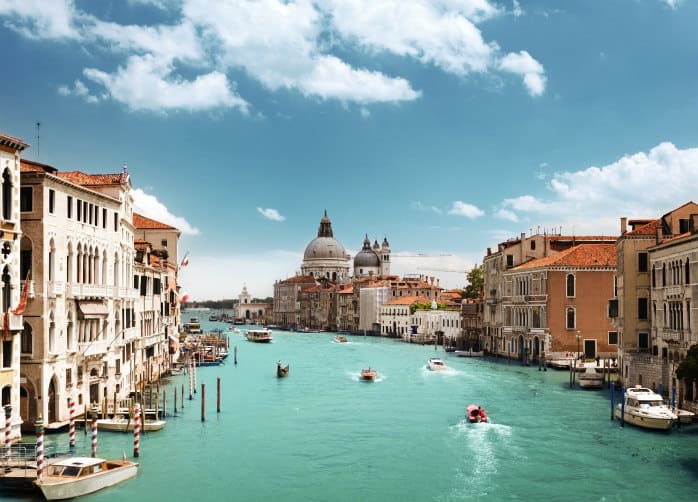
VENICE (Italy)
There is a certain aura of magic and mystery about Venice. For decades, visitors have been unable to resist the allure of the city’s romantic canals, singing gondoliers, picturesque bridges and grand architecture. The “City of Bridges” tops the ‘must visit cities in Europe’ lists year after year but for how much longer?
Aside from its risk of sinking and its threat from flooding, Venice is a city under populated and over-crowded.
Mass tourism attributed to the mega-cruise ships is causing irreversible damage not only to the fragile lagoon ecosystem but the city itself. A city that only in-habits under 55,000 residents yet welcomes over 30 million visitors a year.
Venice and its Lagoon have long been listed as a UNESCO World Heritage Site. But due to mass-tourism, not only does it risk losing its status, it faces entering the “Endangered” list, a list normally reserved for ruins and sites damaged by war.
Vandalism, crime, destruction of some historical sites and tourist stupidity has already caused tension between residents and visitors.
To add to its woes, cruise ship visitors lack of overnight stays means city tax (that benefits the city) is not being paid, local businesses in the same “tourist” areas are strained and local necessity shops have been closed to only be replaced with souvenir stalls, further pushing locals out of their own city.
Venice is a city that strongly relies on tourism, and while many believe the ban of large ships to Venice would solve the problem, there is so much more that needs to be done to ensure this charming city continues to thrive, and be preserved for generations to come.
To avoid Venice overtourism, visit out-side of the peak seasons (so October-December & February – April) and ensure you’re a responsible tourist! –Samantha & Leonardo of The Wandering Wanderlusters
READ MORE: Le Marche, Italy: A Local’s 7 Favorite Places To Visit
TOURISM IN NORTH AMERICA
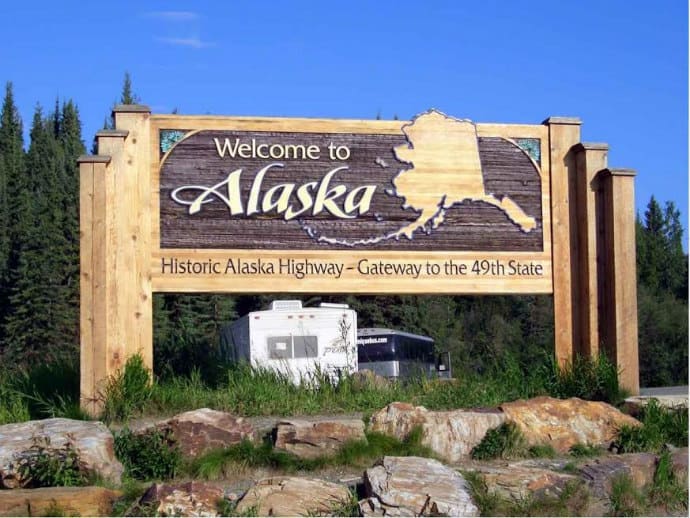
DENALI NATIONAL PARK, ALASKA (USA)
Most people wouldn’t think of mass tourism when considering Alaska, the wildest state in the USA . But having been there before the Alaska Highway was paved all the way through in 1992, I can see a major difference.
Before the opening of the highway, Alaska was a great adventure . You were lucky if you could get through the state without getting stuck in the mud somewhere. Now you can just cruise through, perhaps seeing the odd construction site along the way where last winter’s potholes are being repaired.
Denali National Park has been especially impacted by tourism development. Before 1992 there were only a few lodges and cabins along the Nenana River, and a campground with very basic facilities. Today you’ll find luxury resorts, a Good Sam Park, and a boardwalk mall with fast food and ice cream joints.
You have to wait in a line of jostling tourists to enter the park on one of the park’s buses. Photo stops along the park road are precisely timed, and the feeling of being out in the wilderness is lost in the process.
My tip? Skip the bus tours entirely and go wilderness hiking in Denali to experience the park’s true, wild nature. – Monika Fuchs of Travel World Online
READ MORE: Denali National Park: Exploring America’s Last Great Frontier
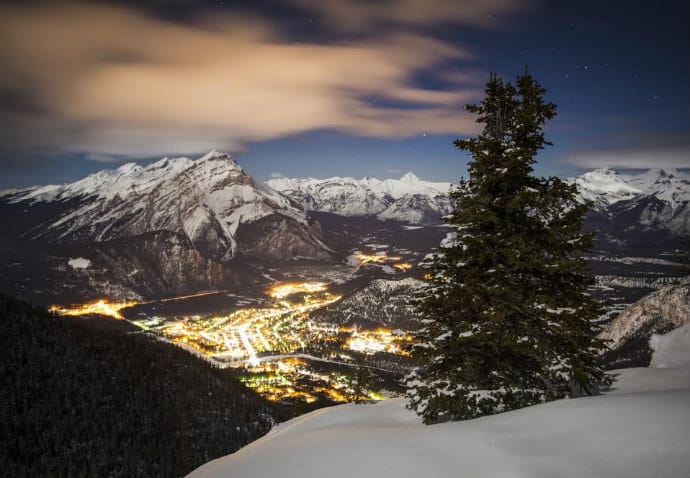
BANFF, ALBERTA (Canada)
I grew up in a small town near Banff, one of the most frequently visited destinations in Canada. Located in the Canadian Rockies, it’s home to several of Canada’s most famous ski resorts.
Tourism there created a unique set of social problems caused primarily by the fact that, as a town located inside a National Park, Banff had strict boundaries. Therefore it wasn’t able to expand beyond the 4.9 square kilometers allotted to it.
The extreme popularity of the destination and the limits on expansion means that the town’s limited real estate is extremely expensive and almost entirely devoted to high-end tourism.
Nearly everyone who lived there worked in the service industry (as I did). So they couldn’t afford the few apartments available, and were forced to live in small, dingy dormitories provided by their employers. Seasonal hiring/firing made for high turnover, which created a transient community locals were reticent to embrace.
The result was a very strange society of short-term locals and a nearly ubiquitous binge-drinking party culture. Think of a college town where all the students have enough money to get drunk every night and can leave any time they want.
Banff is by no means a terrible town. But overtourism has turned it from a quaint skiing community into a churn-and-burn business more focused on pleasing tourists than providing an affordable quality of life for locals. –Matt Gibson of Xpat Matt
MANHATTAN, NEW YORK CITY (USA)
Manhattan is the most-visited part of NYC, the USA ’s top port of entry, top generator of tourism revenue, and top big-city destination. Tens of millions of people visit every year – a fact that’s regularly emphasized by marketing org NYC & Company.
But how many millions are too many, even in a megacity? Parts of Manhattan have hit their carrying capacity– the point beyond which bigger tourism numbers just aren’t better.
As a native New Yorker, I studiously avoid places like Times Square and Rockefeller Center during heavy travel periods. They’re not pleasant to visit for anyone, whether tourists or locals.
But Manhattan’s problems run deeper. There are vital questions about the degree to which the money tourists spend in Manhattan adds to the local economy.
The gross value may tell one tale, but when factoring the economic impact of tourism, the economic leakage (money benefiting businesses based elsewhere), the hard and soft costs of managing tourism, and the relatively shallow spread of benefits, the economic yield might not make as much economic sense.
Fortunately, NYC is considering alternative tourism strategies. The new “True York City” campaign encourages visitors to explore and engage more deeply with the area.
Perhaps it’s the start of real thinking about the quality of the NYC tourism experience, rather than the quantity. –Ethan Gelber of The Travel Word

MAUI, HAWAII (USA)
Maui has topped “ Best Island in the World ” ratings for years. It’s no surprise, considering its perfect weather, perfect beaches, and perfectly picturesque views. But all this perfection comes at a cost, which is the degradation of my once-perfect vacation destination .
At just 727 square miles, Maui is a small island, yet it sees around 3 million tourists each year. Those visitors drive up local prices, crowd the more popular areas, and make it harder and harder to relax in the land of aloha.
There is also the negative environmental impact of tourism, with several endemic species needing additional protection.
One especially egregious example of the effects of tourism on Maui is Molokini. This tiny, fingernail-shaped atoll just off the coast of Maui is a popular spot for snorkeling. When I first booked a half-day snorkel trip in the early 2000s, it was fantastic.
But when I returned in 2010, there were so many packed catamarans that the snorkeling area was full of swimmers. It’s not much fun to be constantly on the lookout to avoid getting kicked in the face, and it’s likely even less fun for the fish that live there. Or did.
Maui depends on tourism for its economic health, so it’s hard to hate on the island for being so popular. But I’d love it if there was a better balance between the needs of the island’s coffers and the health of its flora and fauna. –Jen Miner of The Vacation Gals
READ MORE: Maui, Hula & Hawaiian Culture

YELLOWSTONE NATIONAL PARK (USA)
Located in the northwestern corner of Wyoming, Yellowstone National Park is the gem that started the United States’ National Park system . In the last 10 years, tourism has increased by 40%, with over 4.2 million visiting the park in 2016.
This dramatic increase has caused numerous tourism problems. The first is visitors walking off marked trails, causing environmental damage by killing the vegetation (which leads to erosion issues).
The second problem is with visitors who throw items such as coins and food into the geothermal features, which harm the geothermal algae. Some visitors even walk in the geothermal features, which can lead to death.
Another big issue is human/wildlife encounters. Yellowstone’s animals are learning bad habits that make them think people are food sources. Bears can become aggressive and dangerous when fed.
Poorly informed visitors will involve themselves in an “animal rescue” rather than letting nature take its course (see: the couple who put a baby Bison in the back of their car ).
The best way to avoid the masses is to avoid visiting Yellowstone during the summer. May and October are a great time to take advantage of warmer weather without dealing with major crowds. –Jennifer Melroy of Made all the Difference
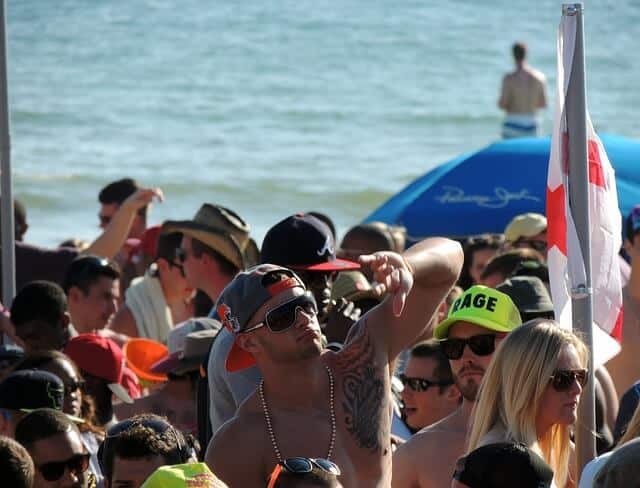
YUCATAN PENINSULA (Mexico)
From Playa del Carmen to Cancun, the uncontrolled surge of tourism to the Yucatan Peninsula has turned much of the region into one massive all-inclusive resort. What once was a series of pristine jungle and marine ecosystems is gradually being destroyed by chaotic urbanization.
Nearly 10 million visitors a year descend upon Quintana Roo (the Mexican state which includes the Yucatan coast), and their piña coladas and suntan lotion are suffocating the ecosystems with plastic bottles and organic waste.
Most locals don’t profit from this rapid rise of tourism revenue: All-inclusive resorts rarely hire indigenous natives, and these resorts rarely give back to the community.
Once a quiet fishing village, Playa Del Carmen has lost all local appeal. It’s become a throbbing beach town dominated by a tourist strip filled with splashy resorts, booming nightclubs, and drugs. Violence and theft has surged in the surrounding communities while police are occupied with patrolling the tourist areas.
If you do head to Playa del Carmen or Cancun, don’t stay at an all-inclusive. Understand that unchecked tourism has had a negative impact, and let that guide your spending. Dine at local restaurants. Shop at locally-owned businesses. Chat to local people.
It’s really the only way to ensure your visit to this mass tourism hotspot has positive benefits. –Mike Jerrard of Waking Up Wild
READ MORE : Riviera Maya: Tulum, Coba Mayan Ruins, Monkeys & More!

About the Author
Green Global Travel is the world's #1 independently owned ecotourism website encouraging others to embrace sustainable travel, wildlife conservation, cultural preservation, and going green tips for more sustainable living.
We've been spotlighted in major media outlets such as the BBC, Chicago Tribune, Forbes, The Guardian, Lonely Planet, National Geographic, Travel Channel, Washington Post and others.
Owned by Bret Love (a veteran journalist/photographer) and Mary Gabbett (business manager/videographer), USA Today named us one of the world's Top 5 Travel Blogging Couples. We were also featured in the 2017 National Geographic book, Ultimate Journeys for Two, for which we contributed a chapter on our adventures in Rwanda. Other awards we've won include Best Feature from both the Caribbean Tourism Organization and the Magazine Association of the Southeast.
As Seen On…

Join the 300,000+ people who follow Green Global Travel’s Blog and Social Media
What is overtourism and how can we overcome it?

The issue of overtourism has become a major concern due to the surge in travel following the pandemic. Image: Reuters/Manuel Silvestri (ITALY - Tags: ENTERTAINMENT)
.chakra .wef-1c7l3mo{-webkit-transition:all 0.15s ease-out;transition:all 0.15s ease-out;cursor:pointer;-webkit-text-decoration:none;text-decoration:none;outline:none;color:inherit;}.chakra .wef-1c7l3mo:hover,.chakra .wef-1c7l3mo[data-hover]{-webkit-text-decoration:underline;text-decoration:underline;}.chakra .wef-1c7l3mo:focus,.chakra .wef-1c7l3mo[data-focus]{box-shadow:0 0 0 3px rgba(168,203,251,0.5);} Joseph Martin Cheer
Marina novelli.

.chakra .wef-9dduvl{margin-top:16px;margin-bottom:16px;line-height:1.388;font-size:1.25rem;}@media screen and (min-width:56.5rem){.chakra .wef-9dduvl{font-size:1.125rem;}} Explore and monitor how .chakra .wef-15eoq1r{margin-top:16px;margin-bottom:16px;line-height:1.388;font-size:1.25rem;color:#F7DB5E;}@media screen and (min-width:56.5rem){.chakra .wef-15eoq1r{font-size:1.125rem;}} Travel and Tourism is affecting economies, industries and global issues

.chakra .wef-1nk5u5d{margin-top:16px;margin-bottom:16px;line-height:1.388;color:#2846F8;font-size:1.25rem;}@media screen and (min-width:56.5rem){.chakra .wef-1nk5u5d{font-size:1.125rem;}} Get involved with our crowdsourced digital platform to deliver impact at scale
Stay up to date:, travel and tourism.
Listen to the article
- Overtourism has once again become a concern, particularly after the rebound of international travel post-pandemic.
- Communities in popular destinations worldwide have expressed concerns over excess tourism on their doorstep.
- Here we outline the complexities of overtourism and the possible measures that can be taken to address the problem.
The term ‘overtourism’ has re-emerged as tourism recovery has surged around the globe. But already in 2019, angst over excessive tourism growth was so high that the UN World Tourism Organization called for “such growth to be managed responsibly so as to best seize the opportunities tourism can generate for communities around the world”.
This was especially evident in cities like Barcelona, where anti-tourism sentiment built up in response to pent-up frustration about rapid and unyielding tourism growth. Similar local frustration emerged in other famous cities, including Amsterdam , Venice , London , Kyoto and Dubrovnik .
While the pandemic was expected to usher in a new normal where responsible and sustainable travel would emerge, this shift was evidently short-lived, as demand surged in 2022 and 2023 after travel restrictions eased.
Have you read?
Ten principles for sustainable destinations: charting a new path forward for travel and tourism.
This has been witnessed over the recent Northern Hemisphere summer season, during which popular destinations heaved under the pressure of pent-up post-pandemic demand , with grassroots communities articulating over-tourism concerns.
Concerns over excess tourism have not only been seen in popular cities but also on the islands of Hawaii and Greece , beaches in Spain , national parks in the United States and Africa , and places off the beaten track like Japan ’s less explored regions.
What is overtourism?
The term overtourism was employed by Freya Petersen in 2001, who lamented the excesses of tourism development and governance deficits in the city of Pompei. Her sentiments are increasingly familiar among tourists in other top tourism destinations more than 20 years later.
Overtourism is more than a journalistic device to arouse host community anxiety or demonize tourists through anti-tourism activism. It is also more than simply being a question of management – although poor or lax governance most definitely accentuates the problem.
Governments at all levels must be decisive and firm about policy responses that control the nature of tourist demand and not merely give in to profits that flow from tourist expenditure and investment.
Overtourism is often oversimplified as being a problem of too many tourists. While that may well be an underlying symptom of excess, it fails to acknowledge the myriad factors at play.
In its simplest iteration, overtourism results from tourist demand exceeding the carrying capacity of host communities in a destination. Too often, the tourism supply chain stimulates demand, giving little thought to the capacity of destinations and the ripple effects on the well-being of local communities.
Overtourism is arguably a social phenomenon too. In China and India, two of the most populated countries where space is a premium, crowded places are socially accepted and overtourism concerns are rarely articulated, if at all. This suggests that cultural expectations of personal space and expectations of exclusivity differ.
We also tend not to associate ‘overtourism’ with Africa . But uncontrolled growth in tourist numbers is unsustainable anywhere, whether in an ancient European city or the savannah of a sub-Saharan context.
Overtourism must also have cultural drivers that are intensified when tourists' culture is at odds with that of host communities – this might manifest as breaching of public norms, irritating habits, unacceptable behaviours , place-based displacement and inconsiderate occupation of space.
The issue also comes about when the economic drivers of tourism mean that those who stand to benefit from growth are instead those who pay the price of it, particularly where gentrification and capital accumulation driven from outside results in local resident displacement and marginalization.
Overcoming overtourism excesses
Radical policy measures that break the overtourism cycle are becoming more common. For example, Amsterdam has moved to ban cruise ships by closing the city’s cruise terminal.
Tourism degrowth has long been posited as a remedy to overtourism. While simply cutting back on tourist numbers seems like a logical response, whether the economic trade-offs of fewer tourists will be tolerated is another thing altogether.
The Spanish island of Lanzarote moved to desaturate the island by calling the industry to focus on quality tourism rather than quantity. This shift to quality, or higher yielding, tourists has been mirrored in many other destinations, like Bali , for example.
Dispersing tourists outside hotspots is commonly seen as a means of dealing with too much tourism. However, whether sufficient interest to go off the beaten track can be stimulated might be an immoveable constraint, or simply result in problem shifting .
Demarketing destinations has been applied with varying degrees of success. However, whether it can address the underlying factors in the long run is questioned, particularly as social media influencers and travel writers continue to give attention to touristic hotspots. In France, asking visitors to avoid Mont Saint-Michelle and instead recommending they go elsewhere is evidence of this.
Introducing entry fees and gates to over-tourist places like Venice is another deterrent. This assumes visitors won’t object to paying and that revenues generated are spent on finding solutions rather than getting lost in authorities’ consolidated revenue.
Advocacy and awareness campaigns against overtourism have also been prominent, but whether appeals to tourists asking them to curb irresponsible behaviours have had any impact remains questionable as incidents continue —for example, the Palau Pledge and New Zealand’s Tiaki Promise appeal for more responsible behaviours.
Curtailing the use of the word overtourism is also posited – in the interest of avoiding the rise of moral panics and the swell of anti-tourism social movements, but pretending the phenomenon does not exist, or dwelling on semantics won’t solve the problem .
Solutions to address overtourism
The solutions to dealing adequately with the effects of overtourism are likely to be many and varied and must be tailored to the unique, relevant destination .
The tourism supply chain must also bear its fair share of responsibility. While popular destinations are understandably an easier sell, redirecting tourism beyond popular honeypots like urban heritage sites or overcrowded beaches needs greater impetus to avoid shifting the problem elsewhere.
Local authorities must exercise policy measures that establish capacity limits, then ensure they are upheld, and if not, be held responsible for their inaction .
Meanwhile, tourists themselves should take responsibility for their behaviour and decisions while travelling, as this can make a big difference to the impact on local residents .
Those investing in tourism should support initiatives that elevate local priorities and needs, and not simply exercise a model of maximum extraction for shareholders in the supply chain.
How is the World Economic Forum supporting the development of cities and communities globally?
The Data for the City of Tomorrow report highlighted that in 2023, around 56% of the world is urbanized. Almost 65% of people use the internet. Soon, 75% of the world’s jobs will require digital skills.
The World Economic Forum’s Centre for Urban Transformation is at the forefront of advancing public-private collaboration in cities. It enables more resilient and future-ready communities and local economies through green initiatives and the ethical use of data.
Learn more about our impact:
- Net Zero Carbon Cities: Through this initiative, we are sharing more than 200 leading practices to promote sustainability and reducing emissions in urban settings and empower cities to take bold action towards achieving carbon neutrality .
- G20 Global Smart Cities Alliance: We are dedicated to establishing norms and policy standards for the safe and ethical use of data in smart cities , leading smart city governance initiatives in more than 36 cities around the world.
- Empowering Brazilian SMEs with IoT adoption : We are removing barriers to IoT adoption for small and medium-sized enterprises in Brazil – with participating companies seeing a 192% return on investment.
- IoT security: Our Council on the Connected World established IoT security requirements for consumer-facing devices . It engages over 100 organizations to safeguard consumers against cyber threats.
- Healthy Cities and Communities: Through partnerships in Jersey City and Austin, USA, as well as Mumbai, India, this initiative focuses on enhancing citizens' lives by promoting better nutritional choices, physical activity, and sanitation practices.
Want to know more about our centre’s impact or get involved? Contact us .
National tourist offices and destination management organizations must support development that is nuanced and in tune with the local backdrop rather than simply mimicking mass-produced products and experiences.
The way tourist experiences are developed and shaped must be transformed to move away from outright consumerist fantasies to responsible consumption .
The overtourism problem will be solved through a clear-headed, collaborative and case-specific assessment of the many drivers in action. Finally, ignoring historical precedents that have led to the current predicament of overtourism and pinning this on oversimplified prescriptions abandons any chance of more sustainable and equitable tourism futures .
Don't miss any update on this topic
Create a free account and access your personalized content collection with our latest publications and analyses.
License and Republishing
World Economic Forum articles may be republished in accordance with the Creative Commons Attribution-NonCommercial-NoDerivatives 4.0 International Public License, and in accordance with our Terms of Use.
The views expressed in this article are those of the author alone and not the World Economic Forum.
Related topics:
The agenda .chakra .wef-n7bacu{margin-top:16px;margin-bottom:16px;line-height:1.388;font-weight:400;} weekly.
A weekly update of the most important issues driving the global agenda
.chakra .wef-1dtnjt5{display:-webkit-box;display:-webkit-flex;display:-ms-flexbox;display:flex;-webkit-align-items:center;-webkit-box-align:center;-ms-flex-align:center;align-items:center;-webkit-flex-wrap:wrap;-ms-flex-wrap:wrap;flex-wrap:wrap;} More on Travel and Tourism .chakra .wef-nr1rr4{display:-webkit-inline-box;display:-webkit-inline-flex;display:-ms-inline-flexbox;display:inline-flex;white-space:normal;vertical-align:middle;text-transform:uppercase;font-size:0.75rem;border-radius:0.25rem;font-weight:700;-webkit-align-items:center;-webkit-box-align:center;-ms-flex-align:center;align-items:center;line-height:1.2;-webkit-letter-spacing:1.25px;-moz-letter-spacing:1.25px;-ms-letter-spacing:1.25px;letter-spacing:1.25px;background:none;padding:0px;color:#B3B3B3;-webkit-box-decoration-break:clone;box-decoration-break:clone;-webkit-box-decoration-break:clone;}@media screen and (min-width:37.5rem){.chakra .wef-nr1rr4{font-size:0.875rem;}}@media screen and (min-width:56.5rem){.chakra .wef-nr1rr4{font-size:1rem;}} See all

How Japan is attracting digital nomads to shape local economies and innovation
Naoko Tochibayashi and Naoko Kutty
March 28, 2024

Turning tourism into development: Mitigating risks and leveraging heritage assets
Abeer Al Akel and Maimunah Mohd Sharif
February 15, 2024

Buses are key to fuelling Indian women's economic success. Here's why
Priya Singh
February 8, 2024

These are the world’s most powerful passports to have in 2024
Thea de Gallier
January 31, 2024

These are the world’s 9 most powerful passports in 2024

South Korea is launching a special visa for K-pop lovers
National Geographic content straight to your inbox—sign up for our popular newsletters here

- CORONAVIRUS COVERAGE
Mass tourism has troubled Mallorca for decades. Can it change?
As the Spanish island begins to welcome travelers after pandemic lockdowns, some locals are looking for more sustainable paths.
Mallorca’s picturesque Ca los Camps beach lies near a forest sheltering Bronze Age megaliths called talaiots— and far from infamous megaresort areas such as Magaluf. With the current reduction in tourists, “the beauty of Mallorca is now in front of us,” says photographer Pep Bonet, who used infrared imagery to highlight the ethereal quality of the island in its present state.
The first days of June dawned in a Spain hushed by the coronavirus pandemic. By then, more than 27,000 Spaniards had died of COVID-19, and the country was midway through a 10-day mourning period honoring their lives. Flags flickered at half mast. Families, faces covered, grieved beside newly built tombs.
On Mallorca, the largest of Spain ’s Balearic Islands, whitewashed hotels stood empty in the spring sunshine. Since the middle of March, when the archipelago’s airports snapped shut, the nearby beaches had been devoid of tourists. The economic downturn has deepened the pandemic’s toll.
“We have about 200,000 jobs that depend on tourism,” says Rosana Morillo, the director general of tourism in the Balearic Islands. Roughly 25 percent of the islands’ economy comes directly from tourism, Morillo estimates; add the indirect impact, and the number is closer to 35 percent.
The pandemic has meant a devastating loss of income on the archipelago, and for some, ushering back visitors has been a top priority. But visitation cuts both ways in the Balearic Islands, where high-rise resorts cater to crowds looking for sun-splashed beaches and free-flowing drinks. To many locals, tourism is an economic boon that’s become a crushing burden.
Long before overtourism became a pressing concern from Barcelona to Venice , the Balearic Islands were a byword for a travel industry run amok. When tourism researchers refer to out-of-control development that values short-term profit over sustainability, they call it balearización.
Suddenly, amid the pandemic’s heartbreak and loss, islanders got an unexpected glimpse of a different life.

The cove of Sa Calobra is one of the few ways to access the sea from the Serra de Tramuntana, a mountain range designated a UNESCO World Heritage site under the Cultural Landscape category for its centuries-old terraced farming in steep terrain.

Located on the slopes of Puig Major and Morro de Cúber, the reservoir of Cúber—along with the Gorg Blau reservoir—supplies water to the city of Palma de Mallorca and the surrounding area.

An aerial view of Es Llombards, near Mallorca’s south coast, shows a quiet village in an area normally filled with tourists. The slowdown caused by the pandemic “will support a more sustainable island,” says photographer Pep Bonet.
A time of quiet
It was a few weeks after the tourists left Mallorca when Pere Tomas walked out on his apartment terrace and saw the massive dark wings of a cinereous vulture wheeling high above. Tomas, a local guide who leads nature tours , made a note of it. Locked down and out of work, he was tracking resurgent wildlife on an island hushed by the pandemic.
“We could see very rare species that before we had only seen very far in the countryside,” he says. “There was less disturbance everywhere.”
When strict lockdowns lifted in early June, islanders emerged from their homes to find a sun-washed coastline that—seemingly for the first time in memory—was empty of tourists in the high season.
With the drone of sightseeing boats silenced, fishermen reeled nets from gin-clear bays to the sound of wind and waves. On the island’s northern edge, photographer Pep Bonet hiked mountain pathways where, instead of German and English, he heard the shushed consonants of the archipelago’s own Mallorquín dialect.
“Walking the beaches was incredible,” recalls professor Julio Batle, who reveled in pristine sand free of the partying crowds that this Mediterranean island is known for. “Even when I was a kid, there were too many tourists, so it was a new situation,” says Batle, who studies sustainable tourism and economics at the Universitat de les Illes Balears . “It was strange, and beautiful.”

In recent years, cruise ships have swarmed the harbor at Palma de Mallorca, shown here in 1929.

Near Palma de Mallorca, El Arenal beach drew crowds of hard-partying holiday makers in August 2019. These booze-fueled trips are “almost a rite of passage for many Brits and Germans,” says photographer Pep Bonet.
( Discover the dazzling Spanish national park in Catalonia .)
It’s also a stark contrast from the usual scene on Mallorca, where the sheer scale of pre-pandemic tourism was overwhelming. Some 11.8 million visitors flooded Mallorca in 2019, dwarfing the local population of under a million. The cost of living has skyrocketed, a trend aggravated by the conversion of family homes into vacation rentals .
Environmental impacts have been grave. Tourism pushed water usage to the brink. Developments chewed into fragile hillsides, and planes plus vast fleets of rental cars generated air pollution that left some locals in masks long before the pandemic began.
On a hot July day in 2017, planes passed through Mallorca’s Son Sant Joan airport at a record-breaking rate of one every 90 seconds. It’s no surprise the cinereous vultures stayed away.
How tourism devoured the island
An observer, taking in Mallorca’s ivory-colored beaches and turquoise coves, might easily see the island’s double-edged tourism industry as inevitable, the simple arithmetic of sun, sand, and sea. But the scale of tourism here isn’t haphazard: It’s the product of intentional development.

In the 1950s, Spain’s fascist regime saw tourism as a sorely needed source of revenue; the isolated government was hungry for foreign currency. Officials loosened the borders and encouraged beach development.
In Mallorca, hotels ballooned in size, eventually leaving Palma—the island’s capital—fenced in by high-rises built to attract budget travelers in the largest possible numbers. Cruise tourism has followed the same steep growth curve, with some 500 ships carrying 2 million passengers arriving in Palma each year.
But in recent years, many locals have pointed out that if mass tourism was a choice, it’s not too late to choose something else.
The local government seems to agree, expressing interest in a more sustainable model. In 2016, a tourist tax was introduced to raise funds for environmental restoration. Resort towns have cracked down on the tourist misbehavior that most wearies islanders, hoping to trade partiers for families interested in local culture.
Can the future be different?
For now, Mallorca has largely escaped the worst of the virus, with under 2,300 confirmed cases as of July 17. And despite the terrible toll of the pandemic on both lives and livelihoods globally, some residents are wondering if it might also present a chance to remake tourism on a smaller scale that favors meaningful encounters over the masses.
“I ask locals ‘how many of you have had the chance to spend quality time with tourists?’” explains Batle, the researcher. He says that few people he meets have had those authentic, one-on-one interactions. It’s a problem of scale, and one that Batle believes the pandemic could help upend. “The window is open for changes.”

Marine biologists and Cleanwave founder Philipp Baier have created a floating laboratory aboard a classic 1965 yacht, Falcao Uno. Along with citizen scientists, they investigate invasive species and microplastic pollution, a new way to engage Mallorca’s tourists in conservation of the Mediterranean Sea.

Jaume Catany is a farmer working at Circle Carbon Labs, a research and development facility that regenerates soil with waste from agriculture and sequesters carbon through a circular economy model.

A fisherman since the age of 13, Gori Maiol now captains a llaüt (traditional Mallorcan boat) and works with Vincent Colom. They use sustainable fishing practices like casting nets with bigger holes so small fish can escape and tossing small lobsters back into the sea.
“I think the pandemic is going to change all of our lives,” agrees Morillo, the director general of tourism. Nightclubs and boozy beach parties already seem like relics in a world grappling with infection. And it’s clear that the scale of tourism will be sharply reduced for the foreseeable future. Even the most optimistic observers think that just 50 percent of Palma hotels will open by the end of July.
( Related: In Florence, a centuries-old tradition fights for survival .)
As travelers start returning to the islands, Morillo hopes they’ll seek out natural landscapes and local culture, swapping coastal megaresorts for cycling through the mountains, stargazing, and sampling the gastronomy scene.
Or birdwatching. After months of lockdown, naturalist Pere Tomas finally left his apartment to lead a birdwatching tour in early June, guiding a British couple deep into the Albufera wetlands, where they saw endangered red-knobbed coots and a rare squacco heron.
Pandemic or not, thousands of migratory birds will return to these wetlands in the fall. Tourists have come back even sooner; the first planeloads of German vacationers touched down in mid-June. To try to avoid any virus outbreaks, the Balearics made masks mandatory in public places (but not the beach), as of July 13. And after a few recent incidents with drunken tourists, authorities shut down Palma’s main party strip . With clubs and discos closed, there’s an opening to discover a different side of island life.
Even after decades of intense tourism, many locals agree that it is Mallorca’s wildness that retains the power to astonish visitors—at least those willing to go beyond the most densely developed parts of the coast. “They get here and they see that actually there are big open spaces,” says longtime resident Timothy Pennell.
He runs La Serranía retreat in the UNESCO-listed Serra de Tramuntana mountains of northern Mallorca, a steep landscape shaped by thousands of years of small-scale farming. Stone-walled terraces cascade down hillsides knit together by olive groves and fruit orchards.
Speaking from his home in the middle of June, Pennell panned his camera phone across a landscape gone lush with spring. Heat hazed the view, and a mountain breeze stirred the leaves. Sheep grazed in the background.
“It’s quiet,” he said. Many here hope that a little of that quiet will remain.
Related Topics
- CORONAVIRUS
- CULTURAL TOURISM
- ADVENTURE TRAVEL
- OVERTOURISM
- SUSTAINABLE TOURISM
You May Also Like

One of Italy’s most visited places is an under-appreciated wine capital

How can tourists help Maui recover? Here’s what locals say.
Free bonus issue.

In this fragile landscape, Ladakh’s ecolodges help sustain a way of life

10 whimsical ways to experience Scotland

The essential guide to visiting Scotland

25 breathtaking places and experiences for 2023

They inspire us and teach us about the world: Meet our 2024 Travelers of the Year
- Perpetual Planet
- Environment
- Paid Content
History & Culture
- History & Culture
- Photography
- Mind, Body, Wonder
- Gory Details
- 2023 in Review
- Best of the World
- Terms of Use
- Privacy Policy
- Your US State Privacy Rights
- Children's Online Privacy Policy
- Interest-Based Ads
- About Nielsen Measurement
- Do Not Sell or Share My Personal Information
- Nat Geo Home
- Attend a Live Event
- Book a Trip
- Inspire Your Kids
- Shop Nat Geo
- Visit the D.C. Museum
- Learn About Our Impact
- Support Our Mission
- Advertise With Us
- Customer Service
- Renew Subscription
- Manage Your Subscription
- Work at Nat Geo
- Sign Up for Our Newsletters
- Contribute to Protect the Planet
Copyright © 1996-2015 National Geographic Society Copyright © 2015-2024 National Geographic Partners, LLC. All rights reserved

- Linkedin Weekly Newsletters
- RT Notes from the Field
- Travel Tomorrow
- Responsible Tourism enters its 3rd Decade.
- Why Responsibility?
- Accountability and Transparency
- Origins of the Cape Town Declaration
- About Responsible Tourism Partnership
- Harold Goodwin
- Media Links
- Privacy Policy
- 2022 Responsible Tourism Charter
- What is Responsible Tourism?
- What does Responsible mean?
- Addressing OverTourism
- Responsible Tourism at WTM London 2023
- WTM London 2022
- WTM London 2021
- WTM London 2020
- WTM London 2019
- WTM London 2018
- WTM London 2017
- WTM London 2016
- WTM London 2014
- WTM London 2013
- WTM Africa 2024
- WTM Africa 2023
- WTM Africa 2022
- WTM Africa 2021
- WTM Africa 2020
- WTM Africa 2018
- WTM Africa 2017
- WTM Africa 2016
- WTM Africa 2015
- WTM Latin America 2023
- Latin America Responsible Tourism 2023
- WTM Latin America 2022
- WTM Latin America 2020
- WTM Latin America 2018
- WTM Latin America 2017
- WTM Latin America 2015
- Arabian Travel Market 2023
- Arabian Travel Market 2022
- Arabian Travel Market 2021
- Arabian Travel Market 2020
- Arabian Travel Market 2016
- 2023 RT Awards Cycle
- 2022 WTM RT Awards Cycle
- Global Awards 2021
- WTM, Global Responsible Tourism Awards 2021
- World Responsible Tourism Awards 2020
- World Responsible Tourism Awards 2019
- World Responsible Tourism Awards 2018
- World Responsible Tourism Awards 2017
- World Responsible Tourism Awards 2004 to 2016
- Africa Responsible Tourism Awards 2023
- Africa Responsible Tourism Awards 2022
- Africa Responsible Tourism Awards 2020
- Africa Responsible Tourism Awards 2019
- Africa Responsible Tourism Awards 2018
- Africa Responsible Tourism Awards 2017
- Africa Responsible Tourism Awards 2016
- Africa Responsible Tourism Awards 2015
- India Awards
- India ICRT Awards 2024
- India ICRT Awards 2023
- India ICRT Awards 2022
- ICRT India Responsible Tourism Awards 2021
- India Responsible Tourism Awards 2021
- India Responsible Tourism Awards 2020
- India Responsible Tourism Awards 2019
- India Responsible Tourism Awards 2018
- India Responsible Tourism Awards 2017
- India Responsible Tourism Awards 2016
- Latin America RT Awards 2023
- Latin America RT Awards 2022
- Rest of the World
- Why apply for an RT Award?
- RTP Library
- RT in India
- RT Awards 2024
- Cape Town Declaration
- Responsible Tourism Action
- Sustainable Tourism
- RT in Destinations – Introduction
- RTD17 Eswatini Responsible Tourism Matters
- RTD 16 The Gambia
- RTD 15 Finland & Summer School
- RTD 15 Helsinki
- RTD 14 Plymouth. Loved to Death?
- RTD 13 Iceland
- RTD 12 Finland
- RTD11- Cape Town
- RTD 10 Calvià, Mallorca, Spain
- RTD9 – Dublin, Ireland
- RTD 8 Day 1
- RTD 8 Day 2
- RTD7 - Barcelona
- RTD6 - Brazil
- RTD6 - London, UK
- RTD5 - Canada
- RTD4 - Oman
- RTD3 – Belize
- RTD2 - Kerala
- RTD1 - Cape Town
- Leaders in RT
- Awelani Lodge
- Blouberg Camp
- Modjadji Cultural Camp
- Mtomeni Camp
- Local Voices
- Creating shared value
- Village Ways
- CGH Earth Hotels
- RT Mission Kerala
- ICRT West Africa
- ICRT Southern Africa
- ICRT South East Asia
- Outstanding Awards India
- RT Awards Inbound Operators
- RT Awards Andaman & Nicobar Islands
- RT Awards Delhi
- RT Awards Goa
- RT Awards Gujarat
- RT Awards Himachal Pradesh
- RT Awards Karnataka
- RT Awards Kerala
- RT Awards Ladakh
- RT Awards Madhya Pradesh
- RT Awards Maharashtra
- RT Awards Odisha
- RT Awards Rajasthan
- RT Awards Sikkim
- RT Awards Tamil Nadu
- RT Awards Uttarakhand
- Travelling Responsibly Overview
- 2. The Problem: why are orphanage visits harmful?
- 3. Alternatives: what does good practise look like in principle?
- 4. Alternatives: what does good practice look like in practice?
- 5. Pitfalls: what should be avoided when developing alternatives to orphanage visits?
- 6. Transitions: advice on safely moving away from orphanage visits
- Child Protection
- Codes for Tourists
- Is Flying the problem?
- Places & Tips
- Volunteering
- Wildlife & Habitats
- Videos & Podcasts
If you'd like to know when new newsletters are published please register here to receive notifications
Overtourism Solutions: Strategies to Manage Mass Tourism
This pages have been created to enable the easy sharing of experience in managing overtourism and avoiding it. There is a typology of overtourism solutions which provides an index and wherever possible a link to where further information can be found along with a contact.
The limits to growth are not just an issue for travel and tourism as the Wall Street Journal has described tourism as currently “generating a global backlash”. Responsible Tourism is about using tourism to make better places for people to live in and to visit. Overtourism is the antithesis to this, tourism is using the place and degrading it.
Overtourism describes destinations where hosts or guests, locals or visitors, feel that there are too many visitors and that the quality of life in the area or the quality of the experience has deteriorated unacceptably. It is the opposite of Responsible Tourism which is about using tourism to make better places to live in and better places to visit. Often both visitors and guests experience the deterioration concurrently.
The problem is not going to go away – we need to work out how to cope with it. The challenge for businesses and destination marketing organisations is that they no longer have a free hand to use the places that people live and work in to attract visitors. The residents, whose place it is, are beginning to rebel and consumers are all too aware that some destinations are not what they were. The challenge now is to develop ways of “Coping with Success”, addressing overtourism.
Essential Preconditions
In many places, there is confusion about the roles of DMOs. The same acronym is used for both Destination Management Organisations and Destination Marketing Organisations with bodies composed primarily of private sector representatives spending private sector and public money on destination promotion.
In Barcelona the management of tourism is unequivocally the responsibility of the city council. It is significant that the “objectives and strategic lines” of Turisme de Barcelona, the public-private partnership organisation which markets the city include public policy objectives. Turisme de Barcelona recognises its “social and institutional responsibility” to “achieve a balance between tourist activity and everyday life in the city” and encouraging wider geographic distribution of tourism in the city.
- a) To boost the financial impact of the sector and to attract tourists with high spending power; b) To promote its own identity as a tourist attraction; c) To reconcile tourists/local community; d) To ensure the geographical and multi-sectorial distribution of tourism; e) To strengthen the public-private promotional model.
Overtourism is often attacked as tourismophobia . Barcelona has countered this view, as Ada Colau, now Mayor Barcelona said in 2014:
“Of course, the answer is not to attack tourism. Everyone is a tourist at some point in their life. Rather, we have to regulate the sector, return to the traditions of local urban planning, and put the rights of residents before those of big business.
The way of life for all Barcelonans is seriously under threat. And the only solution is to win back democracy for the city. This is precisely what the residents of La Barceloneta are doing – defending their neighbourhood, their city, from the free market and from the political elites that are putting our home up for sale.” more
Governance Barcelona & Kerala have effectively managed different sets or overtourism challenges by engaging the tourism sector and local communities in addressing the particular local issues and using a multi-stakeholder approach.
Barcelona's Strategy and Action Barcelona is using a wider range of mechanisms to address the challenge of overtourism than any other destination, their experience is important as others rise to the challenge.
Barcelona has sought, since 2004, to make tourist activities more sustainable, to increase the positive impacts of tourism in the city and to integrate visitors fostering coexistence, Barcelona aspires to treat visitors as temporary residents . The city is working to ensure that there are no tourist ghettos and that tourism contributes to the improvement of the quality of life and social cohesion. Barcelona has recognised that sustainability and competitiveness need to be used together in managing tourism. In Barcelona, a City and Tourism Council has been formed to advise the City Council on tourism policy and management. more
As in many sectors, the regulation moves more slowly than the growth of new business models. This has been evident in the growth of businesses like Airbnb and Uber where regulators have struggled to keep up. Similarly, the management of the public realm – streets, parks and squares - has been a major challenge as tourism numbers have grown and accelerated.
Shared/reliable common information Effective management action involving diverse stakeholders requires shared data. Dichter, a senior partner of McKinsey & Company consultancy, says that:
“We talk to so many people in the tourism ecosystem and no one has the same facts – not even close,” … “If you can’t even agree on how many tourists are showing up, it’s very difficult to have a proper debate.” More
Only with good data is it possible to identify benefits and costs and develop management strategies to rebalance tourism. Shared, publicly available, reliable data has been a major plank of Barcelona’s efforts to address overtourism. The UNWTO points to the importance of “monitoring and evidence-based decisions.”
Barcelona surveys its residents regularly to determine their views about tourism and other problems in the city.
Barcelona publishes monthly forecasts of volumes of visitor numbers for each day reporting all events or activities which involve 10,000 or more people, where the forecast goes over 70,000 the calendar shows red, residents can then avoid the congested areas or avoid the city altogether. In September 2018 there were three days over 200,000, one of which was close to 300,000. example
Strategies to manage overtourism
Limits of Acceptable Change
Identify key indicators for the destination which identify the emerging issues so that they can be addressed. The growth of unlicensed tourist accommodation and change of use for the housing stock, changing retail offer, rising local housing costs, litter, trampling, crowding... choose the locally significant issues and problems.
Preferential Access for Locals At Park Güell, in Barcelona access to the Monument Area (7.9% of its area) has been regulated. In 2013, an 8€ entry fee was imposed, local residents have unrestricted and free access
Barcelona publishes monthly forecasts of volumes of visitor numbers for each day reporting all events or activities which involve 10,000 or more people, where the forecast goes over 70,000 the calendar shows red, residents can then avoid the congested areas or avoid the city altogether. In September 2018 there were three days over 200,000, one of which was close to 300,000.
Temporary Residents Changing the nature of tourism and the visitor experience by managing the destination to attract visitors as temporary residents. This strategy can change the dynamics of tourism and the host-guest relationship.
Tourist Tax
Tourism Taxes are controversial. They are generally too low to deter visitors, but they do enable local authorities to raise money to fund the management of tourism, to repair damage to lawns and pay for the removal of litter.
If one of the aspirations of Responsible Tourism is that tourists should be treated as temporary residents then it is not unreasonable that overnight tourists and day visitors should contribute to the maintenance of the public realm which they are visiting and using. Tourism taxes are generally levied through accommodation providers and occasionally through tour companies. New Zealand has introduced a $35 tourism levy to protect tourist hot spots.
Amsterdam has introduced a Day Tourist Tax for TRANSIT sea cruise and river cruise passengers that moor within the municipal boundaries of Amsterdam.
Ensuring that local community’s benefit from tourism
In Kerala, India, the state government has established a Responsible Tourism Mission to ensure that local communities benefit through the creation of shared value.
Supply-side initiatives
Accommodation Deregulated housing markets can attract international investors causing inflation in housing costs, and holiday rentals can be far more lucrative than letting to residents and families. By restricting the availability of accommodation visitor arrivals can be restricted.
Issues arise where there are concentrations of tourism in particular areas where tourism comes to dominate, and where there is unlicensed and unregulated accommodation which may cause disturbance and raises issues of health and safety and taxation.
In July 2015, Barcelona's municipal government suspended the processing of new permits for tourist-accommodation, student-residences and youth-hostel establishments, to analyse the impact of tourist-accommodation activities in all its aspects and to draft a special urban-development plan to regulate it. Ciutat Vella now has a Usage Plan designed to restrict the growth of tourist accommodation, whether hotels or apartments and a Tourist Accommodation Working Group has been tasked to complement municipal efforts to reduce the numbers of unlicensed apartments.
Disintermediation Airbnb is most often the focus of attention; the internet has replaced small ads in newspapers, magazines and shop windows as a means of advertising accommodation. This has made it easier to market accommodation and this, coupled with the deregulation of housing in many jurisdictions, has led to a significant increase in the letting of accommodation to tourists and in many places a depletion in accommodation stock available to residents, often with negative social and economic impacts.
Barcelona and Dublin have regulated Airbnb. From June, 2019, in designated rent-pressure zones, which cover Dublin and major commuter towns as well as Galway and Cork cities and part of Limerick, councils will need to grant planning approval for any short-term letting of investment properties. Where a house or apartment is a person's principal private residence, they will be permitted to rent out a room (or rooms) within their home for short-term letting without restriction. However, they will only be allowed to sub-let their entire house without planning permission on the short-term market for a cumulative period of 90 days or less annually. Individuals who own a second property will no longer be allowed to arrange short-term lettings, unless the property already has permission to be used for such purposes or for tourism. more
Matching Demand to Supply Timed ticketing and seasonal pricing all help in matching demand to supply and can contribute to ensuring that visitors have a better experience. Praia das Catedrais or “Cathedrals Beach” on the Galician coast in northwest Spain requires an advance booking .
Spatial and Town Planning Local governments and national parks are generally able to control the siting of accommodation and other visitor services, depending on national planning policy frameworks.
The Amsterdam municipal authority introduced a zoning plan "Shop Diversity Center" prohibits new shops opening in the city center that mainly target tourists and day visitors, such as souvenir shops. The municipality argued that it wants to counteract a so-called monoculture in the city center and prevent tourist shops from gaining the upper hand in the streets. Tourism companies that existed before 2017 are excluded from the zoning plan rules. Building owners and companies objected to the restrictions imposed by the zoning plan, accusing the municipality of violating the European Services Directive, discrimination, and causing property values to fall. In April 2020, the Council of State found in favour of the municipality deciding that the Amsterdam city council could reasonably conclude that there is a monoculture of shops and facilities in the city center, and that banning new tourist shops was in the interest of the people who live and work in Amsterdam. The Council of State also saw no grounds for claims of discrimination and building depreciation. more
Transport Barcelona has experimented with moving coach parks, bus routes and pick-up and put-down points to change the way tourists move through an urban area. In rural areas and in national parks, parking has been used to control visitor movements and reduce dispersal to the sacrifice zone. Strategies like pedestrianisation and park-and-ride can benefit residents as well as assisting in managing tourism and the tourist experience.
Closure Closing areas to allow regeneration has long been a management practice in natural areas. Thai officials said Maya Bay needed an enforced break from the daytrippers who have flocked there since it was featured in 2000 film The Beach. more Thailand closed dozens of dive sites to tourists in 2011. Koh Yoong, in the Phi Phi island chain and Koh Tachai, in the Similan Islands National Park, have also been off-limits to visitors since mid-2016. more Philippine President Rodrigo Duterte announced that Boracay Island will also be closing for a few months, having, in his words, become an overcrowded "cesspool". more
Banning Second Home Building Banning the building of second homes may have unintended consequences as those outsiders wanting to purchase buy existing properties raising prices and damaging the local building and tourism industries.
Banning Motor Homes In the UK Swale Borough Council in Kent has used Section 43 of the anti-social behaviour, crime and policing act to ban overnight camping between 8pm and 8am as illegal and likely to have a "detrimental effect" on locals. The Council says that the council had received complaints "This conduct is unreasonable and must stop immediately." Continued use would result in a £100 fixed penalty notice. If unpaid, magistrates can issue a fine of up to £2,500 and require the "surrender of possessions" which could then be destroyed or disposed of by police.
Section 43: Power to issue notices (1)An authorised person may issue a community protection notice to an individual aged 16 or over, or a body, if satisfied on reasonable grounds that— (a)the conduct of the individual or body is having a detrimental effect, of a persistent or continuing nature, on the quality of life of those in the locality, and (b)the conduct is unreasonable.
In New Zealand, new legislation was introduced in August 2011 empowering local councils to issue fines to people freedom camping in non-designated places. Details
Demand-side initiatives
Ministers of Tourism and DMOs are generally judged by the visitor arrivals figures, and for national governments with their focus on exports, international arrivals are the key measure of the value of the marketing organisation. If you change the KPI of a marketer, they will deliver to it. A destination could choose to focus on visitor spend, length of stay, distribution and dispersal or on particular market segments. If you don't change the KPIs they will do the easy thing and sell the honeypots.
Attract tourists who fit the destination - change the destination's image Businesses and the destination marketers should focus their efforts on attracting the market segments which fit the destination. Barcelona has been explicit:
“What is good for citizens is good for the tourist. Places that are good to live in are also good to visit. Efforts will be made to improve the quality of life for local people by managing the friction between residents and visitors and to improve the interaction between hosts and guests…..” and that the “tourist that Catalunya wants to attract is the one who will respect the environment, the society and the local culture, eager to discover and share experiences.” more
Cap Arrivals Neither Barcelona nor Venice is able to manage tourist arrivals, both have good road links, airports, railway stations and ports, none of which are they able to manage. Dubrovnik, by contrast, has been able to limit cruise ship arrivals. In October 2018 it announced that it is limiting cruise ship arrivals from 2019 to two per day, allowing only 5,000 visitors to arrive by sea each day.
Bruges has placed a cap on the number of cruise ships and an end to all advertising campaigns encouraging daytrippers.

Change Tourist Behaviour through marketing and advice
a) Demarketing Demarketing can be used to discourage visitors in order to reduce negative impacts – as with marketing there is a range of methods available from price rises to reducing promotional activity and spreading the word that the quality of the experience has deteriorated to discourage visitors.
b) Discourage “Bad” Tourists and Tourism Banning stag nights and hen dos. In Barcelona, it is known as “turismo de Borrachera” travelling to another place to behave in ways you would not do where you are known. This does not always require travel across an international boundary.
Rome has outlawed men going topless in public and the practice of attaching “love padlocks” to bridges, both of which carry a fine if contravened. Eating messy foods around tourist attractions, touching your lips against the spout when drinking from Roman public water fountains, Ticket touts selling “skip the line” tickets at some of the Eternal City’s biggest attractions, such as the Vatican Museums and Colosseum, are prohibited, as well as those who dress up as Roman centurions around tourist hotspots and charge money for photos.
c) Pricing and Rationing Dynamic pricing charging higher prices at peak demand and lower prices when demand and crowding is less
Site Hardening
Constructing facilities and locating trails and roads to reduce the impacts of visitors on sensitive soils and vegetation, and to help meet the visitors' needs for user access.
Managing activity in the destination
Municipal Regulation Examples where a local government organisation has taken a holistic approach to the management of tourism in the destination as has been the case in, for example, Barcelona and Sagada in the Philippines.
Introducing guide and tour operator licenses. In Barcelona, there is a city task group working to prevent the spread of souvenir shops in Ciutat Vella, Sagrada Família, Park Güell
Dispersal – Spatial Spread the tourist out by encouraging them to visit less visited places, there may well be districts and areas where people would like to see more tourists, boost less popular attractions and develop new ones. Paris has done this effectively for many years. Barcelona has adopted spatial dispersal as part of its strategy and Helsinki has encouraged citizens to invite tourists to visit their favourite places.
Create new itineraries and guided tours to less visited areas Consider regulating group size and coach drop off points to manage visitor flows
In Ireland the Wild Atlantic Way
Dispersal - temporal Attracting tourists to visit at other times of the year, week and day to disperse the positive and negative impacts of tourism.
Timed Tickets and Differential Pricing
'Policing' Activities and Behaviour Since May 2017 in Florence:
"From today, we'll be experimenting with a very simple measure: pouring water over the church steps to clean the spaces, and hopefully discourage people from eating, drinking and making a mess there,"
Mayor Dario Nardella told reporters. "If tourists want to sit there, they'll get wet," he said. "Florence is full of cafes with outdoor seating, tables, and benches. The churches aren't restaurants; they are religious and cultural sites." more
Since 2018 in Amsterdam: Public consumption of alcohol will result in a fine of €95; public urination, disorderliness and littering, meanwhile, will draw fines of €140.
The council has also announced plans to tackle overcrowding in The Wallen, which residents say has become “unliveable” due to mass tourism. Streets there will be monitored in real time and coded green, orange or red, depending on how busy they are. If a code red is called, officials will be deployed and “if necessary, streets will be closed,” the council said. More
Closure Komodo, Indonesia The fight for Dragon Island Maya Bay "The Beach" Thailand
If you have solutions for overtourism which you would like to see included here please email [email protected] Your contribution will be acknowledged.
- EU (2018) Research for TRAN Committee - Overtourism: impact and possible policy responses
- Goodwin H (2018) Managing Tourism in Barcelona 2nd Edition
- Goodwin H (2017) The Challenge of Overtourism
- McKinsey & WTTC (2017) Coping with success: Managing overcrowding in tourism destinations
- UNWTO (2018) ‘Overtourism’? – Understanding and Managing Urban Tourism Growth beyond Perceptions, Executive Summary
Latest News Items

Harold on the Web

Get a sample of Harold Goodwin's Book "Responsible Tourism"

Mass tourism, biosecurity and sustainability challenges: prospects illustrated by the current COVID-19 pandemic
Journal of Tourism Futures
ISSN : 2055-5911
Article publication date: 23 March 2023
Using COVID-19 pandemic as a more immediate empirical reference, this paper aims to understand the biosecurity risks arising from tourist activities and, through a more prospective analysis, to consider the relevance of public health issues in the context of tourism-sustainability nexuses.
Design/methodology/approach
The text assumes a hybrid format, incorporating elements resulting from empirical research and essayistic viewpoints. The collection of empirical elements was based on documental research in several sources, such as newspapers, international institutions of an intergovernmental nature and the discussion forum of the travel platform TripAdvisor.
By assuming mobility and large agglomerations of people from different origins, mass tourism has fostered multiple outbreaks of COVID-19 and the rapid global spread of contagion chains. The pandemic clearly exemplified the responsibility of tourism in the dispersion of biotic agents with severe ecological, economic, social and public health repercussions. It is, therefore, urgent to rethink the tourism growth trajectory and more effectively consider the biosecurity risks associated with mobility in discussions on tourism and sustainability. At the same time, tourism must be delineated in terms of the great aims of sustainability, and this transversal purpose to which it contributes should be considered an intrinsic condition of its own sectorial sustainability as an economic activity.
Originality/value
The biosecurity challenges posed by mass tourism are a very topical issue, still little considered in sustainability policies and on which there is a marked deficit in scientific research.
- Mass tourism
- COVID-19 pandemic
- Biosecurity
- Sustainability
Sacramento, O. (2023), "Mass tourism, biosecurity and sustainability challenges: prospects illustrated by the current COVID-19 pandemic", Journal of Tourism Futures , Vol. ahead-of-print No. ahead-of-print. https://doi.org/10.1108/JTF-07-2022-0173
Emerald Publishing Limited
Copyright © 2023, Octávio Sacramento
Published in Journal of Tourism Futures . Published by Emerald Publishing Limited. This article is published under the Creative Commons Attribution (CC BY 4.0) licence. Anyone may reproduce, distribute, translate and create derivative works of this article (for both commercial and non-commercial purposes), subject to full attribution to the original publication and authors. The full terms of this licence may be seen at http://creativecommons.org/licences/by/4.0/legalcode
1. Introduction
Mass tourism produces a very negative ecological and social impact, and although it generates substantial economic benefits, they are generally unevenly distributed ( Chong, 2019 ; Fang et al. , 2021 ). It could have been expected that the COVID-19 pandemic might have constituted a decisive tipping point for a deprioritising of the economy, considering the tourism system as a means to serve society and the sustainable development goals (SDGs) that foresee the viability of our common future ( Gössling et al. , 2021 ; Higgins-Desbiolles, 2018 ). However, instead of considering the current crisis of the pandemic, together with the climate crisis, as imperative reasons for urgent structural changes in global mass tourism ( Jamal and Budke, 2020 ), it is quite likely – among other possible scenarios of “survival of the fittest” (collapse), “business as unusual” (transition) and “responsible tourism” (transformation) ( Postma et al. , 2020 ; Yeoman et al ., 2022 ) – that there will be a return to “business as usual” (growth) and the old normality of unsustainable tourism as soon as the health crisis is overcome ( Hall et al. , 2020 ; Ioannides and Gyimóthy, 2020 ; Vărzaru et al. , 2021 ). In fact, the dominant concern has been the profound negative economic impact of COVID-19, especially in regard to tourism ( Sharma and Nicolau, 2020 ; Uğur and Akbıyık, 2020 ; United Nations, 2020 ; Yeh, 2021 ), with a constant reiteration of the urgency of resuming stimulating activity, based on a “boosterist”, expansionary and pro-growth motivation ( Higgins-Desbiolles, 2021 ).
With this materialist immediacy, the fact that tourism is falling victim to itself as one of the main causes of the pandemic tends to be relegated to the background, being overlooked that he is suffering the consequences of a health crisis to which it contributed greatly. Something very similar has been happening for many years in the context of the climate crisis, which has also had very profound negative effects in the field of tourism, as the so-called pro-limits critics of tourism have been warning ( Bramwell and Lane, 2011 ; Gössling et al. , 2021 ; Hall et al. , 2020 ; Higgins-Desbiolles, 2021 ). Inspired by these standpoints, I discuss here the role of mass tourism flows in the development of the COVID-19 pandemic and, from there, I try to reflect on the future of tourism's sustainability. The theoretical framework of this analysis integrates several perspectives and contributions, predominantly sociological, that make up the so-called “critical tourism studies”: a set of approaches devoted to socioeconomic and political critique that seek to make tourism a more equitable and sustainable social space ( Ateljevic et al. , 2012 ; Pritchard et al. , 2011 ). Based on this conceptual lens, the analysis is guided by two central objectives: understand how tourism activities and mobility have contributed to generating epidemiological risks – raising enormous challenges in the field of biosecurity ( Chen et al. , 2021 ; Iaquinto, 2020 ; Hall, 2015 ) – and projecting the urgency of give greater visibility to public health issues in discussions about tourism and sustainability.
The article is written in a hybrid format, incorporating both empirical research and essayistic viewpoints through which I seek to develop some prospective reflections on the public health challenges in the context of tourism sustainability. The empirical research was predominantly directed towards the collection of data on mass tourism as a vector of the rapid globalization of COVID-19. To this end, I chose documentary research – mainly secondary data analysis and policy research ( Tight, 2019 ) – as the most appropriate methodological approach to collect data (documentary elements, statistical information, reports and written statements) that would enable sound analytical connections to be made between international tourism and biosecurity threats. Through this documentary research, I access mainly media sources (e.g. newspapers), information associated with large international institutions of an intergovernmental nature (e.g. World Tourism Organization [WTO]) and the discussion forum of the travel platform TripAdvisor. The triangulation of empirical content resulting from these sources enabled the development of sustained inferences about the tourism-pandemic nexus. At the same time, provided a factual basis for problematizing the challenges and conceptualizations around sustainability, seeking to show the relevance of including bio-risks and public health issues more effectively in this discussion. The aim is to point towards a desirable (and urgent) future in which the biosecurity risks associated with tourist mobility are consistently considered as sustainability risks, leading to policies and tourism governance strategies aimed at minimising these risks.
2. Tourism as a powerful contagion vector
In the 21st century, tourism has asserted itself as a strong sector in global expansion, in which more and more countries are investing to diversify or boost their economies, as well as promote rural areas in demographic decline ( Cheer et al. , 2019 ; Croce, 2018 ; Khan, 2020 ). Immediately before the COVID-19 pandemic crisis and the consequent mobility restrictions, the year 2019 ended with a record of 1,460 billion international tourist arrivals – around 60 times more than in 1950 ( WTO, 2021 ). Tourist mobility in 2019 represented 10.4% of the global gross domestic product (GDP), with a turnover comparable, for example, to that of oil production ( World Travel and Tourism Council [WTTC], 2021 ). The economic performance of world tourism has been celebrated by many, namely by the major international organizations of the sector (e.g. WTO, WTTC), as an unquestionable success and reason to continue to grow, without giving the due attention to the multiple risks arising from tourism and its global expansion.
Some of these risks – for tourists and their respective places of origin and destination – are located in the field of biosecurity and public health, with particular emphasis on the spread of infectious diseases such as COVID-19 ( Chen et al. , 2021 ; Gössling, 2002 ; Hall, 2015 , 2019a ; Hall and Baird, 2013 ; Iaquinto, 2020 ; Melly and Hanrahan, 2021 ; Sabin et al. , 2020 ; Sacramento, 2022 ). As highlighted by Gössling et al. (2021, p. 13) , “tourism is about movement, and transport does act as a vector for the distribution of pathogens at regional and global scales”. Today tourism is, to a large extent, driven by global air transport networks which create conditions conducive to rapid and widespread contagion and epidemiological dispersion processes ( Brockmann, 2018 ; Brockmann and Helbing, 2013 ). Air transport implies large concentrations of people, closed spaces and many health challenges (e.g. air filtration), generating increased risks in terms of transmission of infectious agents ( Grout et al. , 2017 ). It can also facilitate the circulation of infectious arbovirus vectors, such as mosquitoes ( Kraemer et al. , 2015 ; Wilson, 2020 ). Air mobility constitutes a powerful macro-vector for the amplification and acceleration of contagions, not only because of the material conditions of the transport itself but also because of the diversity of itineraries of those who cross at airports and planes ( Brown et al. , 2016 ; Findlater and Bogoch, 2018 ; Tatem et al. , 2012 ).
Tourism and its associated transport networks are the results of socio-material, more-than-human assemblages, in which multiple actors (e.g. humans, non-humans, technology, institutions and natural resources) interact contingently, contributing to the generation of unforeseen vitalities that pose serious risks of biocontamination and can even create epidemic scenarios ( Brito-Henriques, 2020 ; Hall, 2015 ; Lupton, 2021 ). The responsibility of tourism in the geographical dispersion of biotic agents is processed in two ways: (1) directly, through the tourists themselves, with luggage, food, transport and other material elements associated with the trip; (2) indirectly, because tourist activities are associated with industrial food production prone to outbreaks of zoonotic diseases, are responsible for the invasion of wildlife habitats and contribute to the emission of climate-changing pollutants that disrupt ecosystems ( Gössling et al. , 2021 ; Hall, 2019a ; Melly and Hanrahan, 2021 ).
The Ministry of Health and the Directorate-General for Health confirmed this Monday the first cases of infection by Covid-19 in Portugal. One patient was on vacation in northern Italy and another in Valencia [Spain]. Both are hospitalized in Oporto ( Diário de Notícias, 2020a );
On January 31, Italy detected the first two cases of Covid-19 in the country. They were two Chinese tourists from the birthplace of the new coronavirus, Wuhan, who had arrived on the 23rd and visited several Italian cities. That same day, on the remote Spanish island of La Gomera, in the Canary Islands, a German tourist became the first case diagnosed in Spain ( Diário de Notícias, 2020b );
France confirms the first death in Europe from coronavirus. The death of an 80-year-old Chinese tourist in a Paris hospital was the first known fatality from the new virus outside Asia ( The New York Times, 2020 );
There have now been four reported cases of novel coronavirus infection found in Thailand: three Chinese tourists and one Thai ( Bangkok Post, 2020 );
Brazil confirms that a new strain [of SARS-CoV-2] detected in Japan is circulating in the Amazon. The variant arrived in Japan after four Japanese travellers visited the Brazilian Amazon and presented a series of unprecedented mutations ( Público, 2021 ).
By accumulating large numbers of people from different origins in small compacted spaces and infrastructures with shared material elements, international tourism scenarios fostered multiple outbreaks of COVID-19 and boosted the rapid global spread of the infection, as has happened in other infectious disease events. Regardless of its scales, typologies and specific configurations, mass tourism presumes a high density of transit and coexistence of people. The “mobilities are made with the encapsulation of bodies in mobile closed spaces – planes, buses, cruises, etc. – and flows converge and compress as they pass through nodes – airports, hotels, congress centres, museums, etc. – that stimulate interactions and human contact with each other and with different forms of materiality” ( Brito-Henriques, 2020, p. 207 ). It is precisely this intense density of movement that caused the most immediate physical conditions to make tourism a phenomenon inseparable from the instigators that boosted the COVID-19 pandemic.
From January 2020, up until the generalization of travel restrictions, there were several contexts in which tourist mobilities were intrinsically associated with the geographic expansion of contagion chains ( Sacramento, 2022 ). As an example, I address one of these tourist contexts of super-spreading of SARS-CoV-2: the ski resort of Ischgl, in the Alps.
2.1 A paradigmatic tourism scenario of SARS-CoV-2 global dissemination: the Ischgl ski resort
During the 2020 and 2021 ski seasons, there were major outbreaks of COVID-19 in resorts in several countries, especially in the Alpine region (Austria, Switzerland and Italy) and North America. In the USA, the disease outbreaks in the first months of 2021 in around 15 resorts in the state of Colorado are the most noteworthy, particularly in Winter Park, which has recorded more than 100 positive cases of the disease among the respective workers alone ( CPR News, 2021 ). In neighbouring Canada, the Whistler Blackcomb resort, the largest in North America, closed in late March 2021, was linked to 200 of the 877 cases of the “Brazilian variant” (P1) in the province of British Columbia, at the time the largest outbreak of this variant outside Brazil ( The Guardian, 2021 ). Arguably the most problematic situation, however, occurred about a year earlier, in the first months of 2020, in the centre of the European continent, in the Alps, particularly in Ischgl (Paznaun, Austrian Tyrol). As such, this will be the example I give the most attention.
Before the outbreak of Covid-19, in the winter season of 2018–2019, the ski resort of Ischgl, famously known as the “Ibiza of the Alps”, registered 300,414 arrivals of tourists from different origins and 1,409,478 overnight stays ( Tyrol Provincial Government, 2019, p. 28 ). Its association with the Samnaun resort (Ischgl/Samnaun Silvretta Arena) places this ski destination among the 10 largest in Europe and among the 50 largest in the world ( Vanat, 2020 ). These resorts staged the scene of one of the largest global events of super-spreading of SARS-CoV-2. During the “peak” of the high ski season, between the end of February and the beginning of March 2020, it was estimated that more than 6,000 people from about half a hundred of nations may have been infected in Ischgl and transported the virus to their respective countries [1] , quickly dispersing it worldwide. The initial contagion was so massive that, according to a serological study carried out by the Innsbruck University of Medicine, at the end of April 2020 more than 42% of residents in Ischgl already had antibodies to the virus ( Van Laer et al. , 2020 ). Not only because of the number of infections, but also because of the multinationality of the infected and the fact that contagions occurred at an early stage of the pandemic, Ischgl played a very significant role, along with other alpine resorts, to the speed with which COVID-19 took hold in the European continent and its spread worldwide ( Correa-Martínez et al. , 2020 ; Kreidl et al. , 2020 ).
The specific question that remains is what socio-material conditions have fostered the viral outbreak in Ischgl and other ski resorts? There are immediate visible reasons of a structural nature, inherently characteristic to most touristic contexts: the sharp reduction in air travel costs and the unconditional “open doors” positioning of destinations – presented as free territories ready to be consumed –, which led to a spiral of hyper-massification of tourism with the potential to create epidemic scenarios. The photographs that follow ( Plates 1 and 2 ) illustrate the many directions that opened Ischgl to the rest of the world and brought thousands of people to it, who settled there in a compact and active way, living in (almost) “a state of exception” and transforming the resort into a “post-national zone”: “a space of which the traditional nation-state is not in complete control, meshing together, as it does, various kinds of ‘circulating’ populations with different kinds of ‘locals’. […] a space densely and continuously connected to places beyond the nation” ( Inda, 2000, pp. 92–99 ).
Besides the more general and structural conditions related to the wide concentration of people from different geographic origins, common to many other tourist destinations, the set of specific circumstances directly responsible for the massive contagion processes in ski resorts has not yet been unequivocally identified. However, some possibilities are already considered as quite probable, such as (1) the high weekly turnover of thousands of tourists; (2) socially intense après-ski recreational activities, which presuppose close contacts, especially in closed spaces; (3) the long queues and crowds that form on cable cars, lift lines, restaurants, shops and many other facilities; (4) sharing accommodation between groups of resort employees and between groups of tourists, which often result in situations of high concentration of people in the same dwelling; (5) frequent physical contact with a wide variety of shared surfaces (e.g. cable cars, perches, rented equipment, handrails and doors), facilitating possible contagion through fomites; (6) the presence of nasal secretions on gloves resulting from constant cold-induced rhinorrhoea ( Dalton et al ., 2020 ; Felbermayr et al ., 2021 ; Gianfredi et al. , 2021 ; Kreidl et al. , 2020 ).
Our only other comment is that it really is becoming too busy. You used to go out sure you’d not have to wait for lifts and sure the slopes would be safe. Last week (admittedly a holiday week when there was bad weather at times) there were times when the queues built up at bottlenecks and when some slopes were lethal because of the crowding, number of people on slopes they couldn’t handle and general idiocy of groups of young lads skiing recklessly. It’s also now really difficult to find a place to eat or drink for a pit stop - you have to reserve tables for lunch which never used to be the case and is really annoying. The self service restaurants are all far too busy. We’ll not be going back at peak season (LondonFriday, Gurugram-Índia, 01/03/2020).
This resort is huge and caters to the glitzy and well-healed skiers who like the party scene. The huge line-ups for the gondolas (at the base) set the tone for our stay. Everything was busy (the runs, the lifts and the restaurants). We had a mixed bag of skiing largely dependent on weather-which is to be expected. Some of the runs and lifts were closed down due to bad weather which made it challenging to get down to the bottom. Some people got stuck on the Swiss side during a storm and had to take long bus ride back to Ischgl (Sue S., Kingston-Canadá, 26/04/2020).
From these excerpts, a set of rhetorical elements (short, but significant) stand out to characterize Ischgl as a tourist destination and, to a certain extent, to qualify the experience of the tourists themselves. Through brief discursive descriptions – “becoming too busy”, “queues built up at bottlenecks”, “crowding”, “restaurants are all far too busy”, “glitz party scene”, “everything was busy” – the testimonies highlight several situations that describe a routine of crowd compression in the spaces and the constant frenetic atmosphere and partying, whether in large concerts with international bands ( Plate 2 , back) or in the day-to-day life in the various and not very large après ski bars existing in the resort. The result was a social ecology that turned out to be convenient for a pathogenic entity that, to a large extent, subsists and circulates based on what, ontologically, defines the human condition: proximity and interpersonal contact.
The analysis of the Ischgl ski resort case allows us to deduce that the rapid internationalisation and growth of mass tourism tends to exceed the ecological, social and organisational capacities of the receiving contexts in terms of welcoming tourist flows and providing unconstrained and pleasant stays for the visitors. This results in scenarios and challenges of over-tourism which, among many other impacts, generate biosecurity risks of a transnational scale and situations of health unsustainability, potentially responsible for severe public health emergencies such as the COVID-19 pandemic.
3. Biosecurity and public health: questioning tourism (and) sustainability
Around the world, in countries at all development levels, many millions of jobs and businesses are dependent on a strong and thriving tourism sector. Tourism has also been a driving force in protecting natural and cultural heritage, preserving them for future generations to enjoy (in https://www.unwto.org );
Tourism is far more than tourism alone. From infrastructure and communication to food production and transport, tourism’s considerable economic weight gives it the responsibility and the power to play a key role in the sustainable and responsible development of economies and societies. Not only has tourism been a sector of consistently above-average growth for eight straight years, with 1.3 billion international tourist arrivals recorded in 2017, but the sector’s cross-cutting nature and wide global reach make it an effective tool to contribute to all of the 17 Sustainable Development Goals (in Fair Observer, 2019 ).
In the boosterism that characterizes the approach of the WTO and other entities and agents, the evaluation of tourism (and its success) is almost always done according to the numbers that reflect its expression as a market force and its influence on economic growth (e.g. GDP, % of total exports), assuming that the continuous expansion of tourist activities automatically assures a factor of well-being, development and sustainability ( Higgins-Desbiolles, 2021 ). However, this assumption is based more on wishful thinking than on real measures, results and concrete situations beyond those that fulfil a merely tokenistic function, as was the case of the proclamation of the International Year of Sustainable Tourism for Development, in 2017, by the United Nations (UN). In fact, “the idea of tourism being a responsible and sustainable industry is still a far-to-reach goal, as some of the game-changing and promising attempts quickly face the harsh reality of a highly competitive market” ( Stankov et al. , 2020, p. 708 ).
In general, the sector has shown the little capacity and/or willingness to implement structural changes and adopt procedures to face the great contemporary ecological and social challenges, thus becoming less and less sustainable as it expands economically ( Andria et al. , 2021 ; Hall, 2019b ; Moscardo and Murphy, 2014 ; Scott et al. , 2019 ; Sharpley, 2020 ). The inertia in truly facing the many negative impacts of tourist activity results, in the first place, from the blindness induced by market logics and by the unconditional search for growth. But it also results from the semantic complexity of the notion of “sustainable tourism” and the consequent divergence of understandings between academics, tourist agents and technicians about sustainability and the respective forms of operationalization and evaluation ( Andria et al. , 2021 ; Cernat and Gourdon, 2012 ; Gibson, 2012 ; Sørensen and Grindsted, 2021 ).
the potential for disease spread will only increase further as international tourism expands in terms of the number of tourists that travel, as well as the distance travelled. In addition, the risk of biological invasion is only likely to increase further in the future as a result of climate change […], while the potential lag between invasion, population growth on the new range, and impact on indigenous species and the physical environment, may mean that the effects of the rapid growth in tourism mobility from the late 1960s on, may only now be starting to become obvious in some destinations (p. 89).
As we have seen above, based on the example of the Ischgl ski resort, the responsibility of tourist flows in the rapid spread of the COVID-19 pandemic unequivocally proves the relevance of drawing attention to the fact that tourism induces multiple risks of biosecurity and is responsible for the dispersion of organisms with severe ecological, economic, social and public health repercussions at local and transnational scales ( Hall, 2015 ; Hall and Baird, 2013 ; Kim et al. , 2022 ; Mackay et al. , 2021 ; Melly and Hanrahan, 2021 ; Robinson and McNeill, 2022 ). Given the evident role of tourism in the viral globalization of SARS-CoV-2, it is to be expected that the biosecurity challenges raised by tourist mobilities will gain greater attention and be subject to more consistent and effective policy frameworks at international, national and local levels ( Melly and Hanrahan, 2021 ). To this end, it is essential to consider biosecurity and public health as even more relevant dimensions in the SDG ( Kim et al. , 2022 ), bringing to the forefront of the debate on (tourism) sustainability the biohazards generated by mass tourism and valuing health issues as another important pillar to consider in the conceptualisation of sustainability and in the respective policies. At the same time, it is fundamental to question the relationship between tourism and sustainability, assuming that “with the magnitude of the COVID-19 pandemic, there is an urgent need not to return to business-as-usual when the crisis over, rather than an opportunity to reconsider a transformation of the global tourism system more aligned to the SDGs” ( Gössling et al. , 2021, p. 15 ).
Recognizing the responsibility of tourist activities in the production of risks and perverse impacts should lead to a rethinking of the tourism-sustainability nexus. In this sense, it is essential to start by clarifying whether tourism and its sustainability (i.e. future viability, mainly economic, in a given context) are an end in themselves or a means of transversally promoting the sustainable development of societies ( Butler, 1999 ; Postma et al. , 2017 ; Saarinen, 2020 ; Simão and Partidário, 2012 ). Given that tourist activities are, by definition, manifestations densely embedded in the social fabric, they must be viewed clearly as part of a much larger whole and positioned in their proper place, “at the service of local communities and societies. Tourism is not an end in itself; thus sustaining tourism is not the ultimate goal” ( Higgins-Desbiolles, 2021, p. 565 ). Only in this way, through its contributions to face the great contemporary social and ecological challenges can tourism truly assert itself as an agent of sustainability; and this transversal purpose to which it contributes is an intrinsic condition of its own sectorial sustainability as an economic activity ( Postma et al. , 2017 ).
The COVID-19 pandemic showed us these links in their most negative manifestations: tourism played a decisive role in the rapid viral circulation on a global scale, which, in turn, implied a kind of shutdown of tourist activities as a strategy of virus containment. The unsustainability of tourism in terms of biosecurity contributed significantly to a scenario of health crises that, in a reverse effect, ended up severely affecting the economic sustainability of the sector. For all these reasons, the eventual critical reconsideration of the tourism growth trajectory (i.e. more tourism equals more benefits) and its greater convergence with the SDGs could even be considered as one of the few “positive aspects” resulting from the pandemic crisis ( Gössling et al. , 2021 ). However, will the post-COVID in fact constitute the end of over-tourism ( Koh, 2020 ) and the emergence of meta-economic modes of tourism, organized primarily according to the social and natural contexts of which they are a part? If something has indeed been learned over the last two years of the pandemic, an increased concern for sustainability issues and responsible tourism models is quite likely ( Postma and Yeoman, 2021 ). In this sense, and taking into account the four post-COVID-19 scenarios for global tourism in 2025 that Yeoman et al. (2022) outlined, let us hope that will come true the scenario of “responsible tourism”, characterised by “A rethinking of the relationship of tourism with the ecosystem; a sustainable and balanced future; a conscious, well-informed and responsible holiday behaviour; rethinking capitalism” ( Yeoman et al. , 2022, p. 186 ).
4. Conclusion
Tourist mobilities are one of the greatest expressions of the fluidity of the contemporary world system that SARS-CoV-2 took advantage of to quickly reach large distances and spread into a pandemic. Increasingly associated with a broad global structure of air mobility, international tourism has become an influential socio-technical vector in the process of the sudden spread of the virus on a planetary scale ( Iaquinto, 2020 ). This was due to the fact that it provided contexts of epidemiological risk resulting from the formation of large transnational clusters of people who, in a matter of days, covered distances of thousands of kilometres and came into close contact with hundreds of other people between the contexts of origin, transit and tourist destination. The case of the Ischgl ski resort presented here – as an example of the coronavirus super-spreading – is paradigmatic of tourism's ability to mobilize and concentrate large numbers of people from multiple origins in rotation in the same destination, providing social configurations and complex more-than-human assemblages with obvious implications in terms of biosecurity, among many others.
Mass tourism is undoubtedly a relevant phenomenon in the multiplicity of causes of the initial spread of the virus, despite it being portrayed in various discourses as (singularly) one of the main socio-economic “victims” of COVID-19. Prior to suffering the profound and serious impacts of the pandemic, it contributed decisively to this same pandemic. For the future, it is essential to avoid head-in-the-sand behaviour and keep this perspective in mind. If we limit ourselves to looking at COVID-19 as an exogenous manifestation, lingering on the outer limits of the tourist economy with its values and practices, we run a serious risk of perpetuating situations that lead to new epidemiological emergency scenarios and postponing impingent changes ( Sigala, 2020 ). Therefore, an effective (self)criticism of tourist activities is required to assess their social, environmental and biosafety impacts, while seeking to build tourism models that generate economy(ies) at the service of the common good, in which poverty, climate change, biosecurity and health and well-being constitute factors to be considered unconditionally as a priority. Only in this way will it truly be possible the alignment with the SDGs goals and, inherently, the sustainability of tourism itself. If it persists in clinging to the old obsessive spiral of unrelenting growth, tourism will hardly have a future.
A “totem” pole celebrating Ischgl as a multi-national space
Thousands of people at one of the usual concerts organised in the resort of Ischgl before the pandemic
The estimate of the number of people infected in Ischgl is based on data from the Consumer Protection Association (VSV), which is coordinating a class action lawsuit against the Austrian government for negligence in terms of public health responses to the COVID-19 outbreak. The signatures of more than 6,000 tourists from 47 countries who believe they have been infected with the virus in Ischgl have already been gathered ( The Guardian, 2020 ).
Dissemination of pathogens, disease vectors and animal and plant alien species.
Journalistic sources
Bangkok Post ( 2020 ), “ First Thai infected with coronavirus”, January 22, available at : https://www.bangkokpost.com/thailand/general/1841199/first-thai-infected-with-coronavirus (by Apinya Wipatayotin) .
CPR News ( 2021 ), “ Winter Park reports largest Colorado ski area coronavirus outbreak with 109 cases”, February 11, available at : https://www.cpr.org/2021/02/11/winter-park-reports-largest-colorado-ski-area-coronavirus-outbreak-with-109-cases/ (by Sarah Mulholland) .
Diário de Notícias ( 2020a ), “ Portugal confirma dois casos de Covid-19 com ligações a Itália e Espanha ”, March 2 , available at: https://www.dn.pt/pais/confirmados-dois-primeiros-casos-de-coronavirus-em-portugal-11805920.html (by Graça Henriques, Rita Nunes and Susete Henriques).
Diário de Notícias ( 2020b ), “ Espanha vs. Itália. Das semelhanças na 1. a vaga às diferenças na segunda ”, September 11 , available at: https://www.dn.pt/edicao-do-dia/11-set-2020/espanha-vs-italia-das-semelhancas-na-primeira-vaga-as-diferencas-na-segunda-12710407.html (by Susana Salvador).
Fair Observer ( 2019 ), “ Tourism is an effective tool for the SDGs ”, February 13, available at: https://www.fairobserver.com/culture/tourism-industry-sustainable-development-goals-world-tourism-organization-news-today-33480/ (by Kourosh Ziabari) .
Público ( 2021 ), “ Brasil confirma que nova estirpe detectada no Japão circula na Amazónia”, January 13, available at : https://www.publico.pt/2021/01/13/ciencia/noticia/covid19-brasil-confirma-circulacao-amazonia-nova-estirpe-detectada-japao-1946100 (by Lusa) .
The Guardian ( 2020 ), “ Everyone was drenched in the virus”: was this Austrian ski resort a Covid-19 ground zero?”, September 5, available at : https://www.theguardian.com/world/2020/sep/05/everyone-was-drenched-in-the-virus-was-this-austrian-ski-resort-a-covid-19-ground-zero (by Philip Oltermann e Lois Hoyal) .
The Guardian ( 2021 ), “ Canada ski resort linked to largest outbreak of P1 Covid variant outside Brazil”, April 11, available at : https://www.theguardian.com/world/2021/apr/11/canada-ski-resort-p1-covid-variant-whistler (by Leyland Cecco) .
The New York Times ( 2020 ), “ France confirms first death in Europe from coronavirus”, February 15, available at : https://www.nytimes.com/2020/02/15/world/europe/france-coronari vus-death.html (by Elian Peltier) .
Ali , S. and Keil , R. ( 2008 ), Networked Disease: Emerging Infections in the Global City , Blackwell , Chichester .
Andria , J. , Tollo , G. and Pesenti , R. ( 2021 ), “ Fuzzy multi-criteria decision-making: an entropy-based approach to assess tourism sustainability ”, Tourism Economics , Vol. 27 No. 1 , pp. 168 - 186 .
Ateljevic , I. , Morgan , N. and Pritchard , A. (Eds) ( 2012 ), The Critical Turn in Tourism Studies: Creating an Academy of Hope , Routledge , London and New York .
Bramwell , B. and Lane , B. ( 2011 ), “ Critical research on the governance of tourism and sustainability ”, Journal of Sustainable Tourism , Vol. 19 Nos 4-5 , pp. 411 - 421 .
Brito-Henriques , E. ( 2020 ), “ Covid-19, turismo e sustentabilidade: tudo está interligado ”, Finisterra – Revista Portuguesa de Geografia , Vol. 55 No. 115 , pp. 205 - 210 .
Brown , A. , Ahmad , S. , Beck , C. and Nguyen-Van-Tam , J. ( 2016 ), “ The roles of transportation and transportation hubs in the propagation of influenza and coronaviruses: a systematic review ”, Journal of Travel Medicine , Vol. 23 No. 1 , tav002 .
Brockmann , D. ( 2018 ), “ Human mobility, networks and disease dynamics on a global scale ”, in Bunde , A. , Caro , J. , Kärger , J. and Vogl , G. (Eds), Diffusive Spreading in Nature, Technology and Society , Springer , Cham , pp. 375 - 396 .
Brockmann , D. and Helbing , D. ( 2013 ), “ The hidden geometry of complex, network-driven contagion phenomena ”, Science , Vol. 342 No. 6164 , pp. 1337 - 1342 .
Buckley , R. ( 2012 ), “ Sustainable tourism: research and reality ”, Annals of Tourism Research , Vol. 39 No. 2 , pp. 528 - 546 .
Butler , R.W. ( 1999 ), “ Sustainable tourism: a state-of-the-art review ”, Tourism Geographies , Vol. 1 No. 1 , pp. 7 - 25 .
Cernat , L. and Gourdon , J. ( 2012 ), “ Paths to success: benchmarking cross-country sustainable tourism ”, Tourism Management , Vol. 33 No. 5 , pp. 1044 - 1056 .
Cheer , J. , Milano , C. and Novelli , M. ( 2019 ), “ Tourism and community resilience in the Anthropocene: accentuating temporal overtourism ”, Journal of Sustainable Tourism , Vol. 27 No. 4 , pp. 554 - 572 .
Chen , L. and Wilson , M. ( 2008 ), “ The role of the traveler in emerging infections and magnitude of travel ”, The Medical Clinics of North America , Vol. 92 No. 6 , pp. 1409 - 1432 .
Chen , S. , Law , R. and Zhang , M. ( 2021 ), “ Review of research on tourism-related diseases ”, Asia Pacific Journal of Tourism Research , Vol. 26 No. 1 , pp. 44 - 58 .
Chong , K.L. ( 2019 ), “ The side effects of mass tourism: the voices of Bali islanders ”, Asia Pacific Journal of Tourism Research , Vol. 25 No. 2 , pp. 157 - 169 .
Correa-Martínez , C. , Kampmeier , S. , Kümpers , P. , Schwierzeck , V. , Hennies , M. , Hafezi , W. , Kühn , J. , Pavenstädt , H. , Ludwig , S. and Mellmanna , A. ( 2020 ), “ A pandemic in times of global tourism: superspreading and exportation of COVID-19 cases from a ski area in Austria ”, Journal of Clinical Microbiology , Vol. 58 No. 6 , pp. 005888 - 20 , doi: 10.1128/JCM.00588-20 .
Croce , V. ( 2018 ), “ With growth comes accountability: could a leisure activity turn into a driver for sustainable growth? ”, Journal of Tourism Futures , Vol. 4 No. 3 , pp. 218 - 232 .
Dalton , C. , Katelaris , A. and Wilson , N. ( 2020 ), “ Open with care: minimising COVID-19 superspreading settings in Australia ”, SSRN , 3625655 , pp. 1 - 12 , doi: 10.2139/ssrn.3625655 .
Dauvergne , P. and Lister , J. ( 2013 ), Eco-Business: A Big-Brand Takeover of Sustainability , The MIT Press , Cambridge and London .
Fang , J. , Gozgor , G. , Paramati , S.R. and Wu , W. ( 2021 ), “ The impact of tourism growth on income inequality: evidence from developing and developed economies ”, Tourism Economics , Vol. 27 No. 8 , pp. 1669 - 1691 .
Felbermayr , G. , Hinz , J. and Chowdhry , S. ( 2021 ), “ Après-ski: the spread of coronavirus from Ischgl through Germany ”, German Economic Review , Vol. 22 No. 4 , pp. 415 - 446 .
Findlater , A. and Bogoch , I. ( 2018 ), “ Human mobility and the global spread of infectious diseases: a focus on air travel ”, Trends in Parasitology , Vol. 34 No. 9 , pp. 772 - 783 .
Gianfredi , V. , Mauer , N.S. , Gentile , L. , Riccò , M. , Odone , A. and Signorelli , C. ( 2021 ), “ Covid-19 and recreational skiing: results of a rapid systematic review and possible preventive measures ”, International Journal of Environmental Research and Public Health , Vol. 18 No. 8 , p. 4349 , doi: 10.3390/ijerph18084349 .
Gibson , K. ( 2012 ), “ Stakeholders and sustainability: an evolving theory ”, Journal of Business Ethics , Vol. 109 No. 1 , pp. 15 - 25 .
Gössling , S. ( 2002 ), “ Global environmental consequences of tourism ”, Global Environmental Change , Vol. 12 No. 4 , pp. 283 - 302 .
Gössling , S. , Scott , D. and Hall , C.M. ( 2021 ), “ Pandemics, tourism and global change: a rapid assessment of COVID-19 ”, Journal of Sustainable Tourism , Vol. 29 No. 1 , pp. 1 - 20 .
Grout , A. , Howard , N. , Coker , R. and Speakman , E. ( 2017 ), “ Guidelines, law, and governance: disconnects in the global control of airline-associated infectious diseases ”, The Lancet Infectious Diseases , Vol. 17 No. 4 , pp. e118 - e122 .
Hall , C.M. ( 2005 ), “ Biosecurity and wine tourism ”, Tourism Management , Vol. 26 No. 6 , pp. 931 - 938 .
Hall , C.M. ( 2011 ), “ Biosecurity, tourism and mobility: institutional arrangements for managing tourism-related biological invasions ”, Journal of Policy Research in Tourism, Leisure and Events , Vol. 3 No. 3 , pp. 256 - 280 .
Hall , C.M. ( 2015 ), “ Tourism and biological exchange and invasions: a missing dimension in sustainable tourism? ”, Tourism Recreation Research , Vol. 40 No. 1 , pp. 81 - 94 .
Hall , C.M. ( 2019a ), “ Biological invasion, biosecurity, tourism, and globalization ”, in Dallen , T. (Ed.), Handbook of Globalisation and Tourism , Edward Elgar , Cheltenham and Northampton , pp. 114 - 125 .
Hall , C.M. ( 2019b ), “ Constructing sustainable tourism development: the 2030 agenda and the managerial ecology of sustainable tourism ”, Journal of Sustainable Tourism , Vol. 27 No. 7 , pp. 1044 - 1060 .
Hall , C.M. and Baird , T. ( 2013 ), “ Ecotourism, biological invasions and biosecurity ”, in Ballantyne , R. and Packer , J. (Eds), International Handbook on Ecotourism , Edward Elgar , Cheltenham and Northampton , pp. 66 - 77 .
Hall , C.M. , Scott , D. and Gössling , S. ( 2020 ), “ Pandemics, transformations and tourism: be careful what you wish for ”, Tourism Geographies , Vol. 22 No. 3 , pp. 577 - 598 .
Higgins-Desbiolles , F. ( 2018 ), “ Sustainable tourism: sustaining tourism or something else? ”, Tourism Management Perspectives , Vol. 25 , pp. 157 - 160 .
Higgins-Desbiolles , F. ( 2021 ), “ The ‘war over tourism’: challenges to sustainable tourism in the tourism academy after COVID-19 ”, Journal of Sustainable Tourism , Vol. 29 No. 4 , pp. 551 - 569 .
Higgins-Desbiolles , F. , Carnicelli , S. , Krolikowski , C. , Wijesinghe , G. and Boluk , K. ( 2019 ), “ Degrowing tourism: rethinking tourism ”, Journal of Sustainable Tourism , Vol. 27 No. 12 , pp. 1926 - 1944 .
Iaquinto , B. ( 2020 ), “ Tourist as vector: viral mobilities of COVID-19 ”, Dialogues in Human Geography , Vol. 10 No. 2 , pp. 174 - 177 .
Inda , J. ( 2000 ), “ A flexible world: capitalism, citizenship, and postnational zones ”, PoLAR – Political and Legal Anthropology Review , Vol. 23 No. 1 , pp. 86 - 102 .
Ioannides , D. and Gyimóthy , S. ( 2020 ), “ The COVID-19 crisis as an opportunity for escaping the unsustainable global tourism path ”, Tourism Geographies , Vol. 22 No. 3 , pp. 624 - 632 .
Jamal , T. and Budke , C. ( 2020 ), “ Tourism in a world with pandemics: local-global responsibility and action ”, Journal of Tourism Futures , Vol. 6 No. 2 , pp. 181 - 188 .
Khan , K. , Memish , Z. , Chabbra , A. , Liauw , J. , Hu , W. , Janes , D. , Sears , J. , Arino , J. , Macdonald , M. , Calderon , F. , Raposo , P. , Heidebrecht , C. , Wang , J. , Chan , A. , Brownstein , J. and Gardam , M. ( 2010 ), “ Global public health implications of a mass gathering in Mecca, Saudi Arabia during the midst of an influenza pandemic ”, Journal of Travel Medicine , Vol. 17 No. 2 , pp. 75 - 81 .
Khan , U. ( 2020 ), “ Does tourism boost economic growth: evidence from Italy ”, International Journal of Economics and Business Administration , Vol. 8 No. 4 , pp. 214 - 222 .
Kim , M.J. , Bonn , M. and Hall , C.M. ( 2022 ), “ Traveler biosecurity behavior during the COVID-19 pandemic: effects of intervention, resilience, and sustainable development goals ”, Journal of Travel Research , Vol. 61 No. 7 , pp. 1599 - 1618 . doi: 10.1177/00472875211034582 .
Koh , E. ( 2020 ), “ The end of over-tourism? Opportunities in a post-Covid-19 world ”, International Journal of Tourism Cities , Vol. 6 No. 4 , pp. 1015 - 1023 .
Kraemer , M. , et al. ( 2015 ), “ The global distribution of the arbovirus vectors Aedes aegypti and Ae . Albopictus ”, eLife , No. 4 , p. e08347 .
Kreidl , P. , Schmid , D. , Maritschnik , S. , Richter , L. , Borena , W. , Genger , J.-W. , Popa , A. , Penz , T. , Bock , C. , Bergthaler , A. and Allerberger , F. ( 2020 ), “ Emergence of coronavirus disease 2019 (COVID-19) in Austria ”, Wiener Klinische Wochenschrift , Vol. 132 No. 21 , pp. 645 - 652 .
Lupton , D. ( 2021 ), “ Contextualising COVID-19: sociocultural perspectives on contagion ”, in Lupton , D. and Willis , K. (Eds), The COVID-19 Crisis: Social Perspectives , Routledge , London , pp. 14 - 24 .
Mackay , M. , Henwood , R. , Nelson , T. , Perkins , H.C. and Wilson , J. ( 2021 ), “ Tourism and biosecurity: a content analysis of Aotearoa New Zealand news media reporting 2009-2019 ”, Tourism Recreation Research . doi: 10.1080/02508281.2021.1981072 .
Melly , D. and Hanrahan , J. ( 2021 ), “ Tourism biosecurity risk management and planning: an international comparative analysis and implications for Ireland ”, Tourism Review , Vol. 76 No. 1 , pp. 88 - 102 .
Moscardo , G. and Murphy , L. ( 2014 ), “ There is no such thing as sustainable tourism: reconceptualizing tourism as a tool for sustainability ”, Sustainability , Vol. 6 No. 5 , pp. 2538 - 2561 .
Postma , A. , Cavagnaro , E. and Spruyt , E. ( 2017 ), “ Sustainable tourism 2040 ”, Journal of Tourism Futures , Vol. 3 No. 1 , pp. 13 - 22 .
Postma , A. , Heslinga , J. and Hartman , S. ( 2020 ), Four Futures Perspectives of the Visitor Economy after Covid-19 , Centre of Expertise in Leisure, Tourism and Hospitality , Breda .
Postma , A. and Yeoman , I.S. ( 2021 ), “ A systems perspective as a tool to understand disruption in travel and tourism ”, Journal of Tourism Futures , Vol. 7 No. 1 , pp. 67 - 77 .
Pritchard , A. , Morgan , N. and Ateljevic , I. ( 2011 ), “ Hopeful tourism: a new transformative perspective ”, Annals of Tourism Research , Vol. 38 No. 3 , pp. 941 - 963 .
Rasoolimanesh , S.M. , Ramakrishna , S. , Hall , C.M. , Esfandiar , K. and Seyfi , S. ( 2020 ), “ A systematic scoping review of sustainable tourism indicators in relation to the sustainable development goals ”, Journal of Sustainable Tourism , pp. 1 - 21 , doi: 10.1080/09669582.2020.1775621 .
Robinson , A.P. and McNeill , M.R. ( 2022 ), “ Biosecurity and post-arrival pathways in New Zealand: relating alien organism detections to tourism indicators ”, NeoBiota , No. 71 , pp. 51 - 69 .
Saarinen , J. (Ed.) ( 2020 ), Tourism and Sustainable Development Goals: Research on Sustainable Tourism Geographies , Routledge , Abingdon .
Sabin , N. , Calliope , A. , Simpson , S. , Arima , H. , Ito , H. , Nishimura , T. and Yamamoto , T. ( 2020 ), “ Implications of human activities for (re)emerging infectious diseases, including COVID-19 ”, Journal of Physiological Anthropology , Vol. 39 No. 29 , pp. 2 - 12 .
Sacramento , O. ( 2022 ), “ Vírus em viagem: fluxos turísticos globais e propagação pandêmica da Covid-19 ”, Tempo Social , Vol. 34 No. 2 , pp. 257 - 276 .
Sigala , M. ( 2020 ), “ Tourism and COVID-19: impacts and implications for advancing and resetting industry and research ”, Journal of Business Research , No. 117 , pp. 312 - 321 .
Simão , J.N. and Partidário , M.R. ( 2012 ), “ How does tourism planning contribute to sustainable development? ”, Sustainable Development , Vol. 20 No. 6 , pp. 372 - 385 .
Scott , D. , Hall , C.M. and Gössling , S. ( 2019 ), “ Global tourism vulnerability to climate change ”, Annals of Tourism Research , Vol. 77 , pp. 49 - 61 .
Sharma , A. and Nicolau , J. ( 2020 ), “ An open market valuation of the effects of COVID-19 on the travel and tourism industry ”, Annals of Tourism Research , No. 83 , 102990 .
Sharpley , R.A. ( 2020 ), “ Tourism, sustainable development and the theoretical divide: 20 years on ”, Journal of Sustainable Tourism , Vol. 28 No. 11 , pp. 1932 - 1946 .
Sørensen , F. and Grindsted , T.S. ( 2021 ), “ Sustainability approaches and nature tourism development ”, Annals of Tourism Research , Vol. 91 , 103307 .
Stankov , U. , Filimonau , V. and Vujičić , M.D. ( 2020 ), “ A mindful shift: an opportunity for mindfulness-driven tourism in a post-pandemic world ”, Tourism Geographies , Vol. 22 No. 3 , pp. 703 - 712 .
Tanguay , G.A. , Rajaonson , J. and Therrien , M.C. ( 2013 ), “ Sustainable tourism indicators: selection criteria for policy implementation and scientific recognition ”, Journal of Sustainable Tourism , Vol. 21 No. 6 , pp. 862 - 879 .
Tatem , A. , Huang , Z. , Das , A. , Qi , Q. , Roth , J. and Qiu , Y. ( 2012 ), “ Air travel and vector-borne disease movement ”, Parasitology , Vol. 139 , pp. 1816 - 1830 .
Tight , M. ( 2019 ), Documentary Research in the Social Sciences , Sage , London .
Tyrol Provincial Government ( 2019 ), “ Der tourismus im Winter 2018/2019 ”, Innsbruck, Planning and Statistics Department of the TPG, available at: https://www.tirol.gv.at/filead min/themen/statistik-budget/statistik/downloads/Tourismus/Der_Tourismus_im_ Winter_18_19.pdf
Uğur , N. and Akbıyık , A. ( 2020 ), “ Impacts of COVID-19 on global tourism industry: a cross-regional comparison ”, Tourism Management Perspectives , Vol. 36 , 100744 .
United Nations ( 2020 ), “ Policy brief: COVID-19 and transforming tourism ”, available at: https://unsdg.un.org/sites/default/files/2020-08/sg_policy_brief_covid-19_touri sm_august_2020.pdf
Vanat , L. ( 2020 ), International Report on Snow & Mountain Tourism. Overview of the Key Industry Figures for Sky Resorts , Genebra , available at: https://www.vanat.ch/RM-world-report-2020.pdf
Van Laer , D. , Fleischhacker , W. and Willeit , P. ( 2020 ), “ Ischgl-Studie. 42,4 prozent sind antikörper-positiv ”, Medizinische Universität Innsbruck News , 25 June, available at: https://www.i-med.ac.at/mypoint/news/746359.html
Vărzaru , A. , Bocean , C. and Cazacu , M. ( 2021 ), “ Rethinking tourism industry in pandemic COVID-19 period ”, Sustainability , Vol. 13 No. 12 , pp. 1 - 19 .
Wilder-Smith , A. ( 2006 ), “ The severe acute respiratory syndrome: impact on travel and tourism ”, Travel Medicine and Infectious Disease , Vol. 4 No. 2 , pp. 53 - 60 .
Wilson , M. ( 2020 ), “ What goes on board aircraft? Passengers include Aedes, Anopheles, 2019-nCoV, Dengue, Salmonella, Zika, et al ”, Travel Medicine and Infectious Disease , No. 33 , 101572 .
World Tourism Organization – WTO ( 1993 ), Indicators for the Sustainable Management of Tourism , WTO , Winnipeg .
World Tourism Organization – WTO ( 1998 ), Guide for Local Authorities on Developing Sustainable Tourism , WTO , Madrid .
World Tourism Organization – WTO ( 2004 ), Indicators of Sustainable Development for Tourism Destinations: A Guidebook , WTO , Madrid .
World Tourism Organization – WTO ( 2021 ), International Tourism Highlights , 2020 Edition , WTO , Madrid .
World Travel and Tourism Council – WTTC ( 2021 ), “ Global economic impact and trends 2021 ”, available at: https://wttc.org/Portals/0/Documents/Reports/2021/Global%20Economic%20Impact%20and%20Trends%202021.pdf?
Yeoman , I.S. , Postma , A. and Hartman , S. ( 2022 ), “ Scenarios for New Zealand tourism: a COVID-19 response ”, Journal of Tourism Futures , Vol. 8 No. 2 , pp. 177 - 193 .
Zimmermann , F. ( 2018 ), “ Does sustainability (still) matter in tourism (geography) ”, Tourism Geographies , Vol. 20 No. 2 , pp. 333 - 336 .
Yeh , S.-S. ( 2021 ), “ Tourism recovery strategy against COVID-19 pandemic ”, Tourism Recreation Research , Vol. 46 No. 2 , pp. 188 - 194 .
Further reading
Ischgl.com® ( 2018 ), “ Multitalented Artist Lenny Kravitz to rock out season finale in Ischgl ”, October 10, available at: https://www.ischgl.com/en/More/Service-area/Press/Press-releases/Multitalented-Artist-Lenny-Kravitz-to-rock-out-season-finale-in-Ischgl_ pt_281867
Spiegel International ( 2020 ), “ Chronicle of failure. A corona hotspot in the Alps spread virus across Europe ”, March 31, available at: https://www.spiegel.de/international/world/ischgl-austria-a-corona-hotspot-in-the-alps-spread-virus-across-europe-a-32b17b7 6-14df-4f37-bfcf-39d2ceee92ec (by Jürgen Dahlkamp et al. ) .
Acknowledgements
Acknowledgements: to the Centre for Transdisciplinary Development Studies (CETRAD-UTAD), an entity financed by Portuguese national funds through FCT - Foundation for Science and Technology, I.P., within the scope of the UIDB/04011/2020 project; and to the Centre for Research in Anthropology (CRIA-IUL), an interuniversity R&D unit funded by Portuguese national funds through FCT, under the UIDB/04038/2020 project.
Corresponding author
Related articles, we’re listening — tell us what you think, something didn’t work….
Report bugs here
All feedback is valuable
Please share your general feedback
Join us on our journey
Platform update page.
Visit emeraldpublishing.com/platformupdate to discover the latest news and updates
Questions & More Information
Answers to the most commonly asked questions here

Mass Tourism: History, Types, Advantages & Disadvantages, Destinations and Its Impacts
Mass tourism is a form of tourism that involves the movement of large numbers of people to popular holiday destinations. It is often associated with package holidays, all-inclusive resorts, and organized tours. Mass tourism aims to provide travellers with a hassle-free vacation experience, where everything from transportation to accommodation and activities is planned and delivered by a single operator.
While mass tourism has been a boon for many destinations, it has also been criticized for its negative impact on local cultures, economies, and environments. The sheer number of tourists can overwhelm local infrastructure and resources, leading to overcrowding, pollution, and strain on natural resources. In addition, mass tourism can also lead to the commodification of local cultures, where traditional practices and customs are adapted to suit the needs and expectations of tourists. This can result in the loss of cultural authenticity and homogenization of local cultures.
Despite its drawbacks, mass tourism remains a popular form of travel for many people. It offers convenience, affordability, and the opportunity to visit popular destinations without worrying about the logistics of planning a trip. However, it is essential to consider the impact of mass tourism on local communities and the environment and to make responsible travel choices whenever possible.
Table of Contents
History of mass tourism.

Mass tourism has a long and exciting history from the 19th century. The growth of leisure travel and its importance resulted from increased spending power, personal mobility, the development of public transport, and internationalization in modern communities.
Mass tourism began in 1851 when Thomas Cook led a mass of tourists to the Great Exhibition in London. A British entrepreneur, Cook is the father of modern tourism. He organized the first package tour , which involved people travelling together on a pre-planned itinerary. Cook’s innovation made travel affordable and accessible to the masses and quickly became popular.
The introduction of paid holidays in the early 20th century further fueled the growth of mass tourism. Workers were given time off from work to travel and explore new destinations. The concept of paid holidays was first introduced in the UK in 1938, and it quickly spread to other parts of the world. This increased the number of people travelling, creating a new market for the tourism industry .
The post-World War II period saw a significant increase in mass tourism. The airline industry’s growth , the development of new destinations, and the introduction of new technologies, such as the jet engine, made travel faster, cheaper, and more comfortable. This led to an explosion in the number of people travelling, creating a new industry that catered explicitly to mass tourism.
In conclusion, mass tourism has a rich and fascinating history that dates back to the 19th century. The growth of leisure travel, the introduction of paid holidays, and the development of new technologies have all contributed to the growth of mass tourism. Today, mass tourism is a significant industry that generates billions of dollars in revenue and employs millions worldwide.
Types of Mass Tourism

Mass tourism refers to the movement of a large number of organized tourists to popular holiday destinations for recreational purposes. It is a phenomenon which is characterized by the use of standardized package products and mass consumption. Here are some types of mass tourism:
- Cultural Tourism : This type of mass tourism involves visiting historical and cultural sites, museums, art galleries, and other places of cultural significance. Cultural tourism is popular among tourists who want to learn about a particular region or country’s history, traditions, and customs.
- Adventure Tourism : This type of mass tourism involves activities such as trekking, hiking, mountaineering, rock climbing, and other outdoor activities. Adventure tourism is popular among tourists seeking excitement and thrill during their holidays.
- Beach Tourism : This type of mass tourism involves visiting coastal areas, beaches, and islands. Beach tourism is popular among tourists who want to relax, sunbathe, swim, and engage in water sports.
- Ecotourism : This type of mass tourism involves visiting natural areas, wildlife reserves, and national parks. Ecotourism is popular among tourists who want to experience nature, observe wildlife, and learn about conservation efforts.
- Medical Tourism : This type of mass tourism involves travelling to another country for medical treatment. Medical tourism is popular among tourists who want to access medical treatments that are not available in their home country or are too expensive.
- Sports Tourism : This type of mass tourism involves travelling to attend or participate in sports events such as football matches, cricket matches, tennis tournaments, and other sporting events.
- Cruise Tourism : This type of mass tourism involves travelling on a cruise ship to visit multiple destinations. Cruise tourism is popular among tourists who want to relax, socialize, and enjoy onboard entertainment while visiting various destinations.
Mass tourism has positive and negative impacts on the environment, economy, and society. It is important to manage mass tourism sustainably and responsibly to minimize its negative effects and maximize its benefits.
Advantages of Mass Tourism
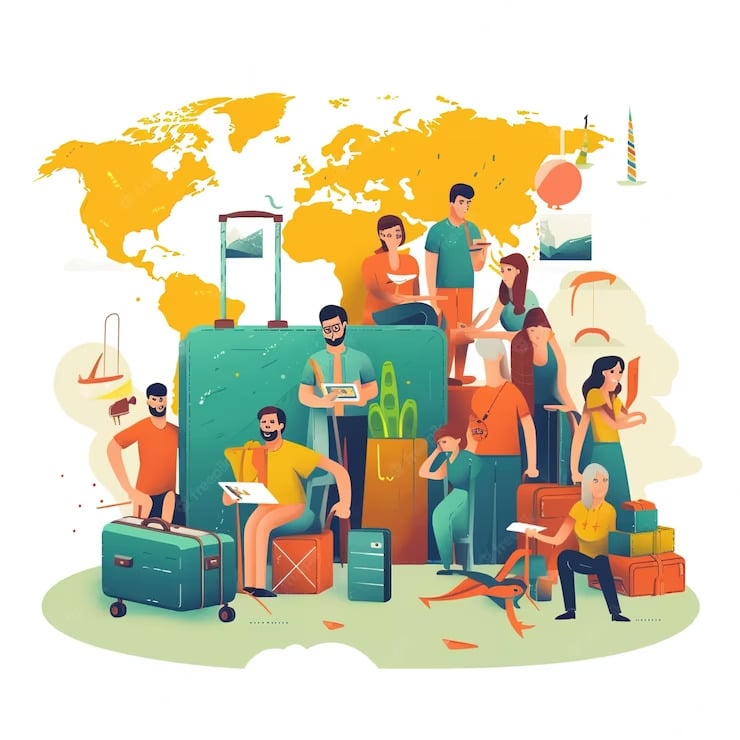
Mass tourism has several advantages, making it an essential part of the tourism industry. Here are some of the benefits of mass tourism:
Boosts Local Economy
Mass tourism can significantly boost the local economy of a tourist destination. It generates much revenue for local businesses, such as hotels , restaurants, and souvenir shops. This, in turn, creates job opportunities for the locals and helps improve their living standards. Mass tourism can also contribute to infrastructure development, such as roads, airports, and public transportation, which can benefit the local community even after the tourists have left.
Increases Cultural Exchange
Mass tourism can increase cultural exchange between tourists and locals. Tourists can learn about the local customs, traditions, and way of life, while locals can learn about the visitors’ culture. This cultural exchange can help to promote understanding and tolerance between different cultures and can also help to preserve the local culture by promoting it to a wider audience.
Provides Affordable Travel Options
Mass tourism provides affordable travel options for people who may not have the means to travel otherwise. The package deals offered by mass tourism companies can be significantly cheaper than individual travel arrangements. This makes travel more accessible to a wider range of people, including those on a budget.
Supports Conservation Efforts
Mass tourism can also support conservation efforts in tourist destinations. The revenue generated by mass tourism can be used to fund conservation projects, such as wildlife conservation and habitat restoration. This can help preserve the destination’s natural beauty and protect it for future generations.
Mass tourism has several advantages, making it an important part of the tourism industry. It can boost the local economy, increase cultural exchange, provide affordable travel options, and support conservation efforts. However, it is important to balance the advantages of mass tourism with its potential negative impacts, such as overcrowding, environmental degradation, and cultural homogenization.
Disadvantages of Mass Tourism

Mass tourism has become increasingly popular in recent years but has drawbacks. Here are some of the disadvantages of mass tourism:
1. Environmental Impact
One of the most significant disadvantages of mass tourism is the environmental impact. Mass tourism can lead to pollution, degradation of natural resources, and damage to ecosystems. The large number of tourists can put a strain on local resources, such as water and energy, and contribute to climate change.
2. Overcrowding
Mass tourism can lead to overcrowding in popular tourist destinations, which can cause inconvenience and discomfort for tourists and locals. Overcrowding can also lead to safety concerns and increase the risk of accidents and incidents.
3. Cultural Impact
Mass tourism can have a negative impact on local cultures and traditions. The influx of tourists can lead to a loss of cultural authenticity and homogenization of local cultures. This can also lead to losing traditional ways of life and displacement of local residents.
4. Economic Impact
While mass tourism can bring economic benefits to a destination, it can also have negative economic impacts. The reliance on tourism can lead to an unstable economy, and the profits from tourism may not benefit local communities. In some cases, tourism can also lead to inflation and increased living costs for locals.
5. Sustainability
Mass tourism is often unsustainable in the long term. The strain on local resources and ecosystems can lead to irreversible damage, and focusing on short-term profits can lead to neglecting long-term sustainability goals.
While mass tourism can bring economic benefits and opportunities for travellers, it is essential to consider its negative impacts on the environment, local communities, and cultures.
Mass Tourism Destinations
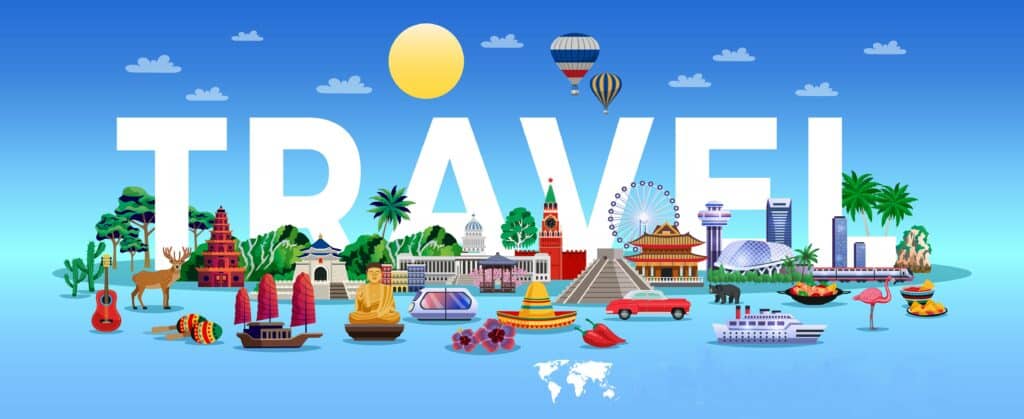
Mass tourism has become popular for people to explore new destinations and experience different cultures. The most popular mass tourism destinations include beaches, mountains, national parks, and historical sites. Here are some examples of popular mass tourism destinations:
Beaches are a popular destination for mass tourism. Some popular beaches include Goa in India, Santorini in Greece, and the Harbor Islands in Boston. These destinations offer beautiful beaches, crystal clear waters, and a variety of activities for tourists to enjoy.
Mountains are another popular destination for mass tourism. Central Massachusetts and the Greater Merrimack Valley are popular destinations for tourists who want to experience the beauty of the mountains. These destinations offer breathtaking views, hiking trails, and other outdoor activities.
National Parks
National parks are also popular destinations for mass tourism. Cape Cod National Seashore is a popular destination for tourists who want to explore the area’s natural beauty. The park offers hiking trails, beaches, and other outdoor activities.
Historical Sites
Historical sites are also popular destinations for mass tourism. The Pyramids of Giza in Egypt and the North of Boston are popular destinations for tourists who want to explore the history of the area. These destinations offer a glimpse into the past and a chance to learn about different cultures.
Overall, there are many popular mass tourism destinations for tourists to explore. Whether you are looking for a beach vacation, a mountain retreat, or a chance to explore historical sites, there is something for everyone.
Impact on Local Communities
Mass tourism significantly impacts local communities, and the effects can be positive and negative. While tourism can bring economic benefits to a region, it can also negatively impact the local culture, jobs, infrastructure, local businesses, gentrification, and over-tourism.
One of mass tourism’s most significant negative impacts on local communities is the erosion of local culture. As more tourists flock to a destination, the local culture can become homogenized, and the unique traditions and ways of life can be lost. This can lead to a loss of identity for the local community and a decline in cultural heritage.
Another negative impact of mass tourism is the effect on jobs. While tourism can create jobs in the hospitality and service industries, it can also lead to a decline in traditional industries. For example, in some regions, farming and fishing have been replaced by tourism, leading to a loss of traditional jobs and a decline in local economies.
Infrastructure can also be negatively impacted by mass tourism. As more tourists visit an area, the demand for infrastructure such as roads, airports, and hotels increases. This can lead to overcrowding, traffic congestion, and strain on local resources.
Local businesses can also be impacted by mass tourism. While some businesses may benefit from increased tourism, others may struggle to compete with larger international chains. This can lead to a decline in local businesses and a loss of economic diversity in the region.
Gentrification is another issue that can arise from mass tourism. As more tourists visit an area, property prices can rise, leading to the displacement of local residents. This can lead to social and economic inequality, as the local community is pushed out of its own neighbourhood.
Finally, mass tourism is a growing concern in many popular tourist destinations. When the number of tourists visiting a destination exceeds the region’s carrying capacity, it can lead to overcrowding, environmental degradation, and a decline in the quality of life for local residents.
In conclusion, while mass tourism can bring economic benefits to a region, it is essential to consider the impact on local communities. The negative impacts of mass tourism can be significant, and it is crucial to find a balance between economic growth and sustainable tourism practices.
Economic Aspects of Mass Tourism
Mass tourism can have a significant impact on the economy of a destination. It can generate income and create employment opportunities, but it can also put a strain on resources and infrastructure.
One of the main benefits of mass tourism is the income it generates for local economies. Tourists spend money on accommodation, food, transportation, and activities, which can contribute to the local economy. According to a report by the Massachusetts Office of Travel and Tourism, travel expenditures in Massachusetts in 2018 generated over $24 billion in direct spending, which supported over 150,000 jobs and generated $1.6 billion in state and local taxes.
However, mass tourism can also put a strain on resources and infrastructure. Popular tourist destinations may struggle to accommodate the influx of visitors during peak season, leading to overcrowding and strain on local resources such as water and energy. Additionally, the increased demand for goods and services can drive up prices, making it harder for locals to afford basic necessities.
Another economic aspect of mass tourism is profit. Large tourism companies may benefit from the high volume of tourists by making significant profits. However, smaller local businesses may struggle to compete with larger companies, leading to a concentration of wealth in the hands of a few.
Overall, the economic impact of mass tourism is complex and multifaceted. While it can generate income and create employment opportunities, it can also strain resources and infrastructure and concentrate wealth in the hands of a few.
Tourist Behavior and Expectations
Tourist behaviour and expectations play a crucial role in the mass tourism industry. Tourists are individuals who travel to different places for leisure, business, or other purposes. They have certain expectations and requirements from their travel experience, which can influence their behaviour during their stay.
One of the primary expectations of tourists is to have a comfortable and enjoyable experience. They expect high-quality accommodations, transportation, food, and entertainment options. Tourists also expect to be treated with respect and hospitality by the locals and the service providers. They want to feel welcomed and appreciated during their stay.
Another important aspect of tourist behaviour is their spending habits. Tourists tend to spend significant money on their travel, which can boost the local economy. However, they also expect value for their money and are likely to avoid places that are overpriced or do not meet their expectations.
Family tourists are a significant segment of the mass tourism industry. They have unique expectations and requirements, such as child-friendly accommodations, entertainment options, and safety measures. Family tourists also tend to plan their trips well in advance and are likely to choose destinations that offer a variety of activities for all members of the family.
Responsible tourism is another emerging trend in the mass tourism industry. Responsible tourists are conscious of their impact on the environment and the local communities. They expect the destinations and service providers to follow sustainable practices and reduce their carbon footprint. Responsible tourists will likely choose eco-friendly accommodations, participate in local conservation efforts, and support local businesses.
Overall, understanding tourist behaviour and expectations is essential for the success of the mass tourism industry. Service providers and destinations that meet and exceed these expectations will likely attract more visitors and generate higher revenues.
Role of Media and Internet
The role of media and the internet has greatly influenced the rise of mass tourism. With the advent of social media platforms such as Instagram, travellers are constantly exposed to images of exotic destinations and experiences, which can influence their travel decisions. In fact, a study suggests that social media has a significant impact on tourists’ choices of travel components, with most studies focusing on the impact of social media on behavioural intention.
The media has also played a vital role in promoting tourism, especially in countries where tourism is a major source of revenue. The media is often used to showcase a destination’s natural beauty, culture, and attractions, which can attract tourists. For example, television shows such as Anthony Bourdain’s “Parts Unknown” and Samantha Brown’s “Places to Love” have helped to promote off-the-beaten-path destinations to a wider audience.
The internet has also revolutionized the way people plan and book their travel. Travellers can now easily research and book flights, accommodations, and activities through online travel agencies and booking platforms. This has led to increased independent travel, where travellers can plan their own itineraries and customize their travel experiences.
However, the internet has also brought about challenges for the tourism industry. With the ease of access to information, travellers are now more aware of the negative impacts of tourism, such as overcrowding, environmental degradation, and cultural commodification. This has led to a rise in sustainable and responsible tourism practices, where travellers seek to minimize their impact on the environment and local communities.
Overall, the role of media and the Internet in mass tourism cannot be overstated. While it has brought about challenges, it has also opened up new opportunities for travellers to explore the world and for destinations to promote themselves to a wider audience.
Tour Operators and Travel Agents

Tour operators and travel agents play a significant role in mass tourism. They are intermediaries between the tourists and the service providers, such as hotels, airlines, and transportation companies. Their main function is to package and sell tours to holiday destinations, including flights, accommodation, and other services.
Travel agents are professionals who provide travel-related services to clients. They offer advice on travel destinations, make reservations for flights, hotels, and other services, and provide information on travel insurance, visas, and other travel-related documents. They earn a commission from the service providers for the services they sell.
On the other hand, tour operators specialize in organizing and selling packaged tours to holiday destinations. They create tour packages that include transportation, accommodation, meals, and other services. They work with travel agents to sell their tour packages to clients. Tour operators profit by buying services from service providers at a discounted rate and selling them to clients at a higher price.
Mass tourism has led to the growth of travel agents and tour operators. They have become essential players in the tourism industry, providing clients with a wide range of services. They have also contributed to the growth of the tourism industry by promoting tourism destinations and creating new tourism products.
One of the main advantages of using travel agents and tour operators is convenience. They provide a one-stop shop for all travel-related services, making it easy for clients to plan their holidays. They also offer expert advice on travel destinations and provide assistance in case of any problems during the trip.
However, there are also some disadvantages to using travel agents and tour operators. One of the main disadvantages is the cost. Travel agents and tour operators charge a commission for their services, which can add up to a significant amount. Moreover, some travel agents and tour operators may not provide accurate information or may misrepresent the services they offer.
In conclusion, travel agents and tour operators are essential players in the mass tourism industry. They provide clients with a wide range of services, including packaged tours, flights, accommodation, and other travel-related services. While they offer convenience and expert advice, they also have disadvantages, such as cost and potential misrepresentation of services.
Environmental Concerns
Mass tourism has been associated with a wide range of environmental concerns. One of the most significant environmental concerns is the impact of tourism on the natural environment. The increase in tourist activities has resulted in a higher demand for natural resources, such as water, energy, and land. This has led to the degradation of natural habitats, deforestation, and soil erosion in some areas.
Another environmental concern is the amount of waste generated by mass tourism. Tourists generate significant waste, including plastic bottles, food packaging, and disposable items. This waste often ends up in landfills or littered in the environment, leading to pollution and negative impacts on wildlife.
Sustainable travel is an approach that seeks to minimize the negative impact of tourism on the environment. This includes promoting green tourism practices, such as using renewable energy sources, reducing waste, and conserving natural resources. Sustainable travel also involves educating tourists about the importance of responsible tourism practices and encouraging them to participate in environmentally friendly activities.
Carrying capacity is another important concept in mass tourism. It refers to the maximum number of tourists a destination can accommodate without causing negative impacts on the environment. When the number of tourists exceeds the carrying capacity of a destination, it can lead to overcrowding, pollution, and damage to natural habitats.
Finally, carbon emissions associated with transportation and accommodation significantly contribute to climate change. Mass tourism is responsible for significant carbon emissions contributing to global warming. Sustainable travel practices, such as using public transportation, choosing eco-friendly accommodations, and offsetting carbon emissions, can help reduce the impact of tourism on climate change.
Future of Mass Tourism
Mass tourism has been a significant contributor to the global economy for decades. However, recent events have highlighted the need for a more sustainable and responsible approach to tourism. The COVID-19 pandemic has caused a significant decline in mass tourism, leading to the closure of many businesses and job losses. The future of mass tourism is uncertain, and it will likely require significant changes to adapt to the new reality.
One of the most significant challenges facing mass tourism is sustainability. The industry significantly impacts the environment, and there is a growing awareness of the need to reduce this impact. Governments and tourism organizations increasingly focus on sustainable tourism practices, such as reducing waste, conserving energy, and protecting natural resources. The future of mass tourism will depend on its ability to adapt to these new practices and become more sustainable.
Another challenge facing mass tourism is the changing preferences of travellers. Many people are now looking for more authentic and immersive travel experiences rather than traditional mass tourism offerings. This trend will likely continue, and mass tourism must adapt to meet these changing preferences.
Technology is also likely to play a significant role in the future of mass tourism. Advances in technology are making travel more accessible and convenient, and this trend will likely continue. For example, virtual reality technology is already used to provide immersive travel experiences, which will likely become more widespread.
In conclusion, the future of mass tourism is uncertain, but it is clear that significant changes will be required to adapt to the new reality. Sustainability, changing traveller preferences, and technology will likely be the key drivers of change in the industry. The industry’s challenge will be adapting to these changes while continuing to provide high-quality travel experiences for its customers.
In conclusion, mass tourism is a significant part of the tourism industry, associated with package holidays, popular tourist attractions, and well-known resorts. However, the growth of mass tourism has led to several challenges, including over-tourism, environmental degradation, and cultural homogenization.
The future of mass tourism is uncertain, with several factors influencing its growth and development. The rise of sustainable tourism, technological advancements, and changing consumer preferences will likely impact mass tourism’s future.
Despite the challenges, mass tourism continues to provide economic benefits to many destinations. However, balancing economic benefits with environmental and social sustainability is essential to ensure the industry’s long-term viability.
Overall, the future of mass tourism is complex and multifaceted, with several challenges and opportunities. It is crucial to adopt a holistic approach to tourism development, taking into account the economic, social, and environmental impacts of mass tourism.
Number of tourist arrivals
Somewhere on Earth this year
The World Counts • Impact through Awareness
The world counts impact through awareness, 45 arrivals every second.
There are over 1.4 billion tourists arriving at their destination every year. That’s 45 arrivals every single second.
Exponential growth of tourism
In 1950 there were 25 million international tourist arrivals, in 1970 the number was 166 million, and by 1990 it had grown to 435 million. From 1990 to 2018 numbers more than tripled reaching 1.442 billion. By 2030, 1.8 billion tourist arrivals are projected.
Negative environmental impacts of tourism
The negative environmental impacts of tourism are substantial. They include the depletion of local natural resources as well as pollution and waste problems. Tourism often puts pressure on natural resources through over-consumption, often in places where resources are already scarce.
Tourism puts enormous stress on local land use, and can lead to soil erosion, increased pollution, natural habitat loss, and more pressure on endangered species. These effects can gradually destroy the environmental resources on which tourism itself depends.
Tourism often leads to overuse of water
An average golf course in a tropical country, for example, uses as much water as 60,000 rural villagers. It also uses 1500 kilos of chemical fertilizers, pesticides and herbicides per year.
Tourism and climate change
Tourism contributes to more than 5 percent of global greenhouse gas emissions, with transportation accounting for 90 percent of this.
By 2030, a 25% increase in CO2-emissions from tourism compared to 2016 is expected. From 1,597 million tons to 1,998 million tons.
394,730,543
Tons of waste dumped
Globally, this year
Square kilometers of land area being degraded
793,184,608,700
Tons of freshwater used
Worldwide, this year
8,024,943,431
Tons of CO2 emitted into the atmosphere
The alternative: Eco-tourism
Eco-tourism offers a greener alternative. Eco-tourism is a rapidly growing industry, with potential benefits for both the environment and the economies of the tourist destinations.
Number of eco-tourist arrivals

- World Population
- The Consumer Economy
- Our Global Challenges
- The Project
- Keep the optimism
- Support green companies
- Partners and Fundings
- events & news
- green hotels
- who’s talking about us
Solutions to Overtourism: Towards New Strategies of Sustainable Tourism
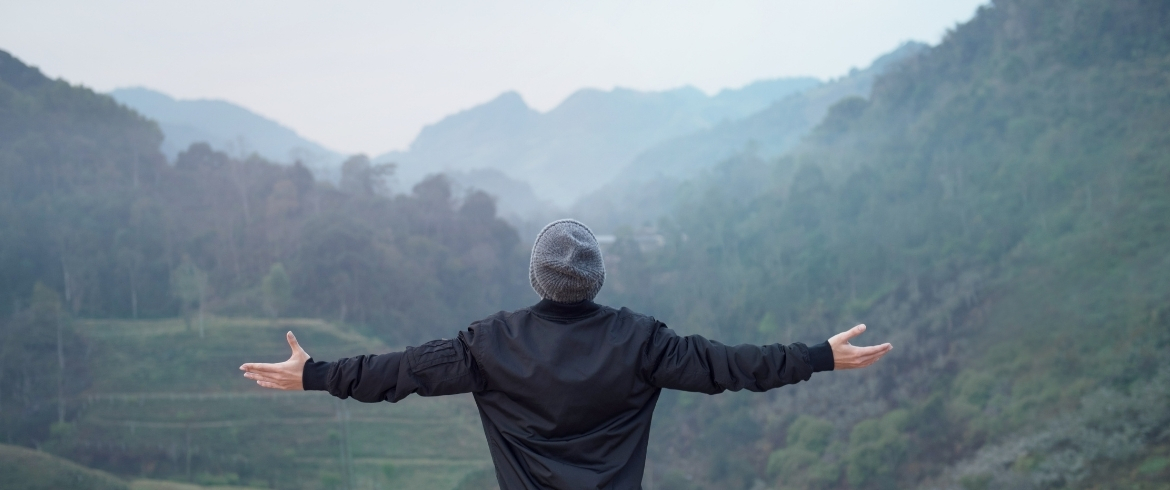
Many destinations are struggling with Overtourism. From Gated Tourism to Deseasonalisation, find out the possible solutions to overtourism.
According to the World Tourism Organization, in 2030 the international flow of tourists will even exceed 2 billion. And even today , these flows are not equally distributed , as Overtourism affects only some specific places at specific times .
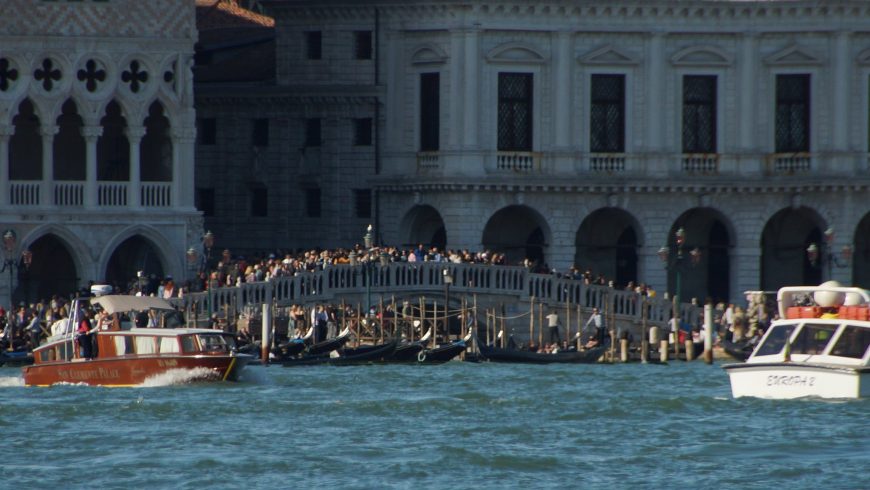
Millions of tourists overcrowd beaches , art cities , historical and cultural sites , and natural parks .
This kind of tourists is almost always day-trippers . They do not usually stay overnight , as they only stroll around for some hours , according to a ‘being there , done that ‘ attitude for which they want to do and see as much as possible .
And it is this very quantity over quality approach that is damaging forever the most beautiful areas in the world .
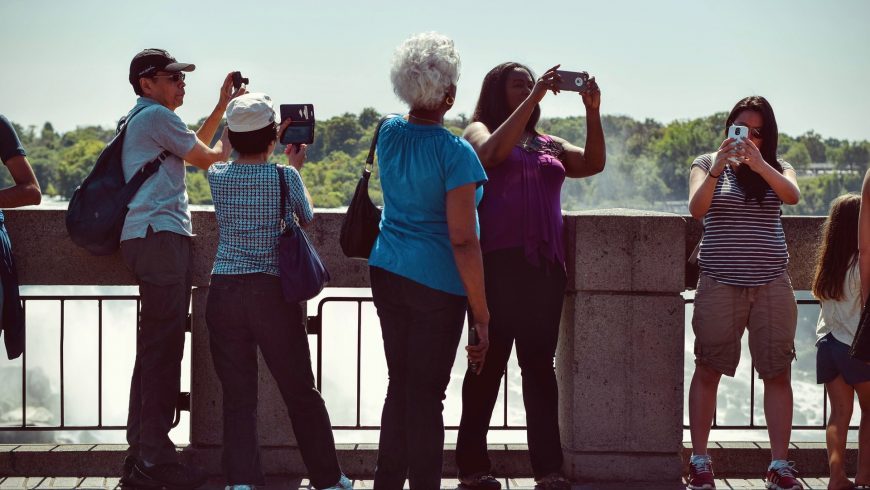
According to Future100 , these destinations are sadly undergoing a process of ‘ Disneyfication ’. They are becoming a sort of playground or a theme park , in which ‘ Disneyland -size crowds’ only take some selfies , and passively stroll around. They do not actively look for meaningful experiences and do not care about respecting other tourists , or the environment .
Could tourists actually be too much for a destination? Even if large tourist flows may bring large economic revenues , they also bring a strong negative impact on a destination.
Why Should Everybody Care About Overtourism?
According to the World Tourism Organisation, Overtourism is the impact of tourism on a destination, that excessively influences in a negative way the quality of life of locals and the quality itself of the visitor’s experience .
And it goes without saying that this adversely impacts the environment too.
In fact, Overtourism translates into irreversible , negative , environmental effects, which may change forever the uniqueness of certain destinations.
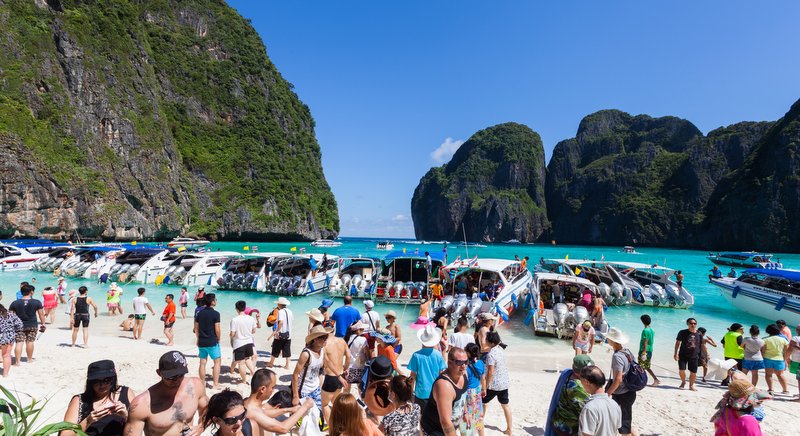
This will result in an inauthentic , shallow and too fast experience, which is harmful not only to locals and to the environment , but also for ourselves as visitors and for any other tourist who has decided to visit the same place at the same time.
Overtourism in Alpine Region Areas
It is also clear that the issue of Overtoursim gets even worse in areas such as natural parks and mountain areas , such as the Alps .
These areas are even protected ones, as they are housing the majority of flora and fauna species in Europe.
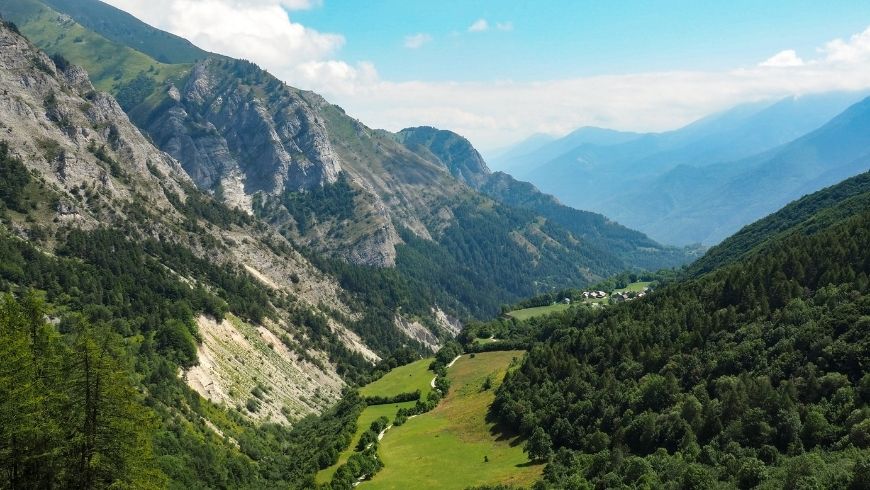
In fact, these areas usually attract tourists who look for a slow , immersive and sustainable tourist experience.
As they look for quiet and untouched natural areas, on the contrary , they most often end up finding themselves in a massive crowd of day-trippers .
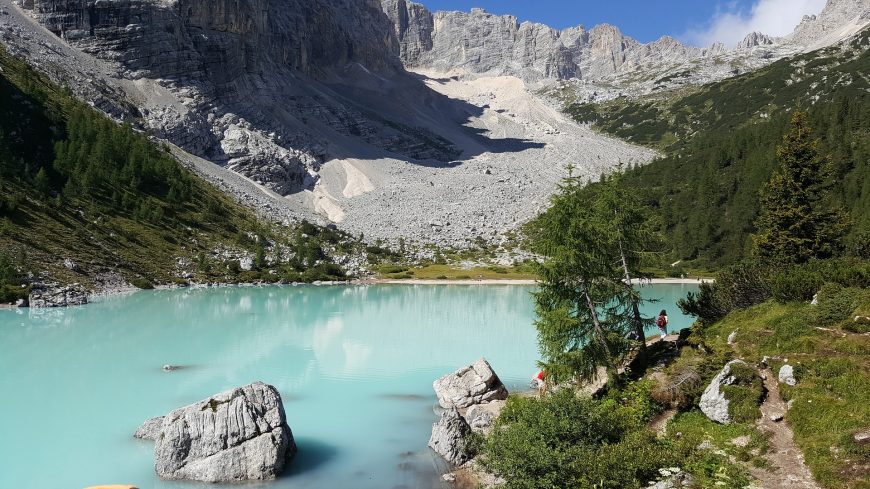
How can you help to contrast Overtourism ? Today you can choose to be a responsible tourist in following the good practices of sustainable tourism , as well as in supporting some innovative strategies which had been designed to end tourist overcrowding and provide more deep and meaningful experiences .
Sustainable Tourism and Solutions to Overtourism
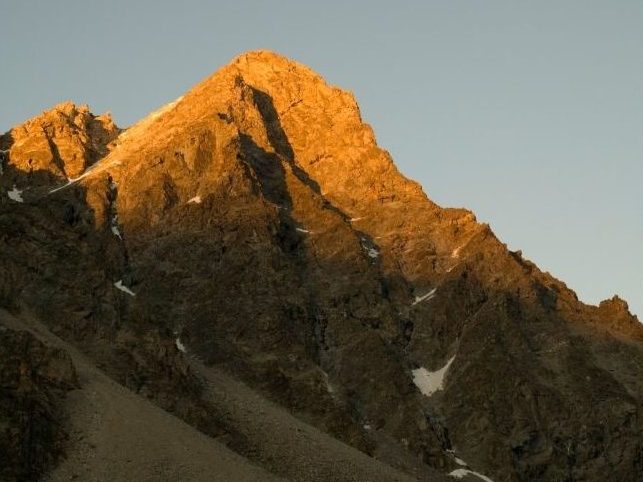
Luckily today even the supply and demand of sustainable tourism are increasing . In fact, also due to the current Covid situation , a growing number of tourists is looking for a type of holiday which allows social distancing and keeps the number of other visitors to a minimum .
It is all about holidays where tourists can stay outdoor while breathing fresh mountain air and listen to the soothing sounds of nature.
This translates into a quest for a more sustainable , authentic and slower tourist experience, especially situated in green mountain areas, such as the Alpine region.
And especially during last summer , there has been an incredible increase in the tourist demand towards these destinations .
How to Contrast Overtourism? Gated Tourism and Deseasonalisation
As solutions to Overtourism , many destinations are testing new approaches , in order to create truly sustainable tourism from every point of view. This concerns precisely those areas which are generally subject to overcrowding , or which could shortly become so.
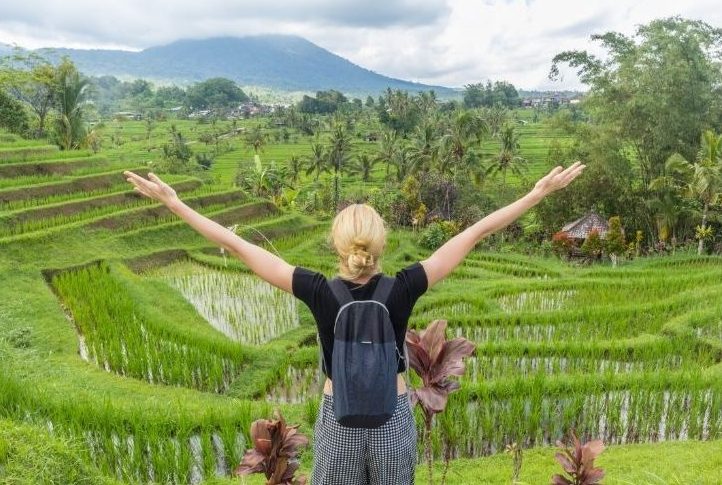
Two interesting strategies are Gated tourism and Deseasonalisation . These 2 strategies have already been adopted in such areas as Komodo National Park in Indonesia , and the sacred Uluru Mountain in Australia .
It would be interesting to take into account these approaches in the Alpine Region too. They would allow to both protect the environment and inhabitants , while also allowing social distancing and a more authentic experience.
1. Gated Tourism

One of the best solutions to overtourism, experimented by some natural areas, is Gated Tourism . It’s a system that provides new regulations either limiting entries in a certain place or over a certain period of time.
This could happen:
- either by implementing a reservation system on payment
- or by making a place accessible to visitors only in certain periods of the year .
Gated tourism would not only limit tourist flows but would actually attract quality tourists, who are willing to spend money to access certain areas, or to visit them in specific periods of the year.
Such a tourist would certainly visit a destination in a slow , authentic and sustainable fashion.
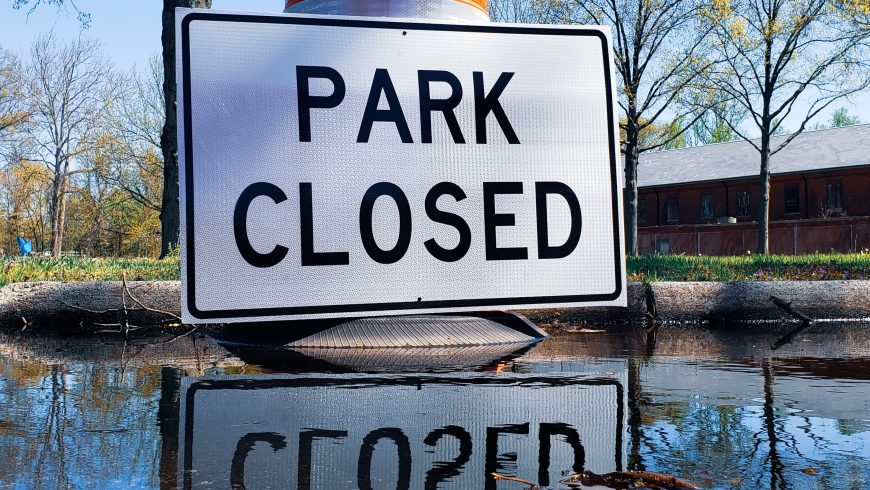
2. Deseasonalisation
One of the main characteristics of the tourism sector today is seasonality . However, this can become a problem , especially when connecting to Overtourism . And especially in this historical period.

It would be interesting to adopt Deseasonalisation in the context of redistribution of tourist flows. For example, tourists could be encouraged to visit destinations in different periods or over longer ones.
How to do that? A possibility is the one of offering the same product to a different target, or further segmenting tourism in more specific niches . Some examples are culinary tourism, wellness tourism, or sports tourism.
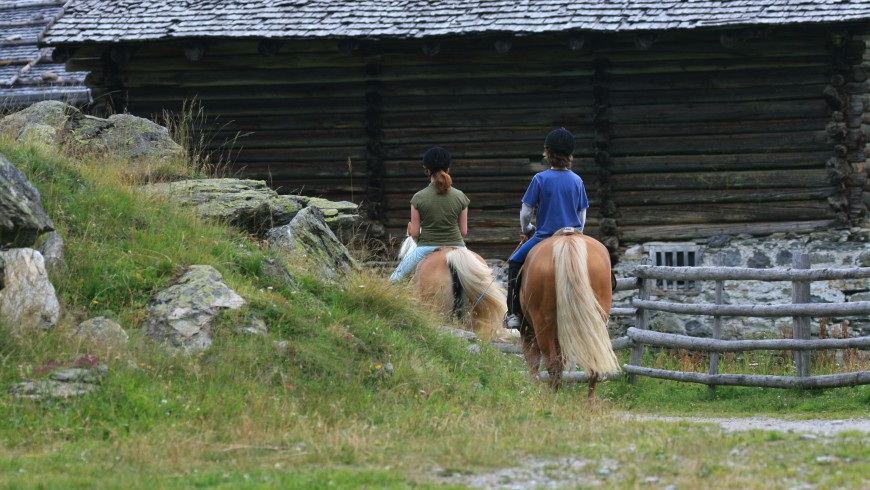
Another possibility is offering interesting packaged activities in different seasons of the year. Packages could perhaps connect to places , events or initiatives of a place that tourists usually barely know.
Promoting other aspects which make the Alpine region unique, as compared to those that mostly make them famous all over the world is key .
In doing so, the environment , local tourist infrastructures, and local population would be more able to support tourist flows, and will ultimately provide visitors with a more memorable experience. Such a shift would truly enhance the uniqueness of a certain area and the tourist experience itself.
The Desire to Travel will be Uncontrollable, But we Can Control Tourist Flows

Safeguarding tourists and the environment, while preserving the uniqueness of the Alpine territories, will therefore be fundamental in the Post-Covid era .
If on the one hand, given the prolonged lockdown we all have experienced, the desire to travel will be uncontrollable , the one thing we can control is the tourist flow .
And it will be possible to do so by following strategies such as Gated Tourism and Deseasonalization .
Such approaches would preserve both the uniqueness of the Alpine territories and the quality of Alpine tourism itself.
What of these solutions to overtourism could be more successful?
Featured image via Canva
You might also like
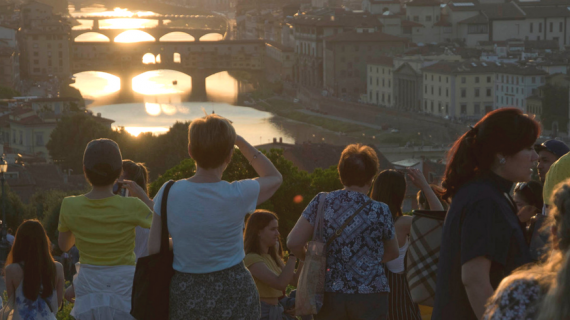
Save our cities from overtourism!
SET (Sud-Europe facing Overtourism): a network created by 15 European cities to denounce the destructive effects of mass tourism and promote the research for a new touristic system. Mass tourism brings enormous amounts of tourists in the main cities. The effects of the so-called overtourism are indeed severe. Cities lost their original artistic, natural and cultural heritage: […]
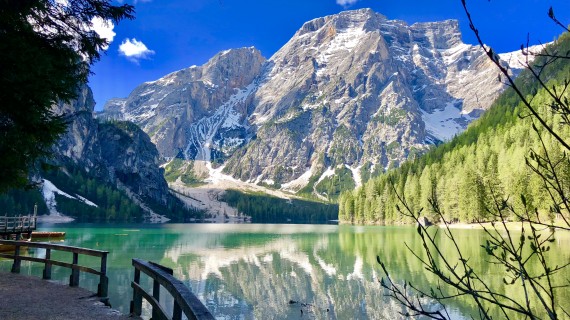
Lake Braies: a sustainable solution against overtourism
Lake Braies, in South Tyrol, is the largest lake in the Dolomites. Its emerald green and turquoise waters make it one of the most loved Italian lakes. However, the place is facing a serious overtourism problem, and an efficient solution was adopted. A few years ago, Lake Braies was mainly frequented by hikers, bikers, and […]
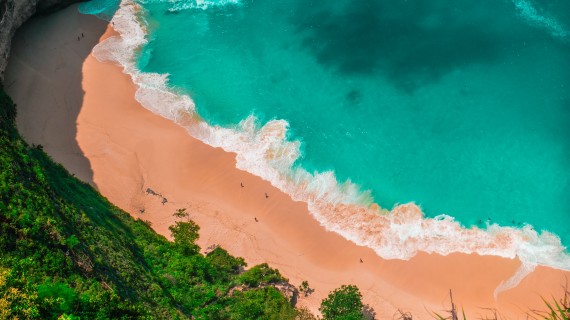
Pacific Islands: the Paradises ruined by ‘Overtourism’
‘Overtourism’: too much mass tourism threatens fragile ecosystems, such as the Pacific Islands. Philippines, Indonesia, and Thailand the most affected countries. Strategies to preserve destinations and promote responsible tourism are essential Admiring the photos of the dream beaches of some islands of Polynesia or the Philippines is not surprising if in the last few years […]
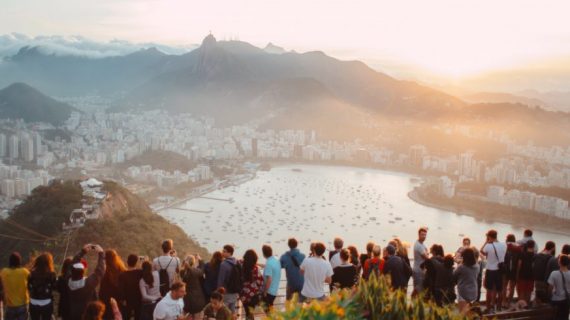
Overtourism: Causes, Consequences and Solutions
Overtourism: one of the words that people use most in recent years. In effect, more and more often, tourist destinations suffer from overtourism, tourism overcrowding. Places that everyone wants to see because they are “famous”. Movie scenes shot in locations (such as Lake Braies) that now attract hordes of tourists looking for a short trip. Simply, they […]
- About Us 👨👩👧
The Negative Environmental Impacts of Tourism
The tourism industry is one of the fastest growing industries in the world. On a local, national, and international level, tourism is economically and environmentally significant actor that has great power to affect the future development.
Tourism has the capacity to help support communities and instigate positive environmental change when done with the right approach towards the long-term sustainability in regions and complying with the UN’s 17 Sustainable Development Goals that range from eradicating hunger, gender equality to addressing climate actions based on the specific regional needs.
We can see the rise of the positive trend in the last years. Ecotourism and sustainable tourism have gained popularity in the industry but there are still many areas where improvements need to be done. If the number of tourists in a given area is greater than the capacity of the local environment or supporting infrastructure (which is the case of many popular destinations), negative impacts quickly arise and can become overwhelming for the system.
As we embark on new adventures in foreign countries it’s important to realize what environmental impacts our presence poses to local ecosystems and resources. According to the United Nations Environment Programme (UNEP), the three negative environmental impacts of tourism are: the depletion of natural resources, pollution and physical degradation of ecosystems. We will look at these more in detail now.
How does tourism affect the environment? The negative environmental impacts of tourism
Tourism sector has great influence over wellbeing of local residents. It is an industry that flourishes in large cities as well as remote rural areas rich in natural wonders. For many distant communities, tourism is the only opportunity of generating sufficient income to sustain their lifestyle and traditions. It can bring lot of good to regions, but also lot of bad – fast degradation, extinction, and depletion, if not done with the long-term planning and preservation in mind.
In some situations, it is difficult to realize this negative influence until its too late. We already have a few negative examples and data to look at to see the degrading tendency.
#1 The depletion of natural resources
The depletion of natural resources is a growing concern especially in places where resources are already scarce. Water, in particular, is considered a critical resource which is greatly misused in the tourism sector.
I. Water overuse
In many popular tourist destinations, water is overused by tourists in hotels, for breathtaking swimming pools and luxurious wellness areas. When on vacation, most travelers tend to use much more water for personal use than at home, resulting in larger quantities of wastewater and creating water shortages which affect local residents.
The high tourism season goes usually against the natural water cycle of an area and doesn’t consider years with insufficient rainfall – a problem that is on the rise due to climate shift. The driest months of the year are the months of peaking demand for water in resorts and areas of a special tourist interest. These places get crowded with people who expect to have unlimited accessibility to clean water supply from local sources.
This creates many problems for residents in not having enough water for basic daily needs, as groundwater is often redirected and overdrawn by large hotels, resulting in drying wells of small communities, and increasing salinity of the remaining water table from dissolved minerals in the soil. Additionally, many small farmers struggle with not having water to grow crops – especially during drier years when it hasn’t rained for months.
A special report on Water Equity in Tourism from 2012 mentions a sad statistic. Globally, almost 900 million people still lack access to clean water and 2 million people (mostly children) die every year due to the health problems arising from this hindered access. These numbers include people from countries with popular destinations, mainly in the Global South or Mediterranean.
Zanzibar, Bali, India, but even Greece and Spain are suffering of these consequences. In Zanzibar, an average household consumes a little over 93 liters of water per day, while an average consumption per room in a guesthouse is 686 liters. That is 7 times more. But the difference is even bigger when it comes to a luxurious 5-star hotel room. The consumption rises to unbelievable 3,000+ liters of water per day [3] .
Tourism and agriculture compete for water also in Spain. Spain is important producer of vegetables and fruits for the rest of Europe. The intensive agriculture and greenhouse cultivation requires water to keep up with the demand. At the same time, the country is one of the world’s leading tourist destinations with great demand for water despite the fact that the country has been drought stricken for a couple years in a row due to climate change [4] . Both of these important economic sectors are standing against each other in an unsustainable way.
II. Other resources
The tourism industry depends upon consumption of renewable and non-renewable resources that are available at a given location. This includes variety of minerals, metals, and biomass resources. The industry burns higher amounts of fossil fuels and therefore produces greenhouse gases; affects health of fertile soils needed to grow enough food, and hurts whole ecosystems like, for example, forests or biodiverse wetlands , and this way the impacts reach even the local wildlife. When more recreational facilities are built, natural habitats with their riches are destroyed and animals are driven away into scarce natural areas or conflict with other human projects.
Land resources, such as forests, are affected when trees are used for building materials or collected for fuel. Tourist attractions and accommodations are heavily reliant on energy for heating, provision of hot water and electricity. That is where the energy demand actually follows the same pattern as water consumption.
Imagine a town like Venice. The town has 271 thousand permanent residents [5] but welcomes every year increasing number of tourists. In 2003, 2.75 million tourists visited the town, while in 2019 this number has risen to 5.5 million [6] . Each visitor consumes energy and resources of the town, further contributing to environmental problems linked with the use of fossil fuels and other non-renewable energy sources.
#2 Overconsumption & Waste production, incl. food waste
What is the most common image of a nice vacation at some beautiful beach town? Good food, drinks at the beach, little refreshments, and attractive sights with a variety of relaxing activities for everyone. When on vacation, most of us want to forget daily responsibilities. This includes meal planning or carrying with us that refillable water bottle or other long-term use items like quality slippers or reusable shopping bags.
When indulging on that new experience, many rely on single-use plastic items that are fast to dispose. In fact, tourists can produce twice that much waste in a day than long term residents. It has been estimated that the marine litter in the Mediterranean increases by up to 40 percent during the peak season [8] .
UNEP estimates that one guest can generate from between 1 to 12 kg of solid waste per day when visiting a new place [9] . The numbers vary based on many factors – location, the type of accommodation, personal preferences, and a character of the stay. Based on the predictions, we would see an increase of 251 percent in solid waste production due to tourism through 2050, if countries do not adopt sustainable practices of addressing product cycle and waste disposal.
Tourists also tend to be more reckless with food. Such behavior contributes to food wasting which is a large problem on its own .
However, waste directly produced by a tourist is not the only waste coming from popular destinations. Large portion of solid waste originates from the background services for tourists – laundries, restaurants, wellness, entertainment and accommodations.
Solid waste and littering can degrade ecosystems and alter the physical appearance of the landscape. Marine litter harms marine life, often leading to their death, and degrades sensitive and unique, yet vital, ecosystems.
As more tourism facilities are built, sewage pollution also increases. Sewage runoff in seas and lakes damages terrestrial and aquatic ecosystems, including vulnerable coral reefs which are often the main attraction of a place. Pollution of waterways in any way can stimulate excessive growth of algae, leading to eutrophication, and alter salinity and siltation of water bodies. These are changes to the environment make it difficult for native plants and animals to survive.
#3 Pollution
Pollution in the tourism industry comes in many forms: increased emissions linked to transport and higher need of energy, solid waste as mentioned in the paragraph above, sewage, oil and chemical spills, but even the less talked about noise and light pollution .
One of the reasons why newly hatched sea turtle babies get confused and head in the opposite direction of water, are the artificial lights we installed along coastlines. Baby turtles have strong instinct to follow the light to guide them to the sea where their life journey begins. In nature, the moon reflection on the water was the brightest point on the beach. Nowadays, however, lamps, bars and other lights shine brighter at night and easily confuse the hatchlings to head in the wrong direction and often lose their life because of that.
Noise pollution arises from transportation and recreational vehicles such as snowmobiles and jet skis. Noisy tourist destinations and thoroughfares can disturb and distress wildlife, especially in sensitive ecosystems that are often the reason why tourists visit the location in the first place.
Cruise ships are among the top polluters. These “floating cities” make extra noise in deep waters and migration routes of many aquatic mammals who are highly sensitive to noise levels in their serene environment. But that’s not all. Cruises release high amounts of raw sewage and waste of passengers directly into the water. Unfortunately, their practices of dealing with waste are not transparent and are corrupt. At the same time, these giant ships burn fossil fuel and release pollutants in the air, including excessive amounts of carbon dioxide [9] .
Scientists have also found that bacteria originating from sewage contamination of coastal waters affect coral reefs in numerous locations and is clearly linked to increased popularity as tourist destination. One badly affected example is the Mesoamerican Reef. The Reef has already lost 80 percent of corals to pollution released from insufficient infrastructure of trending destinations, such as Cancun, Tulum or Playa del Carmen, that host increasing numbers of tourists. The main problem here is too fast development of luxurious resorts without specific plans for upgrading wastewater treatment facilities and infrastructure. Unfortunately, this is a common issue of many special locations of natural beauty.
#4 Greenhouse gas emissions and contribution to global warming
Most human activities that encompass modern lifestyle contribute to greenhouse gas emissions. Add to this travel to some exotic destination half-way across the globe and the number grows even bigger, adding up large chunk to our carbon footprint. In total, tourism accounts for more than 5 percent of global emissions of carbon dioxide. This number has been growing steadily and made up around 1,600 million tons of CO2 in 2016 [10] .
According to a report from the World Tourism Organization (UNWTO), the transport is responsible for 75 percent of carbon dioxide emissions in tourism. Air, road, and rail transportation are the main means of travel among tourists. The most polluting form of travel in terms of emissions are the flights – airplanes accounted for 40 percent out of total CO2 emissions in tourism sector in 2005 – especially due to low prices of flights that made this way of travel accessible to masses. The next significant polluter were cars with 32 percent [10] .
Energy consumption to provide services tourists expect is the next large CO2 contributor after the transport. Most accommodations still rely heavily on fossil fuel energy to run air conditioners, water and room heating and other basic or extra services (spas, pools) that consume lot of power. Unfortunately, the burning of fossil fuels has impacts globally and contributes to climate change .
Energy and transport are both needed even when new resorts are built, or to bring diversity of food to offer to guests, to pick up solid waste, or to clean and maintain recreational areas. Carbon dioxide is not the only gas emitted in the air during these processes, other potent greenhouse gasses such as methane or nitrous oxide are as well. The contribution of tourism to climate change is significant and will grow unless switch to renewable energy is made.
#5 Soil erosion and unsustainable land use
Reckless development and fast expansion of infrastructure, insufficient infrastructure like for example not enough parking spots and cars parked on the edges of roads, too crowded natural sites, disrespect of rules (stepping off the path) can easily kickstart erosive processes and speed up degradation of sites.
Tourism and recreational activities often change soil properties, especially if the number of tourists is greater than the ecosystem capacity to deal with it. In the most visited places, tourists trample the vegetation around trails, slowly creating larger patches of vegetation free surface. Frequently walked trails become compacted, which leads to the decreased soil permeability and higher surface runoff. The combination of these factors then results in progressively eroding trails and areas around them as people try to avoid slippery or muddy surface of the main trail.
The same scenario happens when off-road biking, horse riding, having fun with ATVs or parking cars on the side of the road.
Construction sites of new resorts or their expansion into surrounding natural areas, coastlines or on the mountain sites is a big contributor to erosion. Many projects begin by removing vegetation, which affects the ability of soils to absorb water, often leaving soils exposed and vulnerable for many years before the project is finished.
Impervious surfaces of roads, parking lots or around accommodation units do not allow water to infiltrate into the ground. This increases the surface runoff which washes off fragmented pieces of soil even faster. In some locations, spaces between buildings create pathways for wind that magnify its erosive power.
#6 Physical degradation of ecosystems and loss of biodiversity
It is estimated that the average rate of expansion of tourism is 3 percent in developed countries and can be up to 8 percent in developing countries [11] . The industry has many physical impacts on the environment where growth happens, and more short-term visitors come by to admire the place. Many popular tourist sites are located in areas of sensitive ecosystems. Ecosystems such as rain forests, wetlands, mangroves, coral reefs , sea grass beds and alpine regions are often threatened because they are attractive places to developers and tourists who seek the special feeling of a close contact with nature’s wonders.
Construction and infrastructure development can include extensive paving, sand mining, wetland draining, marine development and deforestation. Unsustainable land use practices can lead to sand dune and soil erosion and the deterioration of the landscape.
Not only is the physical environment under threat but living organisms and their natural cycles are also altered. Ecosystem disturbance can lead to destruction in the long term. Poor building regulations and land use planning can also alter the aesthetic appeal of the local environment. This puts a strain on both the natural environment and indigenous structures of the area.
Around the world are many ecotourism activities and sustainable tourism businesses that keep environmental values at the heart of their business practices. Conventional tourism businesses on the other hand don’t always consider natural resources, pollution and environmental degradation.
Before you jet off on your next travel adventure be sure to take some environmental values with you. To reduce your ecological footprint as a tourist be sure to conserve the amount of water you use, dispose of waste appropriately, tread lightly on the land, and become aware of the local ecosystems you choose to visit. Wherever you may go in the world do your best to support green businesses and minimize your impact on the environment.
Was this article helpful?
About greentumble.
Greentumble was founded in the summer of 2015 by us, Sara and Ovi . We are a couple of environmentalists who seek inspiration for life in simple values based on our love for nature. Our goal is to inspire people to change their attitudes and behaviors toward a more sustainable life. Read more about us .
- Agriculture
- Biodiversity
- Deforestation
- Endangered Species
- Green Living
- Solar Energy
Sliding Sidebar

13 Social impacts of tourism + explanations + examples
Disclaimer: Some posts on Tourism Teacher may contain affiliate links. If you appreciate this content, you can show your support by making a purchase through these links or by buying me a coffee . Thank you for your support!
Understanding the social impacts of tourism is vital to ensuring the sustainable management of the tourism industry. There are positive social impacts of tourism, demonstrating benefits to both the local community and the tourists. There are also negative social impacts of tourism.
In this article I will explain what the most common social impacts of tourism are and how these are best managed. At the end of the post I have also included a handy reading list for anybody studying travel and tourism or for those who are interested in learning more about travel and tourism management.
The social impacts of tourism
Preserving local culture, strengthening communities, provision of social services, commercialisation of culture and art, revitalisation of culture and art, preservation of heritage, social change, globalisation and the destruction of preservation and heritage, loss of authenticity , standardisation and commercialisation, culture clashes, tourist-host relationships, increase in crime, gambling and moral behaviour, social impacts of tourism: conclusion, social impacts of tourism- further reading.
Firstly, we need to understand what is meant by the term ‘social impacts of tourism’. I have covered this in my YouTube video below!
To put it simply, social impacts of tourism are;
“The effects on host communities of direct and indirect relations with tourists , and of interaction with the tourism industry”
This is also often referred to as socio-cultural impacts.
Tourism is, at its core, an interactive service. This means that host-guest interaction is inevitable. This can have significant social/socio-cultural impacts.
These social impacts can be seen as benefits or costs (good or bad). I will explain these below.

Positive social impacts of tourism
There are many social benefits of tourism, demonstrating positive social impacts. These might include; preserving the local culture and heritage; strengthening communities; provision of social services; commercialisation of culture and art; revitalisation of customs and art forms and the preservation of heritage.

It is the local culture that the tourists are often coming to visit.
Tourists visit Beijing to learn more about the Chinese Dynasties. Tourists visit Thailand to taste authentic Thai food. Tourists travel to Brazil to go to the Rio Carnival, to mention a few…
Many destinations will make a conserved effort to preserve and protect the local culture. This often contributes to the conservation and sustainable management of natural resources, the protection of local heritage, and a renaissance of indigenous cultures, cultural arts and crafts.
In one way, this is great! Cultures are preserved and protected and globalisation is limited. BUT, I can’t help but wonder if this is always natural? We don’t walk around in Victorian corsets or smoke pipes anymore…
Our social settings have changed immensely over the years. And this is a normal part of evolution! So is it right that we should try to preserve the culture of an area for the purposes of tourism? Or should we let them grow and change, just as we do? Something to ponder on I guess…
Tourism can be a catalyst for strengthening a local community.
Events and festivals of which local residents have been the primary participants and spectators are often rejuvenated and developed in response to tourist interest. I certainly felt this was the way when I went to the Running of the Bulls festival in Pamplona, Spain. The community atmosphere and vibe were just fantastic!

The jobs created by tourism can also be a great boost for the local community. Aside from the economic impacts created by enhanced employment prospects, people with jobs are happier and more social than those without a disposable income.
Local people can also increase their influence on tourism development, as well as improve their job and earnings prospects, through tourism-related professional training and development of business and organisational skills.
Read also: Economic leakage in tourism explained

The tourism industry requires many facilities/ infrastructure to meet the needs of the tourist. This often means that many developments in an area as a result of tourism will be available for use by the locals also.
Local people often gained new roads, new sewage systems, new playgrounds, bus services etc as a result of tourism. This can provide a great boost to their quality of life and is a great example of a positive social impact of tourism.
Tourism can see rise to many commercial business, which can be a positive social impact of tourism. This helps to enhance the community spirit as people tend to have more disposable income as a result.
These businesses may also promote the local cultures and arts. Museums, shows and galleries are fantastic way to showcase the local customs and traditions of a destination. This can help to promote/ preserve local traditions.

Some destinations will encourage local cultures and arts to be revitalised. This may be in the form of museum exhibitions, in the way that restaurants and shops are decorated and in the entertainment on offer, for example.
This may help promote traditions that may have become distant.
Many tourists will visit the destination especially to see its local heritage. It is for this reason that many destinations will make every effort to preserve its heritage.
This could include putting restrictions in place or limiting tourist numbers, if necessary. This is often an example of careful tourism planning and sustainable tourism management.
This text by Hyung You Park explains the principles of heritage tourism in more detail.
Negative social impacts of tourism
Unfortunately, there are a large number of socio-cultural costs on the host communities. These negative social impacts include; social change; changing values; increased crime and gambling; changes in moral behaviour; changes in family structure and roles; problems with the tourist-host relationship and the destruction of heritage.

Social change is basically referring to changes in the way that society acts or behaves. Unfortunately, there are many changes that come about as a result of tourism that are not desirable.
There are many examples throughout the world where local populations have changed because of tourism.
Perhaps they have changed the way that they speak or the way that they dress. Perhaps they have been introduced to alcohol through the tourism industry or they have become resentful of rich tourists and turned to crime. These are just a few examples of the negative social impacts of tourism.
Read also: Business tourism explained: What, why and where

Globalisation is the way in which the world is becoming increasingly connected. We are losing our individuality and gaining a sense of ‘global being’, whereby we are more and more alike than ever before.
Globalisation is inevitable in the tourism industry because of the interaction between tourists and hosts, which typically come from different geographic and cultural backgrounds. It is this interaction that encourage us to become more alike.
Here are some examples:
- When I went on the Jungle Book tour on my travels through Goa, the tourists were giving the Goan children who lived in the area sweets. These children would never have eaten such sweets should they not have come into contact with the tourists.
- When I travelled to The Gambia I met a local worker (known as a ‘ bumster ‘) who was wearing a Manchester United football top. When I asked him about it he told me that he was given the top by a tourist who visited last year. If it was not for said tourist, he would not have this top.
- In Thailand , many workers have exchanged their traditional work of plowing the fields to work in the cities, in the tourism industry. They have learnt to speak English and to eat Western food. If it were not for the tourists they would have a different line of work, they would not speak English and they would not choose to eat burger and chips for their dinner!
Many people believe globalisation to be a bad thing. BUT, there are also some positives. Think about this…
Do you want an ‘authentic’ squat toilet in your hotel bathroom or would you rather use a Western toilet? Are you happy to eat rice and curry for breakfast as the locals would do or do you want your cornflakes? Do you want to struggle to get by when you don’t speak the local language or are you pleased to find somebody who speaks English?
When we travel, most tourists do want a sense of ‘familiar’. And globalisation helps us to get that!

You can learn more about globalisation in this post- What is globalisation? A simple explanation .

Along similar lines to globalisation is the loss of authenticity that often results from tourism.
Authenticity is essentially something that is original or unchanged. It is not fake or reproduced in any way.
The Western world believe that a tourist destination is no longer authentic when their cultural values and traditions change. But I would argue is this not natural? Is culture suppose to stay the same or it suppose to evolve throughout each generation?
Take a look at the likes of the long neck tribe in Thailand or the Maasai Tribe in Africa. These are two examples of cultures which have remained ‘unchanged’ for the sole purpose of tourism. They appear not to have changed the way that they dress, they way that they speak or the way that they act in generations, all for the purpose of tourism.
To me, however, this begs the question- is it actually authentic? In fact, is this not the exact example of what is not authentic? The rest of the world have modern electricity and iPhones, they watch TV and buy their clothes in the nearest shopping mall. But because tourists want an ‘authentic’ experience, these people have not moved on with the rest of the world, but instead have remained the same.
I think there is also an ethical discussion to be had here, but I’ll leave that for another day…
You can learn more about what is authenticity in tourism here or see some examples of staged authenticity in this post.
Read also: Environmental impacts of tourism
Similarly, destinations risk standardisation in the process of satisfying tourists’ desires for familiar facilities and experiences.
While landscape, accommodation, food and drinks, etc., must meet the tourists’ desire for the new and unfamiliar, they must at the same time not be too new or strange because few tourists are actually looking for completely new things (think again about the toilet example I have previously).
Tourists often look for recognisable facilities in an unfamiliar environment, like well-known fast-food restaurants and hotel chains. Tourist like some things to be standardised (the toilet, their breakfast, their drinks, the language spoken etc), but others to be different (dinner options, music, weather, tourist attractions etc).
Do we want everything to become ‘standardised’ though? I know I miss seeing the little independent shops that used to fill the high streets in the UK. Now it’s all chains and multinational corporations. Sure, I like Starbucks (my mug collection is coming on quite nicely!), but I also love the way that there are no Starbucks in Italy. There’s something great about trying out a traditional, yet unfamiliar coffee shop, or any independant place for that matter.
I personally think that tourism industry stakeholders should proceed with caution when it comes to ‘standardisation’. Sure, give the tourists that sense of familiar that they are looking for. But don’t dilute the culture and traditions of the destination that they are coming to visit, because if it feels too much like home….. well, maybe they will just stay at home next time? Just a little something to think about…

On a less philosophical note, another of the negative social impacts of tourism is that it can have significant consequences is culture clashes.
Because tourism involves movement of people to different geographical locations cultural clashes can take place as a result of differences in cultures, ethnic and religious groups, values, lifestyles, languages and levels of prosperity.
The attitude of local residents towards tourism development may unfold through the stages of euphoria, where visitors are very welcome, through apathy, irritation and potentially antagonism when anti-tourist attitudes begin to grow among local people. This is represented in Doxey’s Irritation Index, as shown below.

Culture clashes can also be exasperated by the fundamental differences in culture between the hosts and the tourists.
There is likely to be economic inequality between locals and tourists who are spending more than they usually do at home. This can cause resentment from the hosts towards the tourists, particularly when they see them wearing expensive jewellery or using plush cameras etc that they know they can’t afford themselves.
Further to this, tourists often, out of ignorance or carelessness, fail to respect local customs and moral values.
Think about it. Is it right to go topless on a beach if within the local culture it is unacceptable to show even your shoulders?
There are many examples of ways that tourists offend the local population , often unintentionally. Did you know that you should never put your back to a Buddha? Or show the sole of your feet to a Thai person? Or show romantic affection in public in the Middle East?
A little education in this respect could go a long way, but unfortunately, many travellers are completely unaware of the negative social impacts that their actions may have.
The last of the social impacts of tourism that I will discuss is crime, gambling and moral behaviour. Crime rates typically increase with the growth and urbanisation of an area and the growth of mass tourism is often accompanied by increased crime.
The presence of a large number of tourists with a lot of money to spend and often carrying valuables such as cameras and jewellery increases the attraction for criminals and brings with it activities like robbery and drug dealing.
Although tourism is not the cause of sexual exploitation, it provides easy access to it e.g. prostitution and sex tourism . Therefore, tourism can contribute to rises in the numbers of sex workers in a given area. I have seen this myself in many places including The Gambia and Thailand .
Lastly, gambling is a common occurrence as a result of tourism. Growth of casinos and other gambling facilities can encourage not only the tourists to part with their cash, but also the local population .
As I have demonstrated in this post, there are many social impacts of tourism. Whilst some impacts are positive, most unfortunately are negative impacts.
Hopefully this post on the social impacts of tourism has helped you to think carefully about the impacts that your actions may have on the local community that you are visiting. I also hope that it has encouraged some deeper thinking with regards to issues such as globalisation, authenticity and standardisation.
If you are interested in learning more about topics such as this subscribe to my newsletter ! I send out travel tips, discount coupons and some material designed to get you thinking about the wider impacts of the tourism industry (like this post)- perfect for any tourism student or keen traveller!
As you can see, the social impacts of tourism are an important consideration for all industry stakeholders. Do you have any comments on the social impacts of tourism? Leave your comments below.
If you enjoyed this article on the social impacts of tourism, I am sure that you will love these too-
- Environmental impacts of tourism
- The 3 types of travel and tourism organisations
- 150 types of tourism! The ultimate tourism glossary
- 50 fascinating facts about the travel and tourism industry
Liked this article? Click to share!
Winter is here! Check out the winter wonderlands at these 5 amazing winter destinations in Montana
- Travel Tips
What Is Mass Tourism
Published: December 12, 2023
Modified: December 28, 2023
by Hermione Trull
- Plan Your Trip
- Sustainability
Introduction
Travel and tourism have become increasingly popular in recent years, experiencing a significant growth in numbers. This surge in travel can be attributed to various factors, such as increased disposable income, improved transportation systems, and the growing desire for new experiences and adventure. However, with this exponential growth comes the concept of mass tourism, which has both positive and negative implications.
Mass tourism is a term used to describe the phenomenon of large numbers of people traveling to and visiting the same destinations at the same time. It involves the mass movement of tourists to popular hotspots, often resulting in overcrowding, strain on local resources, and potential negative impacts on the environment, society, and local economies.
This article will delve into the concept of mass tourism, exploring its definition and the factors that contribute to its rise. We will also discuss the environmental, social, and economic impacts of mass tourism, as well as consider sustainable tourism as an alternative approach to travel. By understanding the issues associated with mass tourism and exploring sustainable solutions, we can work towards a more responsible and balanced approach to travel and tourism.
Definition of Mass Tourism
Mass tourism can be defined as a form of tourism that involves the movement of large numbers of people to the same tourist destinations, typically popular and well-known places. It is characterized by the concentration of visitors in specific areas and the simultaneous arrival of tourists during peak seasons.
The key aspect of mass tourism is the sheer volume of tourists visiting a particular location, often resulting in overcrowding. These destinations are often marketed as must-visit places, attracting visitors from all over the world. Examples of popular mass tourism destinations include iconic landmarks like the Eiffel Tower in Paris, the Taj Mahal in India, or the Great Wall of China.
Mass tourism is facilitated by various factors, such as affordable transportation options, the availability of budget accommodations, and the influence of media and advertising. With the rise of social media and travel influencers, certain destinations have experienced a surge in popularity, contributing to the phenomenon of mass tourism.
It is important to note that mass tourism is not inherently negative. It can bring economic benefits to local communities, creating jobs and generating revenue through visitor spending. However, it is essential to recognize and address the potential negative impacts that mass tourism can have on the environment, local culture, and the well-being of residents in these destinations.
The concept of mass tourism is closely related to the idea of overtourism, which refers to the point at which the number of tourists overwhelms the capacity and limits of a destination. When a destination experiences overcrowding and is unable to sustain the influx of tourists, it can lead to negative consequences for both the visitors and the local community.
Overall, the definition of mass tourism revolves around the movement of a large number of people to specific destinations, resulting in overcrowding and potential negative impacts. By understanding this concept, we can explore strategies to mitigate the challenges associated with mass tourism and promote more sustainable and responsible travel practices.
Factors Contributing to Mass Tourism
Mass tourism is influenced by a variety of factors that contribute to its growth and popularity. Understanding these factors can help shed light on the reasons behind the rise of mass tourism and the challenges it presents.
1. Accessibility: Improved transportation systems, including affordable flights, high-speed trains, and cruise ships, have made travel more accessible to people around the world. This increased connectivity has made it easier for individuals to reach popular destinations, resulting in higher tourist numbers.
2. Globalization: The interconnectedness of the world through technology and communication has made travel more appealing and feasible. People are exposed to different cultures, destinations, and attractions, fueling their desire to explore the world and check off popular destinations from their bucket lists.
3. Marketing and Advertising: Effective marketing campaigns and advertising play a crucial role in promoting destinations and attracting tourists. Through enticing visuals, persuasive narratives, and strategic branding, destinations are positioned as must-visit places, driving the demand for mass tourism.
4. Social Media and Influencers: The advent of social media platforms has revolutionized the way people travel. Travel influencers and bloggers provide inspiration, recommendations, and firsthand experiences, creating a desire among their followers to visit the same destinations. The viral nature of content on social media has contributed to the rapid growth of mass tourism.
5. Economic Factors: Economic considerations also play a significant role in mass tourism. Affordable accommodation options, discounted travel packages, and competitive prices make travel more accessible and appealing to a larger audience. Additionally, the economic benefits that tourism brings to local communities, such as job creation and increased revenue, further incentivize destinations to cater to mass tourism.
6. Political Stability: Political stability and the absence of conflicts or security concerns in a destination can greatly influence the growth of mass tourism. Tourists are more likely to visit places that are perceived as safe and stable, leading to increased visitor numbers.
While these factors contribute to the rise of mass tourism, it is important to recognize the potential negative impacts that can arise from the overwhelming influx of tourists. Balancing the desire for travel with sustainability and responsible tourism practices is crucial in managing the growth of mass tourism and its associated challenges.
Environmental Impacts of Mass Tourism
Mass tourism can have significant environmental impacts on the destinations it attracts. The sheer volume of tourists, coupled with unsustainable practices, can put a strain on natural resources, ecosystems, and contribute to climate change. Here are some key environmental impacts of mass tourism:
1. Overcrowding: Popular tourist destinations often experience overcrowding during peak seasons, which can lead to congestion and pressure on infrastructure. This can result in increased pollution, waste generation, and stress on local ecosystems.
2. Loss of Biodiversity: In some cases, mass tourism can lead to the destruction of natural habitats and loss of biodiversity. The development of hotels, resorts, and tourist infrastructure can encroach upon sensitive ecosystems, displacing wildlife and disrupting their habitats.
3. Pollution: The increased number of visitors brings with it an increase in pollution. Air pollution from transportation, such as planes and cars, and water pollution from cruise ships and recreational activities, can have detrimental effects on the environment. Improper waste management and littering can also degrade natural ecosystems.
4. Resource Depletion: The high demand for resources by tourists, including water, energy, and food, can deplete local resources. The extraction of water for hotels and resorts can strain water sources, especially in regions with limited water availability. The consumption of energy and non-renewable resources can contribute to environmental degradation.
5. Climate Change: Mass tourism is a significant contributor to carbon emissions due to transportation, accommodation, and recreational activities. Air travel, in particular, emits greenhouse gases that contribute to climate change. The increased carbon footprint from mass tourism can exacerbate the effects of global warming and impact local ecosystems.
6. Disturbance of Natural Ecosystems: Activities associated with mass tourism, such as hiking, snorkeling, and wildlife viewing, can disrupt natural ecosystems. Trampling on delicate flora and fauna, disturbing nesting sites, and stressing wildlife can have long-term consequences on the biodiversity and ecological balance of the destination.
Addressing these environmental impacts requires a concerted effort from both tourists and destinations. Implementing sustainable practices, such as promoting responsible tourism, investing in renewable energy, managing waste effectively, and preserving natural habitats, can help mitigate the negative effects of mass tourism on the environment. Additionally, raising awareness among tourists about their role in minimizing their ecological footprint and respecting natural resources is essential for long-term sustainable tourism.
Social and Cultural Impacts of Mass Tourism
Mass tourism can have profound social and cultural impacts on the destinations and local communities it attracts. While tourism can bring economic opportunities and cultural exchange, the rapid growth and influx of tourists can also have negative consequences. Here are some key social and cultural impacts of mass tourism:
1. Crowding and Displacement: The sheer numbers of tourists can result in overcrowding in popular tourist destinations. This can lead to a loss of quality of life for local residents, as public spaces become crowded and potentially inaccessible. Local communities may also face difficulties accessing essential services due to the prioritization of catering to tourists. In extreme cases, the displacement of locals from their homes and neighborhoods to make way for tourism infrastructure can occur.
2. Loss of Authenticity: Mass tourism can lead to the commodification and commercialization of local cultures and traditions. Tourist areas may be transformed to cater to the desires of visitors, eroding the authentic character of the destination. This can result in the loss of traditional practices, language, and customs, as local communities adopt tourist-friendly activities and performances.
3. Cultural Appropriation: The rise of mass tourism can bring with it the risk of cultural appropriation. Tourists may engage in activities or wear clothing that is significant to the local culture without appropriately understanding or respecting their significance. This can lead to the exploitation of cultural heritage and the misrepresentation of local traditions.
4. Strain on Infrastructure and Services: The influx of tourists can strain local infrastructure, including transportation, healthcare, and public facilities. Local communities may find it challenging to cope with the increased demands on resources, resulting in inadequate services for both tourists and residents.
5. Social Tensions: The presence of mass tourism can create social tensions between tourists and local communities. Differences in language, behavior, and cultural expectations can lead to misunderstandings and conflicts. Additionally, the economic disparities between tourists and locals can create a sense of inequality and resentment.
6. Loss of Community Identity: The transformation of a destination into a mass tourism hotspot can alter the identity and dynamics of local communities. Traditional livelihoods and community structures may be disrupted, and young generations may choose tourism-related jobs over traditional occupations, leading to the erosion of community cohesion and local identity.
Addressing these social and cultural impacts of mass tourism requires a collaborative approach between tourists, local communities, and governments. Measures such as promoting community-based tourism, encouraging cultural exchange, respecting local customs and traditions, and implementing sustainable tourism practices can help maintain the social fabric and cultural integrity of destination communities.
Economic Impacts of Mass Tourism
Mass tourism can have significant economic impacts on the destinations it attracts, bringing both benefits and challenges to local economies. The influx of visitors can generate revenue, create employment opportunities, and stimulate economic growth. However, it can also lead to a reliance on tourism, income inequalities, and the exploitation of resources. Here are some key economic impacts of mass tourism:
1. Job Creation: Mass tourism can provide employment opportunities for local communities, directly and indirectly. From hotel and restaurant staff to tour guides, drivers, and artisans, the tourism industry creates a diverse range of jobs, contributing to economic stability and reducing unemployment rates.
2. Economic Growth: The spending of tourists can have a positive impact on local economies. Tourists contribute to the local economy through accommodation bookings, dining at restaurants, purchasing souvenirs, and participating in activities and excursions. This expenditure can result in increased business revenues, tax revenues for the government, and overall economic growth.
3. Infrastructure Development: The growth of mass tourism often necessitates the development of infrastructure, such as hotels, resorts, restaurants, and transportation systems. This infrastructure development can boost local construction industries, stimulate investment, and improve the overall quality of life for residents.
4. Income Inequality: The economic benefits of mass tourism are not always distributed equally among the local community. In some cases, income inequality can arise, with a small portion of the population reaping the majority of the benefits while others struggle to access the opportunities created by tourism. This can contribute to social tensions and disparities within the destination.
5. Seasonality and Dependency: Mass tourism can lead to seasonality in employment and visitor numbers. Destinations may experience peak seasons with high visitor numbers and demand for services, followed by periods of low tourism activity. This seasonality can create challenges, as businesses and communities become dependent on the income generated during peak times, leading to economic instability during off-peak periods.
6. Resource Exploitation: The mass influx of tourists can put pressure on local resources, including water, energy, and natural landscapes. In some cases, resources may be overexploited to meet the demands of tourism, potentially harming the environment and impacting the long-term sustainability of the destination.
It is important for destinations to carefully manage the economic impacts of mass tourism, considering the sustainability and long-term viability of the local economy. This can include diversifying the tourism product, investing in infrastructure that benefits both visitors and residents, promoting responsible tourism practices, and prioritizing the well-being and inclusion of the local community in the tourism industry.
Sustainable Tourism as an Alternative
In response to the challenges posed by mass tourism, sustainable tourism has emerged as an alternative approach that aims to mitigate the negative impacts and promote responsible travel practices. Sustainable tourism focuses on the triple bottom line of economic, environmental, and social sustainability. Here are some key aspects of sustainable tourism:
1. Environmental Conservation: Sustainable tourism prioritizes the preservation and protection of natural resources and ecosystems. This includes promoting eco-friendly practices such as waste reduction, energy efficiency, water conservation, and the preservation of biodiversity. Destinations can implement sustainable infrastructure, promote sustainable transportation options, and encourage visitors to engage in environmentally responsible activities.
2. Community Empowerment: Sustainable tourism seeks to empower local communities by involving them in decision-making processes and ensuring their voices are heard. It emphasizes community participation, fair distribution of economic benefits, and the preservation of local cultures, traditions, and heritage. Community-based tourism initiatives can provide opportunities for direct engagement between tourists and local residents, fostering cultural exchange and mutual understanding.
3. Economic Benefits for Local Communities: Sustainable tourism emphasizes the importance of equitable economic benefits for local communities. It encourages the development of small and medium-sized enterprises, supporting local artisans, farmers, and service providers. By promoting local businesses and products, sustainable tourism aims to reduce leakages and ensure more of the tourism revenue stays within the destination community.
4. Education and Awareness: Sustainable tourism promotes education and awareness among tourists, residents, and industry stakeholders. By educating visitors about responsible travel practices, environmental conservation, and cultural sensitivity, they can make informed choices that contribute to sustainable tourism. Engaging local communities in educational initiatives can also help build support and understanding for sustainable tourism practices.
5. Responsible Tourism Behavior: Sustainable tourism encourages tourists to engage in responsible and mindful behavior while traveling. This includes respecting local cultures and traditions, minimizing waste and pollution, supporting local businesses, and being mindful of their impact on the environment. Sustainable tourism also encourages tourists to seek off-the-beaten-path experiences, reducing the strain on overtouristed destinations.
6. Collaboration and Partnerships: Sustainable tourism requires collaboration and partnerships among various stakeholders, including local communities, governments, tourism operators, and non-profit organizations. By working together, destinations can develop and implement sustainable tourism strategies, share best practices, and monitor and evaluate the effectiveness of initiatives.
By embracing sustainable tourism practices, destinations can strike a balance between the economic benefits of tourism and the preservation of their environment, culture, and community. Sustainable tourism offers an alternative approach that ensures the long-term viability and resilience of destinations, allowing future generations to continue enjoying the wonders of travel while protecting the planet and its people.
Mass tourism brings opportunities and challenges to destinations around the world. While it offers economic benefits, the rapid growth and influx of tourists can have negative impacts on the environment, local communities, and cultural heritage. It is crucial to address these challenges and promote sustainable tourism practices.
By understanding the factors contributing to mass tourism and its impacts, we can work towards finding solutions that balance the economic benefits of tourism with the preservation of natural resources, cultural integrity, and the well-being of local communities. Sustainable tourism offers an alternative approach that prioritizes economic, environmental, and social sustainability.
Destinations can adopt sustainable practices such as promoting eco-friendly initiatives, involving local communities in decision-making processes, preserving cultural heritage, and educating tourists about responsible travel behavior. By diversifying tourism offerings, managing visitor flow, and investing in sustainable infrastructure, destinations can mitigate the negative effects of mass tourism.
Furthermore, tourists also play a vital role in the transition to sustainable tourism. Choosing responsible and mindful travel practices, supporting local businesses, respecting local cultures, and minimizing environmental impact are essential for promoting sustainable tourism. By embracing sustainable tourism as individuals, we can contribute to the preservation and ethical enjoyment of destinations for generations to come.
In conclusion, mass tourism presents us with an opportunity to rethink how we travel and experience the world. By focusing on sustainable tourism practices, we can create a more balanced and harmonious relationship between tourism, the environment, local communities, and cultural heritage. It is through our collective efforts that we can ensure that travel remains a positive force for both present and future generations.

- Privacy Overview
- Strictly Necessary Cookies
This website uses cookies so that we can provide you with the best user experience possible. Cookie information is stored in your browser and performs functions such as recognising you when you return to our website and helping our team to understand which sections of the website you find most interesting and useful.
Strictly Necessary Cookie should be enabled at all times so that we can save your preferences for cookie settings.
If you disable this cookie, we will not be able to save your preferences. This means that every time you visit this website you will need to enable or disable cookies again.

Alternative Tourism in Turkey pp 35–53 Cite as
Tourism and Sustainability in Turkey: Negative Impact of Mass Tourism Development
- Istvan Egresi 3
- First Online: 09 December 2016
1161 Accesses
5 Citations
Part of the book series: GeoJournal Library ((GEJL,volume 121))
Mass tourism has played a critical role in Turkey’s strategy for economic development. However, mass tourism development has not been without costs. This chapter will critically examine the impact of mass tourism on destination areas in Turkey. This chapter argues that tourists tend to consume more vital resources than local people and generate more waste and pollution. We also found that local people have benefited very little from tourism development. The main benefit for them is the provision of jobs, but most of these are seasonal, part-time, low-skilled, and low-paying. Tourism has also brought them higher prices and a de facto segregation from tourists in the coastal areas, where they appear to have lost the right to access beaches and other coastal lands which used to be public in the past but seem to be reserved for tourists nowadays.
This is a preview of subscription content, log in via an institution .
Buying options
- Available as PDF
- Read on any device
- Instant download
- Own it forever
- Available as EPUB and PDF
- Compact, lightweight edition
- Dispatched in 3 to 5 business days
- Free shipping worldwide - see info
- Durable hardcover edition
Tax calculation will be finalised at checkout
Purchases are for personal use only
Average water consumption is 140 L per person, per day, in rural areas and 250 L in urban areas (EEA 2001 ).
Total water consumption by the tourism industry in Alanya has increased from 4.6 billion liters in 2002 to 6.1 billion liters in 2008 (Tosun and Caliskan 2011 ).
Water consumption per guest, per day, in a five-star hotel is at least double compared to that in a two-star hotel. The share of five-star hotels in total water consumption of the tourism industry in Alanya is 34 %, and the share of four-star hotels is 11 % (Tosun and Caliskan 2011 ).
Besides the direct use of water in tourism, the indirect use of water is also very important—for example, for the preparation of food; with the increased preference for all-inclusive, this is projected to increase (Hadjikakou et al. 2013 ; Tortella and Tirado 2011 ).
The Blue Flag is a certification by the Foundation for the Environmental Education (FEE) that a beach meets its (high) standards for water quality and safety.
To be fair, we should note that, more often than not, the development of coastal mass tourism leads to an increase in the development gap between the coastal and the inland regions, especially in the developing nations. Andriotis ( 2006 ), for example, has reported a very similar situation on the island of Crete (Greece), where most development has taken place along the coast (stimulated by mass tourism), while the interior of the island is still used mainly for agriculture.
It is estimated that approximately 20 km 2 of agricultural lands have been lost in Alanya alone to tourism development (Tosun and Caliskan 2011 ).
Akkemik, K. A. (2012). Assessing the importance of international tourism for the Turkish economy: A social accounting matrix analysis. Tourism Management, 33 , 790–801.
Article Google Scholar
Alipour, H. (1996). Tourism development within planning paradigms: The case of Turkey. Tourism Management, 17 (5), 367–377.
Altunel, E., & Hancock, P. L. (1994). Pollution of the Pamukkale travertine as a consequence of urbanisation: What future for a unique natural Turkish Monument? 47 Turkiye Jeoloji Kurultayi 1994 Bildiri Ozleri; Cevre Jeolojisi Oturumu . Izmir: Dokuz Eylul Universitesi.
Google Scholar
Alvarez, M., & Korzay, M. (2011). Turkey as a heritage tourism destination: The role of knowledge. Journal of Hospitality Marketing and Management, 20 , 425–440.
Amelung, B., & Viner, D. (2006). Mediterranean tourism: Exploring the future with the tourism climatic index. Journal of Sustainable Tourism, 14 (4), 349–366.
Andriotis, K. (2006). Researching the development gap between the hinterland and the coast: Evidence from the island of Crete. Tourism Management, 27 , 629–639.
Antakyali, D., Krampe, J., & Steinmetz, H. (2008). Practical application of waste-water reuse in tourist resorts. Water Science and Technology, 57 , 2051–2057.
Bianchi, R. V. (2004). Tourism restructuring and the politics of sustainability: A critical view from the European periphery (the Canary Islands). Journal of Sustainable Tourism, 12 (6), 495–529.
Blue Plan. (2012). Seaside tourism and urbanization: Environmental impact and land issues. Blue Plan notes: Environment and development in the Mediterranean, May 21.
Briassoulis, H. (2002). Sustainable tourism and the question of the commons. Annals of Tourism Research, 29 (4), 1065–1085.
Briassoulis, H. (2007). Golf-centered development in coastal Mediterranean Europe: A soft sustainability test. Journal of Sustainable Tourism, 15 (5), 441–462.
Buhalis, D. (2000). Relationships in the distribution channel of tourism: Conflicts between hoteliers and tour operators in the mediterranean region. International Hospitality, Leisure and Tourism Administration Journal, 1 (1), 113–139.
Burak, S., Dogan, E., & Gazioglu, C. (2004). Impact of urbanization and tourism on coastal environment. Ocean and Coastal Management, 47 , 515–527.
Butler, R. W. (1980). The concept of a tourist area cycle of evolution: Implications for management of resources. The Canadian Geographer, 24 (1), 5–12.
Çetinel, F., & Yolal, M. (2009). Public policy and sustainable tourism in Turkey. Tourismos: An International Multidisciplinary Journal of Tourism, 4 (3), 35–50.
Claver-Cortes, E., Molina Azorin, F., & Pereira-Moliner, J. (2007). Competitiveness in mass tourism. Annals of Tourism Research, 34 (3), 727–745.
De Stefano, L. (2004). Freshwater and tourism in the Mediterranean . Rome: WWF Mediterranean Program. www.panda.org/Mediterranean
Duman, T., & Tosun, C. (2010). Current developments in Turkish tourism. Anatolia: An International Journal of Tourism and Hospitality Research, 21 (1), 5–9.
Duzgunoglu, E., & Karabulut, E. (1999). Development of turkish tourism: Past and present. Istanbul: TURSAB (Association of Turkish Travel Agencies).
EEA. (2001). Environmental signals . Copenhagen: European Environmental Agency. http://www.eea.europa.eu/publications/signals-2001/page000.html
EEA. (2003). Europe’s water: An indicator-based assessment . Topic report No. 1, European Environmental Agency. http://www.eea.europa.eu/publications/topic_report_2003_1
Egresi, I., Bayram, B., Kara, F., & Kesik, O. A. (2012). Unlocking the potential of religious tourism in Turkey. GeoJournal of Tourism and Geosites, 5 (1), 63–80.
Erdogan, N., & Baris, E. (2007). Environmental protection programs and conservation practices of hotels in Ankara, Turkey. Tourism Management, 28 , 604–614.
Eroglu, T. (1995). Yuksek okul adina yapilan konusmalar. In Kapadokya Toplantilari II: Turizm Endustrisi—Turizm Isletmeciligive Otelcilik Yukesek Okulu Isbirligi Imkanlari (pp. 30–33).
EurActive. (2010). Turk Turizmi Ekonomik Krizden Neden Daha Az Etkilendi? http://www.euractive.com.tr
Gezici, F. (2006). Components of sustainability: Two cases from Turkey. Annals of Tourism Research, 32 (2), 442–455.
Gezici, F., Yazgan Gül, A., & Alkay, E. (2006). Analyzing coastal development pattern of tourism in Turkey. 46th Congress of European Regional Science Association, 30 August–3 September, Volos, Greece.
Gossling, S. (2001). The consequences of tourism for sustainable water use on a tropical island: Zanzibar, Tanzania. Journal of Environmental Management, 61 , 179–191.
Gossling, S. (2006). Tourism and water. In S. Gossling & C. M. Hall (Eds.), Global environmental change, ecological, social, economic and political interrelationships (pp. 180–194). Abingdon: Routledge.
Gossling, S., Peeters, P., Hall, C. M., Cevon, J.-P., Dubois, G., Lehmann, L., et al. (2012). Tourism and water use; supply, demand and security: An international review. Tourism Management, 33 , 1–15.
Göymen, K. (2000). Tourism and governance in Turkey. Annals of Tourism Research, 22 , 1025–1048.
Hadjikakou, M., Chenoweth, J., & Miller, G. (2013). Estimating the direct and indirect water use of tourism in the Eastern Mediterranean. Journal of Environmental Management, 114 , 548–556.
Kaya, Z., & Raynal, D. J. (2001). Biodiversity and conservation of turkish forests. Biological Conservation, 97 (2), 131–141.
Kaya, L. G., & Smardon, R. (2000). Sustainable tourism development: The case of Antalya, Turkey. In Proceedings of the Northeastern recreation symposium, Bolton Landing, New York, USA (pp. 222–228).
Kent, M., Newham, R., & Essex, R. (2002). Tourism and sustainable water supply in Mallorca: A geographical analysis. Applied Geography, 22 , 351–374.
Kocasoy, G. (1989). The relationship between coastal tourism, sea pollution and public health: A study case from Turkey. Environmentalist, 9 (4), 245–251.
Kuvan, Y. (2005). The use of forests for the purpose of tourism: The case of Belek Tourism Center in Turkey. Journal of Environmental Management, 75 , 263–274.
Kuvan, Y. (2010). Mass tourism development and deforestation in Turkey. Anatolia: An International Journal of Tourism and Hospitality Research, 21 (1), 155–168.
Kuvan, Y., & Akan, P. (2005). Residents’ attitudes toward general and forest-related impacts of tourism: The case of Belek, Antalya. Tourism Management, 26 , 691–705.
Medeazza, G. M. (2004). Water desalination as a long-term sustainable solution to alleviate global freshwater scarcity: A north-south approach. Desalination, 169 , 287–301.
Okumus, F., Avci, U., Kilic, I., & Walls, A. R. (2012). Cultural tourism in Turkey: A missed opportunity. Journal of Hospitality Marketing and Management, 21 (6), 638–658.
Okumuş, F., & Karamustafa, K. (2005). Impact of an economic crisis: Evidence from Turkey. Annals of Tourism Research, 32 (4), 942–961.
Ozden, S., Atmis, E., & Menemencioglu, K. (2004). Negative effects and recent unplanned expansion on highland ecosystems in Turkey. Mountain Research and Development, 24 (4), 303–306.
Perry, A. (2006). Will predicted climate change compromise the sustainability of Mediterranean tourism? Journal of Sustainable Tourism, 14 (4), 367–375.
Reid, D. G. (2003). Tourism, globalization and development: Responsible tourism planning . London: Pluto Press.
Sabban, M. (2013). Report on sustainable tourism in the Mediterranean. Assemble Regionale et Locale Eyru-Mediterraneene—Euro Mediterranean Regional and Local Assembly (ARLEM). http://cor.europa.eu/en/activities/arlem/activities/meetings/Documents/sudev-report2012-tourism-en.pdf
Sari, D., Ozkurt, N., Hamamci, S.F., Ece, M., Yalcindag, N., Akdag, A., et al. (2014). Assessment of noise pollution sourced from entertainment places in Antalya, Turkey. Inter-noise conference proceedings, November 16–19, Melbourne, Australia. http://www.acoustics.asn.au/conference_proceedings/INTERNOISE2014/papers/p141.pdf
Scoullos, M. J. (2003). Impact of anthropogenic activities in the coastal region of the mediterranean sea. In International Conference on the Sustainable Development of the Mediterranean and Black Sea Environment, May, Thessaloniki, Greece.
Seckelmann, A. (2002). Domestic tourism—A chance for regional development in Turkey? Tourism Management, 23 , 85–92.
Shaw, G., & Agarwal, S. (2007). Introduction: The development and management of coastal resorts: A global perspective. In S. Agarwal & G. Shaw (Eds.), Managing coastal tourism resorts: A global perspective (pp. 1–20). Clevedon: Channel View Publications.
Sönmez, S., & Sirakaya, E. (2002). A distorted destination image? The case of Turkey. Journal of Travel Research, 41 , 185–196.
Tavmergen, I. G., & Oral, S. (1999). Tourism development in Turkey. Annals of Tourism Research, 26 (2), 451–453.
Tezcan, B. (2004). Developing alternative modes of tourism in Turkey (M.A. Thesis), Middle Eastern Technical University, Ankara, Turkey.
Tortella, B. D., & Tirado, D. (2011). Hotel water consumption at a seasonal mass tourist destination. The case of the island of Mallorca. Journal of Environmental Management, 92 , 2568–2579.
Tosun, C. (1998). Roots of unsustainable tourism development at the local level: The case of Urgup in Turkey. Tourism Management, 19 (6), 595–610.
Tosun, C. (1999). An analysis of contributions of international inbound tourism to the Turkish economy. Tourism Economics, 5 (3), 217–250.
Tosun, C. (2001). Challenges of sustainable tourism development in the developing world: The case of Turkey. Tourism Management, 22 , 289–303.
Tosun, C. (2002). Host perceptions of impacts of tourism: A comparative tourism study. Annals of Tourism Research, 29 , 231–253.
Tosun, C., & Caliskan, C. (2011). An analysis for achieving a better level of sustainable tourism development at local scale . Sophia Antipolis: Plan Bleu.
Tosun, C., Okumus, F., & Fyall, A. (2008). Marketing philosophies: Evidence from Turkey. Annals of Tourism Research, 35 (1), 127–147.
Tosun, C., & Timothy, D. (2001). Shortcomings in planning approaches to tourism development in developing countries: The case of Turkey. International Journal of Contemporary Hospitality Management, 13 , 352–359.
Tosun, C., Timothy, D. J., & Öztürk, Y. (2003). Tourism growth, national development and regional inequality in Turkey. Journal of Sustainable Tourism, 11 (2–3), 133–161.
Tosun, C., Timothy, D. J., & Öztürk, Y. (2004). Tourism growth, national development and regional inequality in Turkey. In B. Bramwell (Ed.), Coastal mass tourism: Diversification and sustainable development in Southern Europe (pp. 85–113). Clevedon: Channel View Publications.
Tucker, H. (2010). Peasant entrepreneurship, a longitudinal ethnography. Annals of Tourism Research, 37 (4), 927–946.
Var, T. (2001). The state, the private sector, and the tourism policies in Turkey. In Y. Apostopoulos, P. Loukisas, & L. Leontidou (Eds.), Mediterranean tourism: Facets of socioeconomic development and cultural change (pp. 91–111). London: Routledge.
Williams, S. (2009). Tourism geography: A new synthesis . London: Routledge.
Yarcan, S. (2007). Coping with continuous crises: The case of Turkish inbound tourism. Middle Eastern Studies, 43 (5), 779–794.
Yüksel, F., Bramwell, B., & Yüksel, A. (1999). Stakeholder interviews and tourism planning at Pamukkale, Turkey. Tourism Management, 20 (3), 351–360.
Download references
Author information
Authors and affiliations.
Department of Geography, Fatih University, 34500, Buyukcekmece, Istanbul, Turkey
Istvan Egresi
You can also search for this author in PubMed Google Scholar
Corresponding author
Correspondence to Istvan Egresi .
Editor information
Editors and affiliations.
Department of Geography, Fatih University, Istanbul, Turkey
Rights and permissions
Reprints and permissions
Copyright information
© 2016 Springer International Publishing AG
About this chapter
Cite this chapter.
Egresi, I. (2016). Tourism and Sustainability in Turkey: Negative Impact of Mass Tourism Development. In: Egresi, I. (eds) Alternative Tourism in Turkey. GeoJournal Library, vol 121. Springer, Cham. https://doi.org/10.1007/978-3-319-47537-0_3
Download citation
DOI : https://doi.org/10.1007/978-3-319-47537-0_3
Published : 09 December 2016
Publisher Name : Springer, Cham
Print ISBN : 978-3-319-47535-6
Online ISBN : 978-3-319-47537-0
eBook Packages : Social Sciences Social Sciences (R0)
Share this chapter
Anyone you share the following link with will be able to read this content:
Sorry, a shareable link is not currently available for this article.
Provided by the Springer Nature SharedIt content-sharing initiative
- Publish with us
Policies and ethics
- Find a journal
- Track your research

Why tourism in Venice is doing more harm than good and what we can do about it
The current state of tourism is hurting venice.
The ever-increasing offering of low-cost travel transportation, housing, and planning has helped the tourism industry to boom in the past decades.
The year 2019 alone counted over 1.5 billion international arrivals.
However, most major stakeholders of the tourism industry focus on profit, not on sustainability.
Today, tourism hotspots are affected by mass tourism – when visitors arrive in masses of tens of thousands of people – and the industry in the most popular destination has turned into a problem, rather than a resource. Venice is one of them, and it is suffering a lot.

Venice residents dropped from 175.000 in 1951 to 50.000 in 2022. Why?
Data shows that the population in Venice has been constantly decreasing for several decades.
Several factors can explain why this is happening:
- An increased cost of living
- Higher cost of housing
- A decrease in quality of life (traditional shops replaced by low-quality souvenir shops, constant, for example)
- Lack of spaces for the youth
- Lack of rewarding job opportunities
All of the above can be linked directly to the impact caused by the dramatic increase in mass tourism in Venice.
Indeed, some local entrepreneurs and several foreign investors exploit this situation to target tourists and generate great profits. Meanwhile, authentic activities and shops have and are being strangled by: ever-increasing rents, a constantly decreasing market size of the local population, and the competition of tourist traps seducing tourists with their cheap mass-produced products or frozen food.
Want more tips, tools and stories from Venice, Italy?
We're on a mission to make it easy and fun to discover and support the authentic Venice. Try our email and see for yourself!
Thanks for signing up! If there is no e-mail in your inbox in the next hour, remember to check your spam folder and to add us to your contact list. Thank you! Get access to our live videos and even more content: like us on Facebook to add daily goodness to your feed. A presto!
Oops! We're sorry, something went wrong. We'll fix it soon. In the mean time, you can like us on Facebook to stay in touch!
By signing up you agree with Venezia Autentica's privacy policy
Venice is a beautiful and unique city that must and can only be preserved by locals, who are the only people with the knowledge (and love) necessary to do so.
This is why one of the biggest threats to the survival of Venice is the disappearance of its citizens.
Without citizens, Venice loses the mastery and the know-how that keeps and kept Venice alive for thousands of years.
Alas, however, younger generations are forced to move out of the historical centre because they can not find rewarding jobs and unaffordable housing, having to give up on their dream of living in their city.
Currenlty, the Venice I.V. (“indice di vecchiaia” or “age index”, which represents the ratio between people over 64 and children under 15) is well above 2,80.
In other words, there are almost 3 people over 64 for every child under 15.
This, coupled with a 35% decrease in the population aged 20 to 34 between 2001 and 2011 (just 10 years!), does not leave much hope for the city.
To give Venice a chance of survival, strong measures must be taken to repopulate the city.

The above trend represents the number of locals and the number of tourists in Venice since 1950.
One of the reasons behind the constant increase of tourism arrivals is the decrease of international transportation.
Since 2015, Venice counts up to 30 million stays every year. And that in a city of fewer than 8 km 2 (or 3 square miles)!
This increase, however, has also been coupled with a decrease in the average length of the stat of tourists and a shift of touristic behaviour that is harming deeply Venetian inhabitants and local businesses.

These changes in tourism and the daily saturation of tourists within the city has led to an invasion of mass-produced souvenir shops and tourist traps, that are putting many local enterprises and artisans’ shops out of business by causing an increase in the cost of living and renting.
The consequences of this are a decrease in life quality and opportunities for the locals, as well as a worsened experience for responsible and caring visitors.
Related: You don’t want to be that tourist, watch out for these common tourist traps in Venice
Why are we speaking of a decrease in quality of life for the inhabitants as well as a decrease in quality of the stay for visitors?
Until the early 2000s, most visitors would come and stay in Venetian hotels for a few nights, taking a few days for exploring the city as a whole, visiting Venice beyond the landmarks, discovering the local life and culture.
In recent years, along with a yearly staggering increase in the number of the visitors, the way of visiting the city has changed: many tourists now come to Venice as a day/hour trip, as part of a cruise, for example, dramatically modifying social, logistic, economic and touristic aspects of the city.
Related: Good or bad? The truth about cruise ships in Venice
A vivid effect of this shift towards day-trips is that the only walkways used by dozens/hundred of thousands are the main streets connecting Piazzale Roma and the Train Station (the arrivals area) with the Rialto Bridge and Saint Mark’s square.
For 11 months a year, Venice assists to an almost daily gigantic human wave arriving in the city and trying to quickly move to and back from the two most known Venetian landmarks, resulting in a total jam.
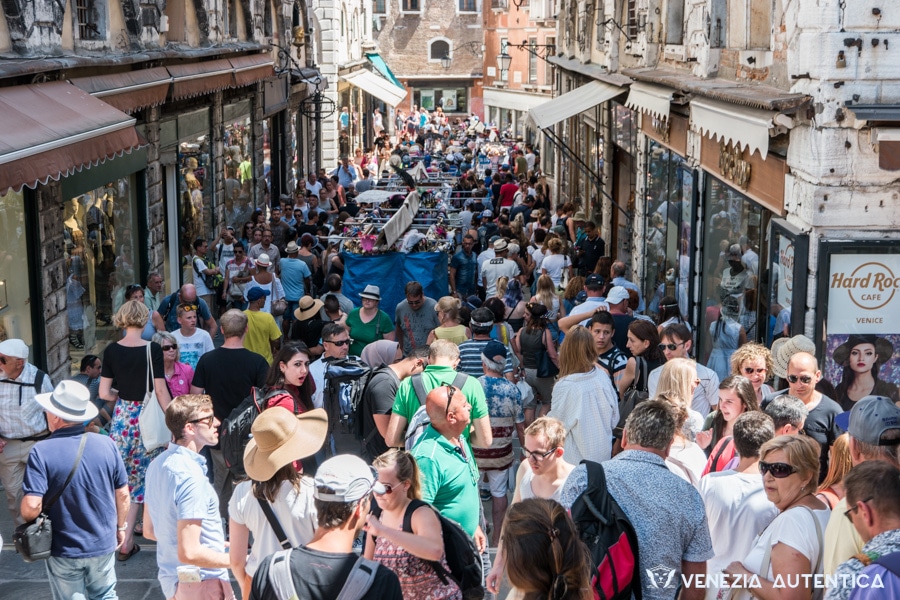
To make things worse, Venice cannot provide picnic or resting areas because of its small size and its morphology, resulting in visitors sitting down for resting and eating on bridges, narrow alleys, house doors and shop windows blocking even further the already jammed city.
Even though they are not perceived as such, alleys and bridges in Venice are the equivalent to streets and crossroads in other cities. Blocking them is a guarantee for Venetians to get angry at you.
Related: You asked, We answered: 19 things you might not know about Venice, Italy
Another effect of this approach to visiting the city is the impossibility for day-trippers themselves to take the time to appreciate the city and to understand what is genuine and worth their money, and what is absolutely not.
Foreign investors and investment funds have decided to take advantage of this situation by purchasing shops on the busiest paths to display their cheap/very cheap merchandise, luring in the passing tourists and selling mass-produced plastic goods which, at best, are of no value. At worst, they have been found to be toxic.
One more problem is that Italy has a high unemployment rate but no minimum wage, and these businesses, in particular, exploit the situation even further: employees struggle to live even in Mestre (which has much lower rents), while the company they work for is destroying local and family businesses and artisans’ shops.

Unlock a discount at the best local businesses in Venice
The investment race for selling 99cents souvenirs has led to a spike in the price of shops and rents that forced many genuine local activities, which were not aiming at masses, to try and move to less visited and therefore less expensive areas.
Because of the day-trip approach and the ever-decreasing local population, however, those less-visited areas struggle to have enough customers, leading an ever-increasing number of local activities to close and never to open again.
Related: Interactive Local Map Of Venice, Italy
This lack of opportunities and the negative outlook for young Venetians is leading more and more people to leave the city, well knowing that they will never be able to come back unless the current situation changes.
Are the negative effects of mass tourism in Venice really that bad?
The situation we just described could seem to be a bit too gloomy to you, maybe a result of a pessimistic approach.
The considerations we made, however, are perfectly in line with UNESCO’s last report about the current situation of “Venice and its Lagoon”, which lead the institution to consider putting Venice on the UNESCO World Heritage in Danger list in 2017.
Related: Venice to be or not to be a UNESCO World heritage site, that is the question
Is there any chance for Venice?
We are convinced there is still hope for Venice, of course!
Our strong determination and optimism make us believe it is possible to change this very negative trend and to improve the life of the Venetians, the health of the city, and the quality of the stay of the visitors… but we don’t trust the authorities for making this change happen.
We believe that Venice can prosper again, but only thanks to the people like you and us.
We believe that YOU can make a difference! Travel Responsively, please.

Book an authentic experience in Venice
Here's how you can start making a positive impact in venice.
- Unlock your discount at our partner selected authentic local shops, bars & restaurants. You’ll help us build a better future for Venice and the Venetians
- Book an authentic experience or walk with a local
- Eat, Shop, Drink local: Visit and Support our certified local businesses
- Experience Venice like a Venetian: See our interactive map of Venice and our tips
- Hire Venetians to help you with your needs and services in Venice
Make sure to check out the resources below to make the best out of your stay in Venice, while making a positive impact on the local community.
We count on you!
YOU CAN SUPPORT VENICE AND THE VENETIANS BY TRAVELING RESPONSIBLY
I'm visiting Venice. Why should I follow your recommendations?
The way you visit Venice has an impact both on the quality of your experience and on Venice itself. Chilling, exploring , shopping , eating and drinking where the locals do, can make a huge impact both on the memories you bring home and on the local economy and community.
POPULAR POSTS LIKE THIS
- Best Places where to eat and drink like a local in Venice
- Interactive map of the best authentic local businesses and places where to eat & drink in Venice
- Why eating and drinking at authentic local businesses matters
Liked this article? Don’t forget to share the love!
Home >> Visiting Venice >> Tips and Inspiration >> You’re Here
Tips and Inspiration to experience Venice
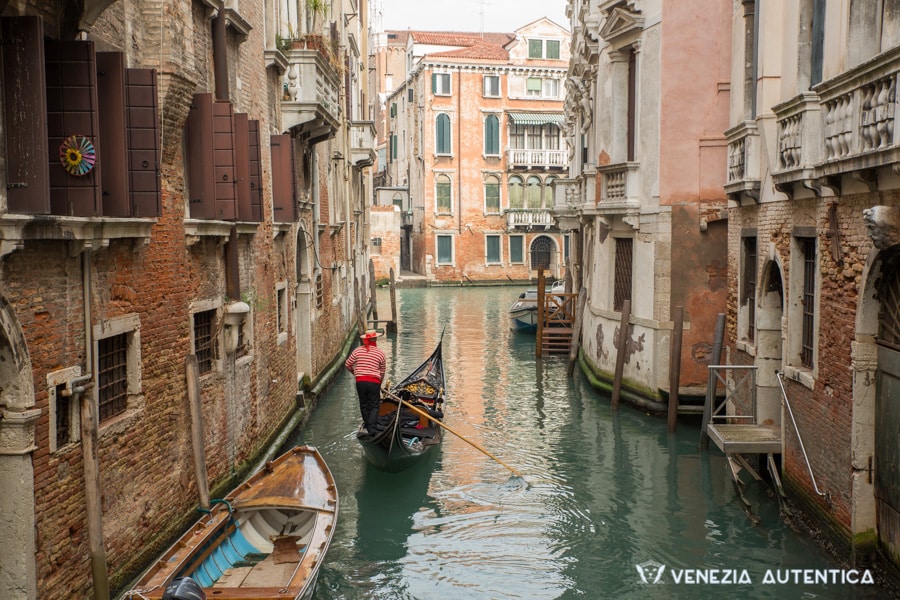
Want to go on a gondola ride in Venice? Here’s everything you need to know!
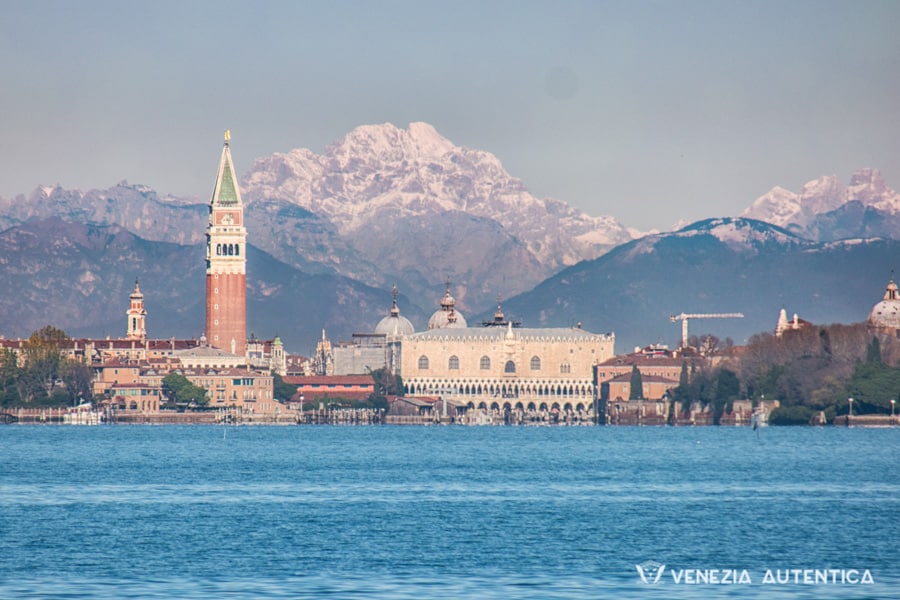
How’s the weather in Venice, Italy? We’ve got you covered!
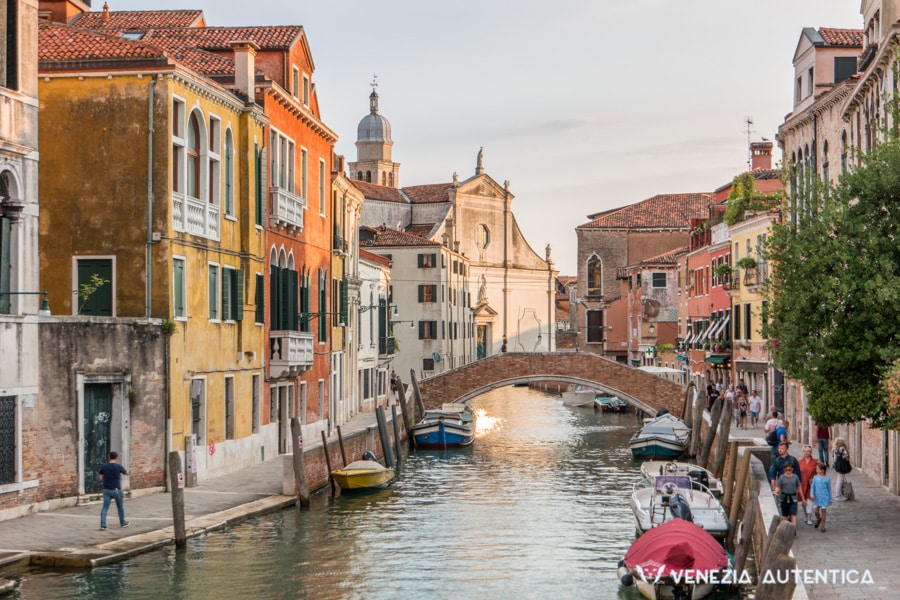
The ultimate guide to the top 10 things to do and see in Venice, Italy
More in Visiting Venice
Go to Visiting Venice >>
- February 12, 2022
You might also like
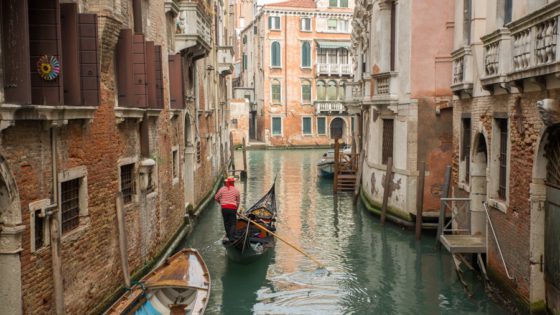
Want to go on a gondola ride in Venice? Here’s everything you need to know!
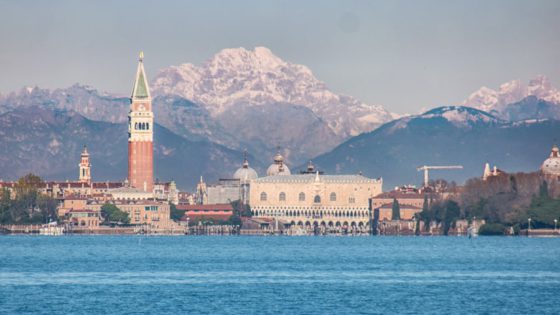
How’s the weather in Venice, Italy? We’ve got you covered!
![negative impacts of mass tourism From a local event to an international rowing appointment in Venice, Italy: La Vogalonga [VIDEO+PHOTO] - Venezia Autentica | Discover and Support the Authentic Venice - In Venice, tourism is not sustainable. Discover the impact of the travel industry on Venice and how sustainable tourism can help saving the city](https://cdn1.veneziaautentica.com/wp-content/uploads/2016/05/0i5c0448-custom-560x315.jpg)
From a local event to an international rowing appointment in Venice, Italy: La Vogalonga [VIDEO+PHOTO]
- ONLY PRIVATE TOURS AND ACTIVITIES
We make it easy to experience Venice with local guides and experts
- 100% GUARANTEED LOCAL AND IMPACTFUL
Looking for things to do in Venice? Experience Venice with a local!
We’d love to chat.
Let us know
how we can help

IMAGES
COMMENTS
But the negative impacts of tourism on the island are readily apparent. With around 1.3 million residents in 790 square miles, Mauritius is among the countries with the highest population density in the world. ... While few studies have been conducted on the environe impacts of mass tourism, it's impossible to imagine that hundreds of 4x4s ...
A French start up, Murmuration, which monitors the environmental impact of tourism by using satellite data, states that 80% of travellers visit just 10% of the world's tourism destinations ...
Why cities like Venice don't want mass tourism. 02:50 - Source: CNN. ... it needs to be regulated and managed locally to prevent negative impacts," says Justin Francis, ...
The Causes of overtourism. More than 1.4 billion people are moving around the world every year, and they are growing at an exponential rate. The World Tourism Organisation predicts that by 2030 the international flow of tourists will exceed 2 billion.This very high number of people focus on a few tourist destinations in the world, which suffer from the excessive presence of tourists.
Here we outline the complexities of overtourism and the possible measures that can be taken to address the problem. The term 'overtourism' has re-emerged as tourism recovery has surged around the globe. But already in 2019, angst over excessive tourism growth was so high that the UN World Tourism Organization called for "such growth to be ...
Some 11.8 million visitors flooded Mallorca in 2019, dwarfing the local population of under a million. The cost of living has skyrocketed, a trend aggravated by the conversion of family homes into ...
Overtourism is the antithesis to this, tourism is using the place and degrading it. Overtourism describes destinations where hosts or guests, locals or visitors, feel that there are too many visitors and that the quality of life in the area or the quality of the experience has deteriorated unacceptably. It is the opposite of Responsible Tourism ...
Tourism has the potential to help overcome its negative impacts discernible though overtourism by contributing toward the United Nations' Sustainable Development Goals (SDGs) (Leung et al. 2018, p. 6).Tourism has been recognized to play a role in achieving sustainable economic growth (SGD 8), in contributing toward sustainable consumption and production (SDG 12), and investing efforts to ...
The sociocultural impacts tend to generate negative effects and can lead to the loss of culture, staged experiences, and overexploitation of cultural resources for tourism purposes (Page 2012). Mass tourism is also blamed for a wide range of negative environmental effects, such as overcrowding, air and water pollution, depletion and degradation ...
1. Introduction. Mass tourism produces a very negative ecological and social impact, and although it generates substantial economic benefits, they are generally unevenly distributed (Chong, 2019; Fang et al., 2021).It could have been expected that the COVID-19 pandemic might have constituted a decisive tipping point for a deprioritising of the economy, considering the tourism system as a means ...
The long-term effects of mass tourism on a destination's economy can be both positive and negative. On one hand, it can provide a significant boost to the local economy through job creation and increased revenue from visitor spending.
The negative impacts of mass tourism can be significant, and it is crucial to find a balance between economic growth and sustainable tourism practices. Economic Aspects of Mass Tourism. Mass tourism can have a significant impact on the economy of a destination. It can generate income and create employment opportunities, but it can also put a ...
The negative environmental impacts of tourism are substantial. They include the depletion of local natural resources as well as pollution and waste problems. Tourism often puts pressure on natural resources through over-consumption, often in places where resources are already scarce. Tourism puts enormous stress on local land use, and can lead ...
Travellers were seldomly aware of the many negative impacts the tourism industry could have on people and culture. Local people grew weary of poor working conditions, lifestyle changes, and cultural loss brought on by mass tourism. A fear of losing tourism dollars often led to management strategies that submitted local natural and cultural ...
In fact, Overtourism translates into irreversible, negative, environmental effects, which may change forever the uniqueness of certain destinations. ... SET (Sud-Europe facing Overtourism): a network created by 15 European cities to denounce the destructive effects of mass tourism and promote the research for a new touristic system. Mass ...
Abstract. Negative impacts associated with allowing mass numbers of people into one area occur in a variety of ways. Overcrowding at an attraction creates issues with vandalism, litter, theft and degradation of the site, which in turn impedes tourists from experiencing full satisfaction with the destination due to these problems.
Adverse Effects of Mass Tourism 4. Chong's research (2020), traffic congestions created by mass tourism is one of the most. common annoyances among locals about visitor presence in their home ...
You can read more about the positive economic impacts of tourism here. Negative impacts of mass tourism. Mass tourism has gained a pretty bad reputation in recent years. If you Google the term 'mass tourism' you will be largely greeted with articles that discuss the negative impacts on the environment and society.
The negative environmental impacts of tourism. Tourism sector has great influence over wellbeing of local residents. It is an industry that flourishes in large cities as well as remote rural areas rich in natural wonders. For many distant communities, tourism is the only opportunity of generating sufficient income to sustain their lifestyle and ...
Negative social impacts of tourism. Social Change. Globalisation and the Destruction of Preservation and Heritage. Loss of Authenticity. Standardisation and Commercialisation. Culture clashes. Tourist-host relationships. Increase in crime, gambling and moral behaviour. Social impacts of tourism: Conclusion.
Mass tourism can have profound social and cultural impacts on the destinations and local communities it attracts. While tourism can bring economic opportunities and cultural exchange, the rapid growth and influx of tourists can also have negative consequences. Here are some key social and cultural impacts of mass tourism: 1.
This chapter will critically examine the impact of mass tourism development on destination areas in Turkey, focusing particularly on the negative effects. In so doing, we do not intend to deny or minimize the benefits deriving from mass tourism development. Rather, we are making the point that mass tourism development has not been without costs ...
An increased cost of living. Higher cost of housing. A decrease in quality of life (traditional shops replaced by low-quality souvenir shops, constant, for example) Lack of spaces for the youth. Lack of rewarding job opportunities. All of the above can be linked directly to the impact caused by the dramatic increase in mass tourism in Venice.